
2025 Pulse Polls
On News and Information Habits
On Meaning Making





















Insights: At a Glance
Content Curation
The majority curate the content they read, listen to, or watch, with another 38 percent saying they rely on a mix of self-curated content, algorithms and their own networks.
Most are not regularly looking for perspectives outside of their regular networks or feeds.
Role of New(er) Media Sources
E-newsletters and curated digests are influential and trusted, with nearly half of communicators saying the growth of these sources influences the news and information they consume.
Social media, particularly Instagram and LinkedIn, is relevant to their media diets, too but less trusted for accurate, work-related information.
Scanning and Meaning Making
Communicators look to a mix of sources, including media, partners, and the communities they serve, to track relevant conversations.
Across these inputs, they are monitoring shifts in their issues space and opposition activity and then filtering for audience impact and alignment with goals.
Applying Narrative Landscape Learnings
Insights from the narrative landscape are applied to inform strategy, messaging, and decision-making.
Emphasis is placed on partnership, with sharing and collaboration helping to amplify impact and collective understanding.
Over half report self-curating their own media diets
After newsletters and curated digests, social media is key part communicators’ media diets
Building Audience and Organizational Trust
Measuring Audience and Organizational Trust



















Insights: At a Glance
On Building Trust
Community is essential to building trust with key audiences, whether it be by working with community partners, centering the voices of those impacted, or being present in community.
Political polarization proves to be the top challenge to building trust.
On Trust in Their Organizations
Fifty-five percent say trust in their organizations among key audiences is “very strong”, with another 37 percent saying it is “somewhat strong”.
Trust appears to be relatively stable, if not increasing. Forty-six percent describe trust as having “stayed the same” over the past year, and another 41 percent report “increased trust”.
Mis- and disinformation are barriers for about a third of communicators.
Relative Value of Audience Trust
Just over a third of communicators report their organizations have specific goals related to audience trust.
This proves similar across organizational type, so foundations and nonprofits are similarly unlikely to use trust as a marker of effectiveness or performance.
How Trust is Measured
In addition to informal feedback and anecdotes, over half use digital metrics to track trust among key audiences.
Audience research is less common, though nearly half use surveys to measure trust.
About one in five do not measure audience trust in any way.
The current political environment is the biggest barrier to building trust
Goals and methods for measuring audience trust
Building Desired and Blocking Negative Outcomes
Internal Communications (in 2025)






















Insights: At a Glance
On Building
The balance of time among communicators leans towards building — that is time spent driving positive conversations and changes.
Internal dynamics, including organizational culture and leadership priorities, are the top factors driving the extent to which building is prioritized.
On Blocking
Blocking is most commonly employed because of external forces, whether it be a specific crisis or unfavorable policy environment.
A small number of communicators also describe blocking as a response to actions by the current administration.
Use of Internal Communications
The vast majority of communicators surveyed say their orgs have issued internal communications to employees to address the current administration.
This proves much higher than the proportion reporting they had issued public statements for the same reason in our February Pulse Poll.
Reasons for Issuing Them
Nearly all orgs that have issued internal communications have done so to respond to staff questions and concerns.
Many have also needed to issue them to relay information about federal funding cuts and/or executive actions.
Culture and leadership priorities drive a disposition towards building
69%
Say organizational culture influences how much their org prioritizes building
65%
Say leadership priorities influence how much their org prioritizes building
42%
Say audience engagement influences how much their org prioritizes building
Blocking is essential for managing reputation and navigating a difficult policy environment
56%
Say crisis or reactive comms needs influence how much their org prioritizes blocking
55%
Say an unfavorable policy environment influences how much their org prioritizes blocking
48%
Say public perception or reputational concerns influence how much their org prioritizes building
Many organizations have issued internal communications to address the current administration
Shifts from the New Administration
Comms Priorities and Challenges
External Communications

















Insights: At a Glance
Doubling Down on Mission
Reaffirming or strengthening communications about their core mission is the single biggest way communicators are adapting.
They are also taking a more reserved or cautious approach, with quite a few removing DEI and/or climate language
from communications.
Confronting New Realities
Fear of government retaliation or loss
of advocacy funding is a top communications challenge related to policy shifts.There is also fairly widespread concern about potential backlash for addressing sensitive issues.
External Communications Limited
Just over a third issued public statements in response to activities and actions taken by the new Presidential administration.
Nonprofits are twice as likely as private foundations to have made public statements.
Reliance on Owned Media
Communications are primarily being distributed across owned media channels, such as newsletters, and LinkedIn. Use of other social media channels has been less common.
Only 1 in 4 report using earned media to issue public statements.
Nearly all say communications have shifted since the start of the new Presidential administration
Most social sector orgs HAVE NOT issued any public statements
2024 Pulse Polls
Storytelling in the Social Good Sector
2025 Planning
Communication Channel Priorities
Gen AI




































Insights: At a Glance
In Focus: Storytelling
Nearly all communicators report using storytelling in their external communications.
While storytelling is widely used and important to organizations across the sector, there are barriers to its use. This includes lack of staff time, which is a common barrier.
Definitions of storytelling vary quite a bit, with most either describing the process or approach it enables or the intended goals when this tactic is used.
Social media, e-newsletters, and owned properties are most commonly used for storytelling. This is consistent with the channels and platforms communicators have consistently said were priorities for them this year (LinkedIn, e-newsletters, e-mail, Instagram, and Facebook).
2025 Trends to Watch
Storytelling should prove more common in 2025, with 57% of communicators across the sector saying they plan to use this tactic more often as compared to this year.
There is a widespread commitment to communications research, too, with three-quarters indicating they plan to conduct some type of research next year. Right now, much of the planned research is described as strategic or planning in nature, though this may come into clearer focus as communicators begin scoping out this work.
Additionally, staff training is a top priority for the coming year, with just over half saying they plan to invest in this in 2025. Many communicators will also be adding specific tools to their toolkits. This includes AI, video or audio, and content creation tools.
Storytelling in the Social Good Sector
2025 Planning
Internal Communications
Comms for Good Events
Communication Channel Priorities
2024 Presidential Election
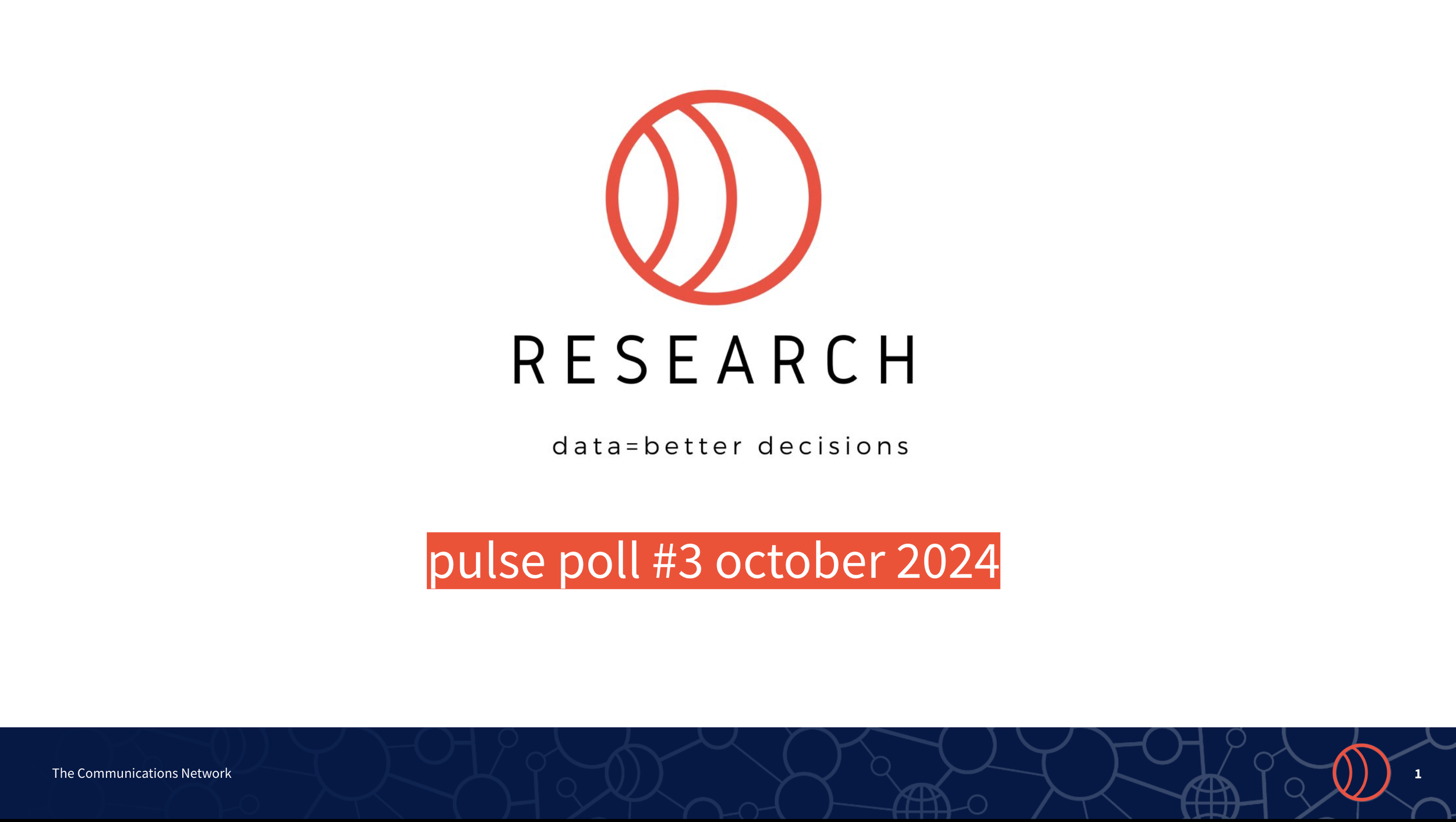
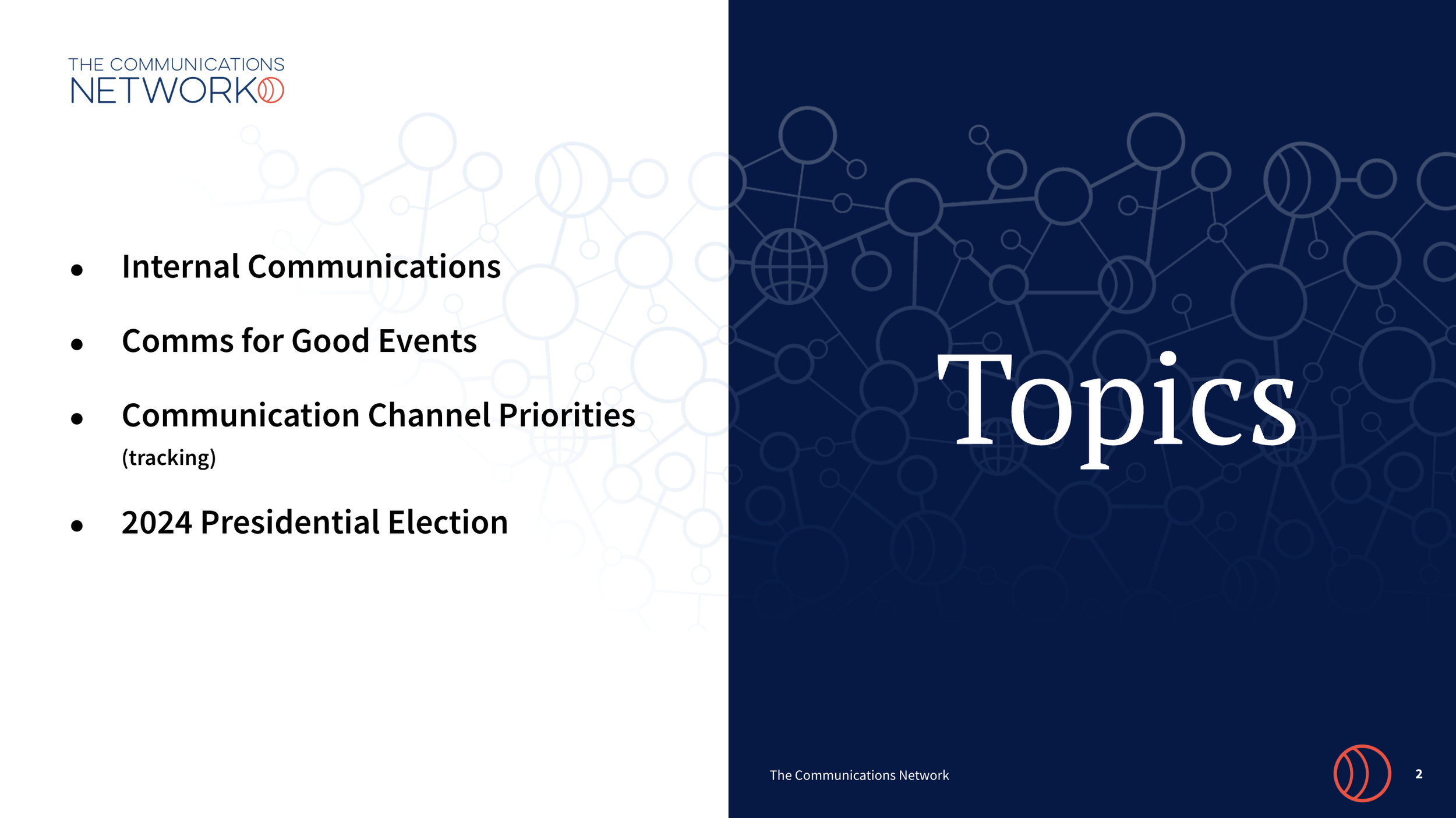
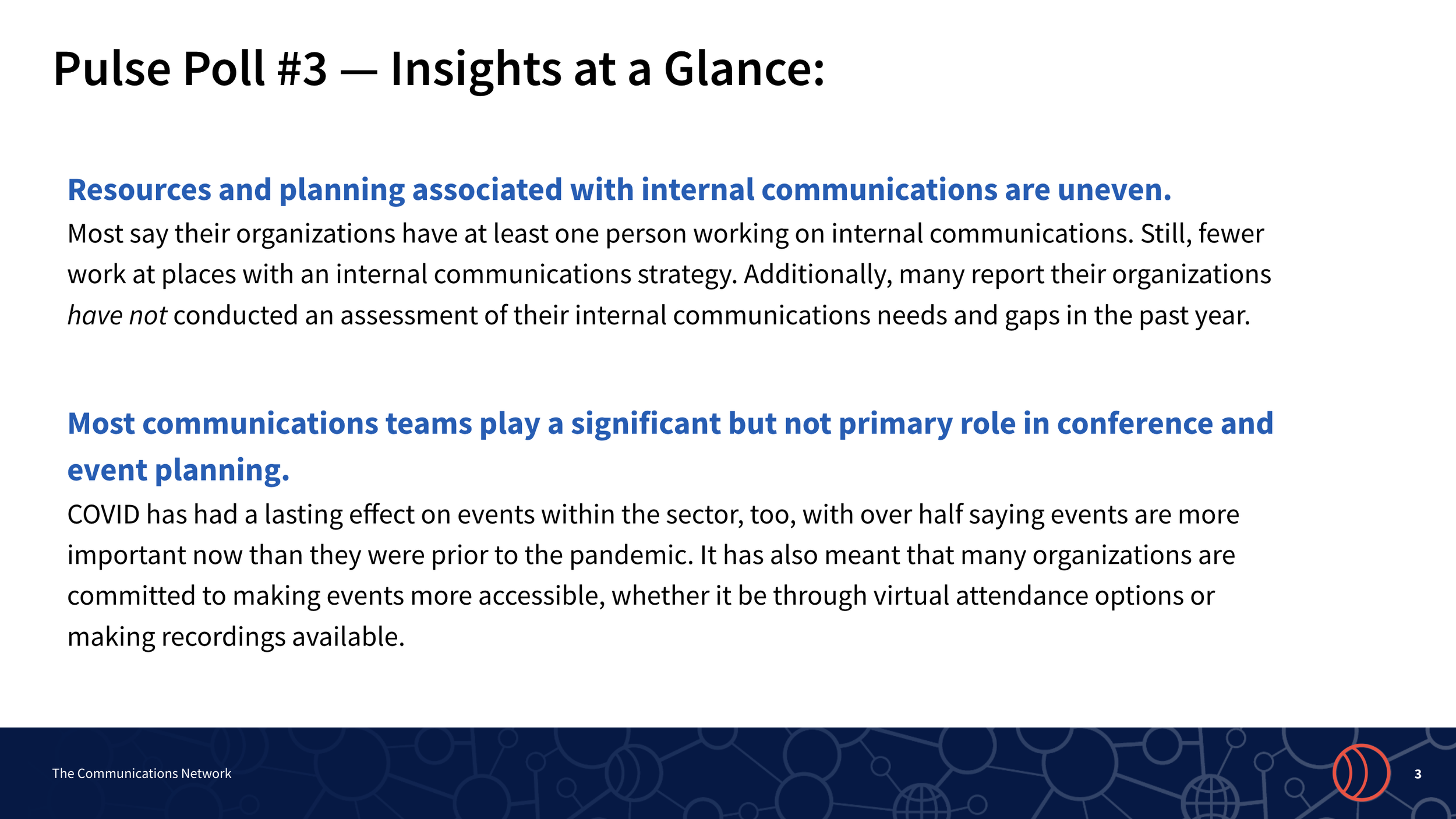
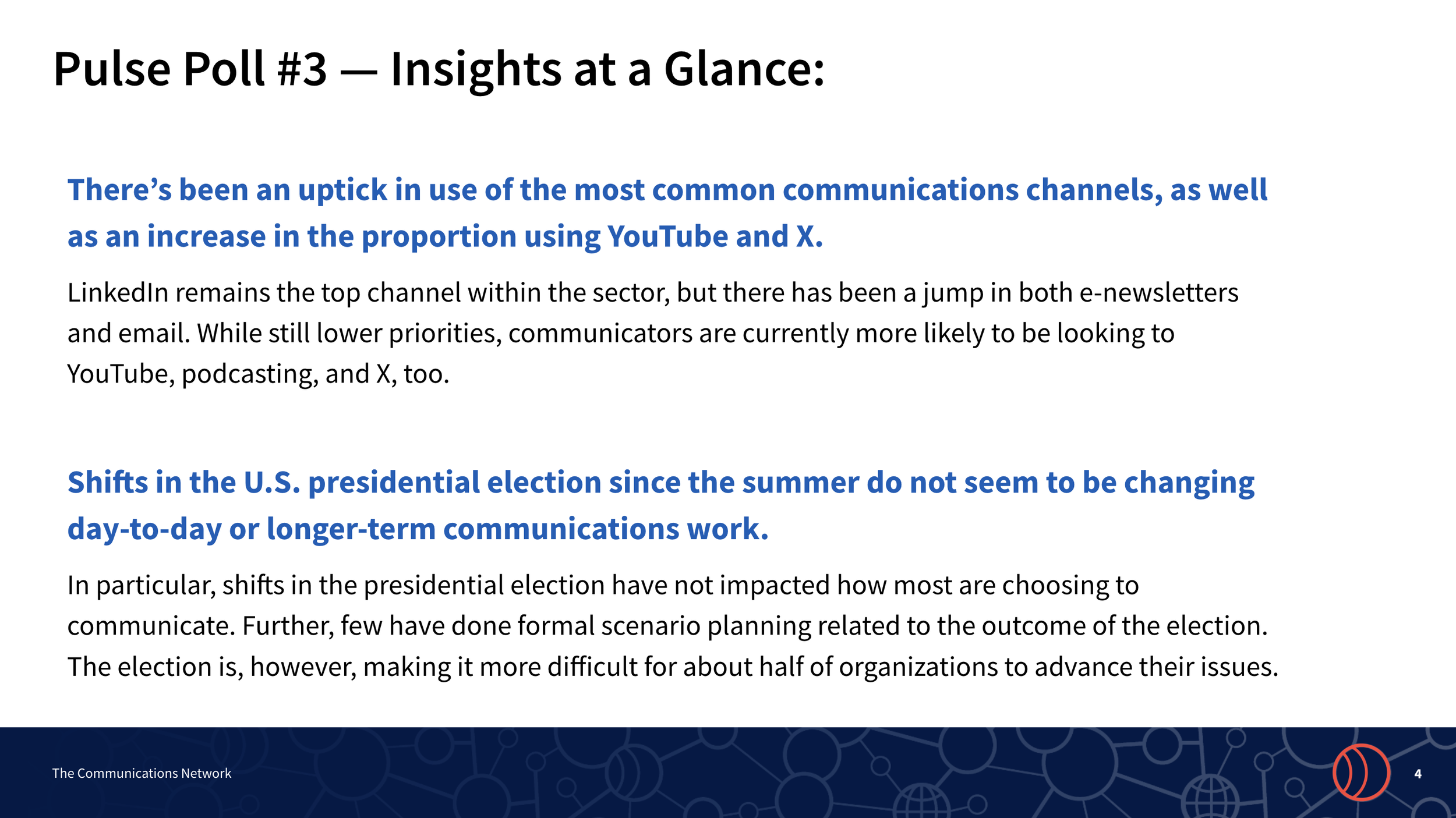
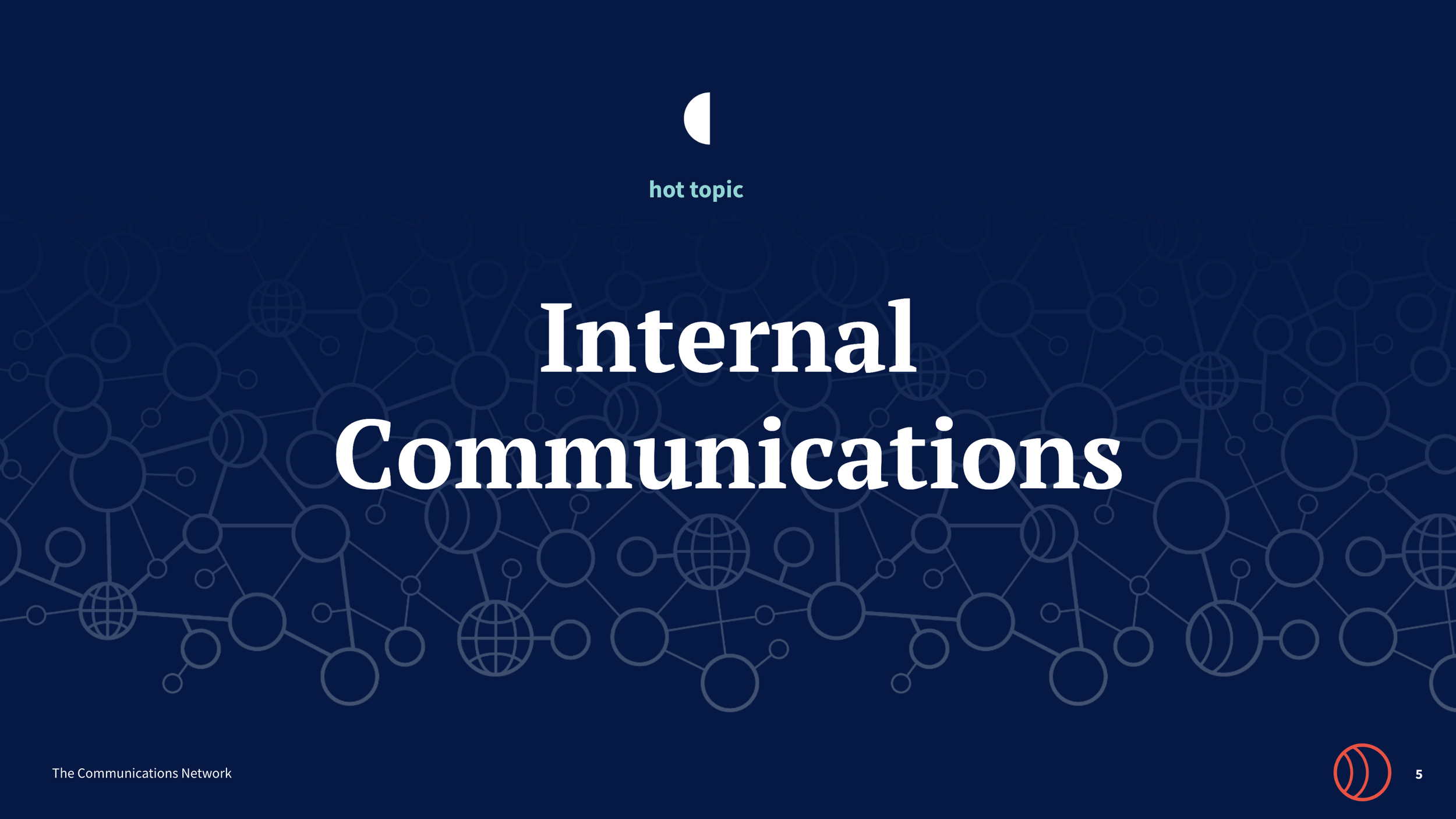
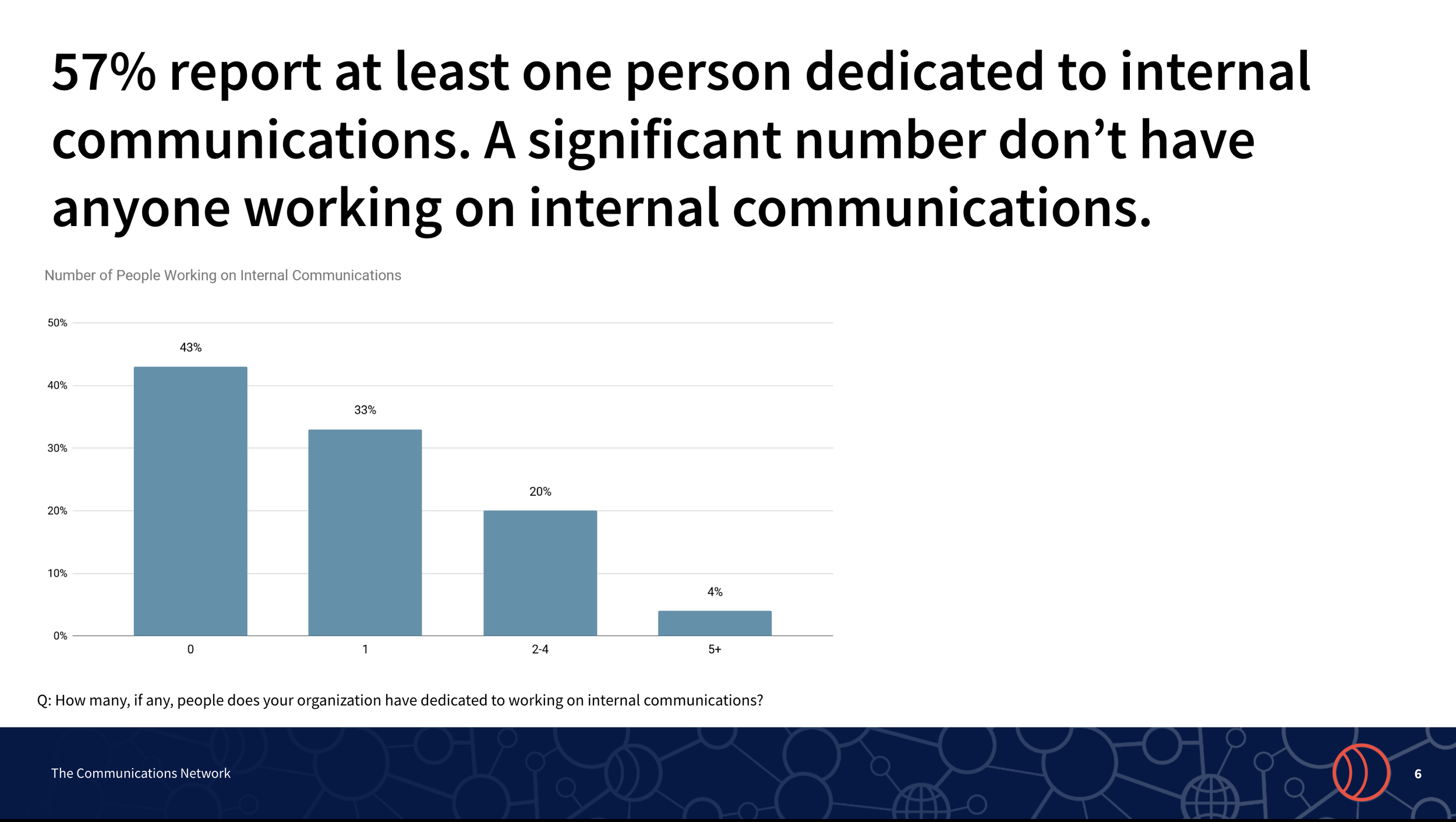
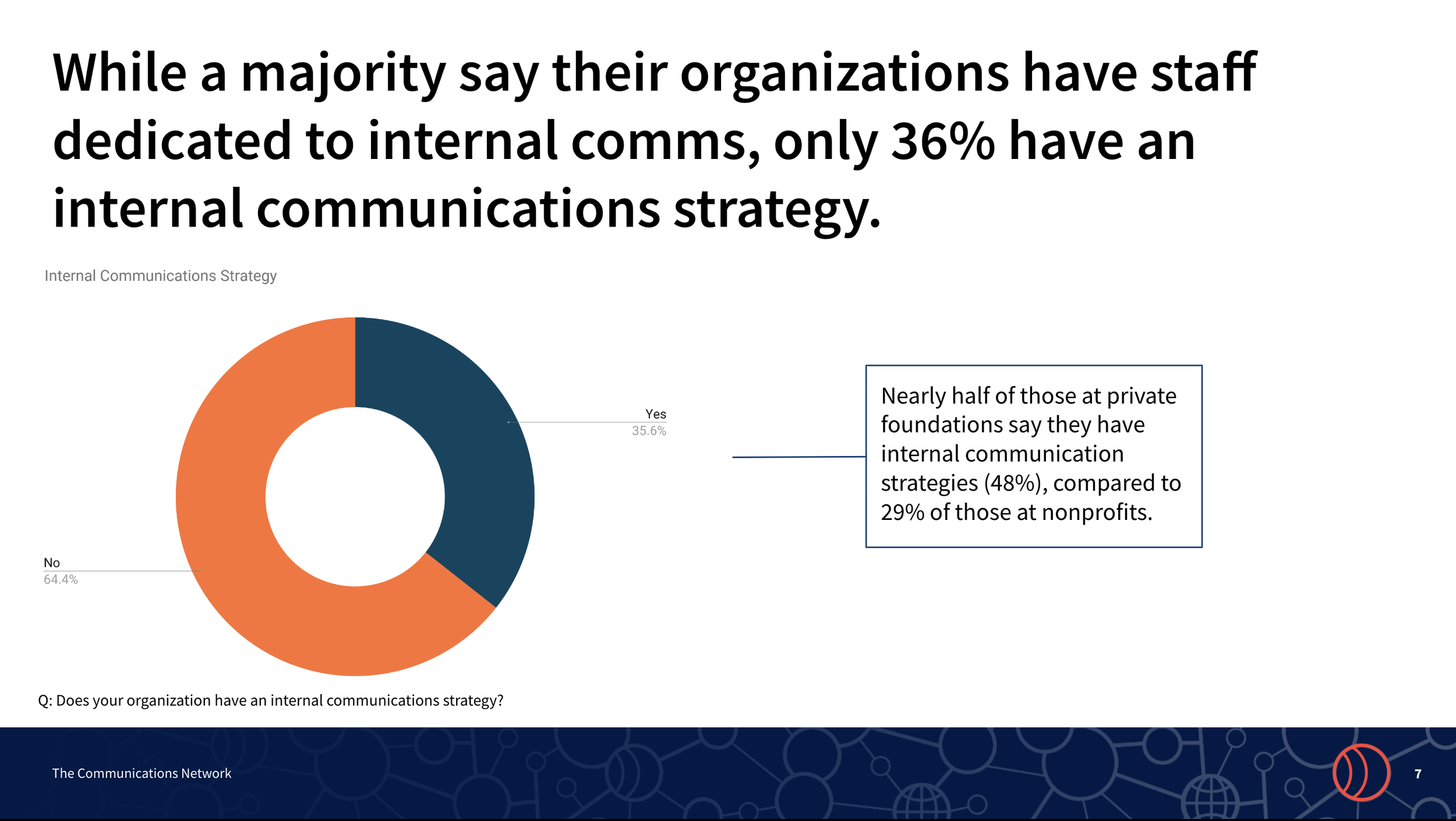

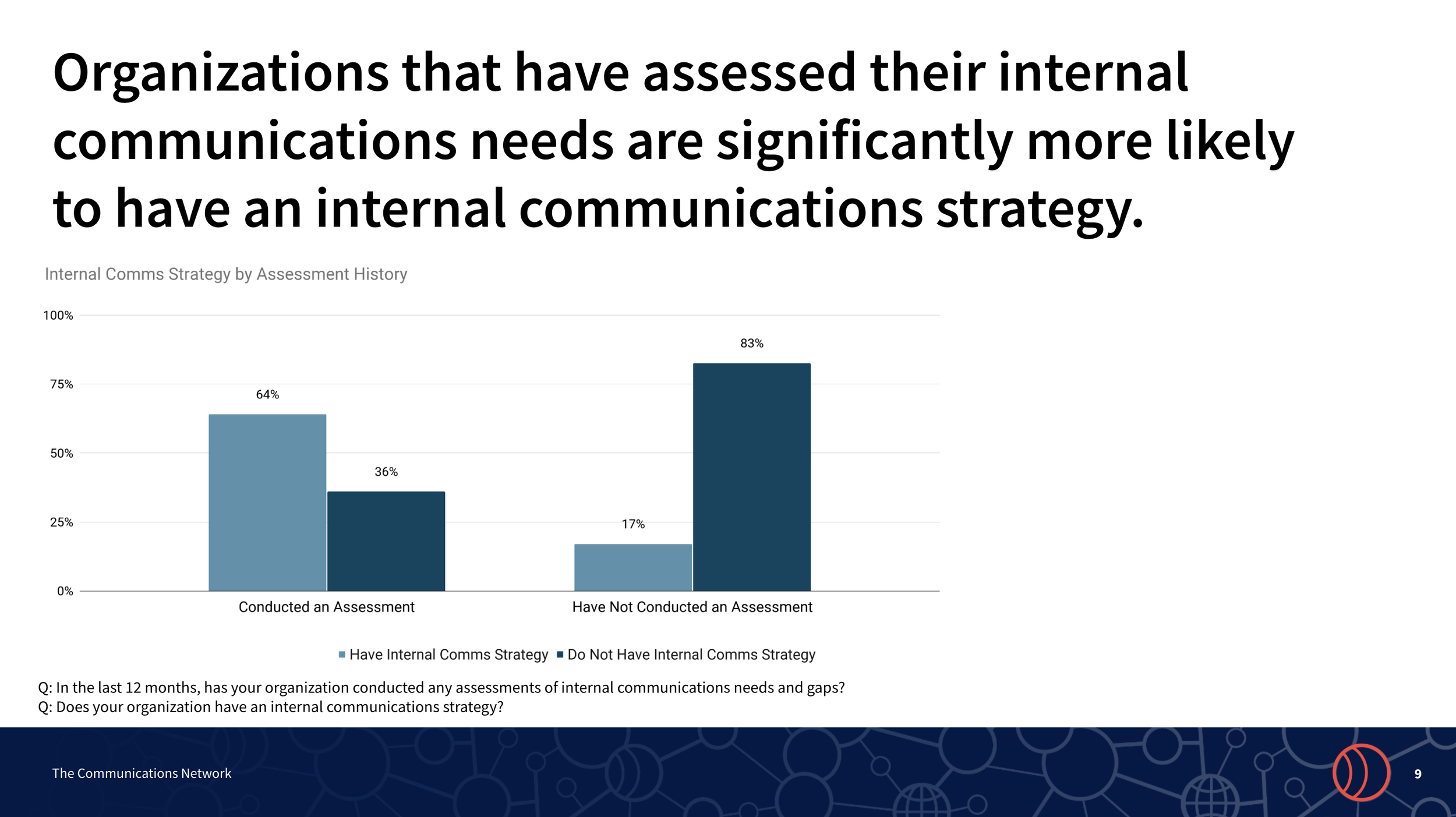

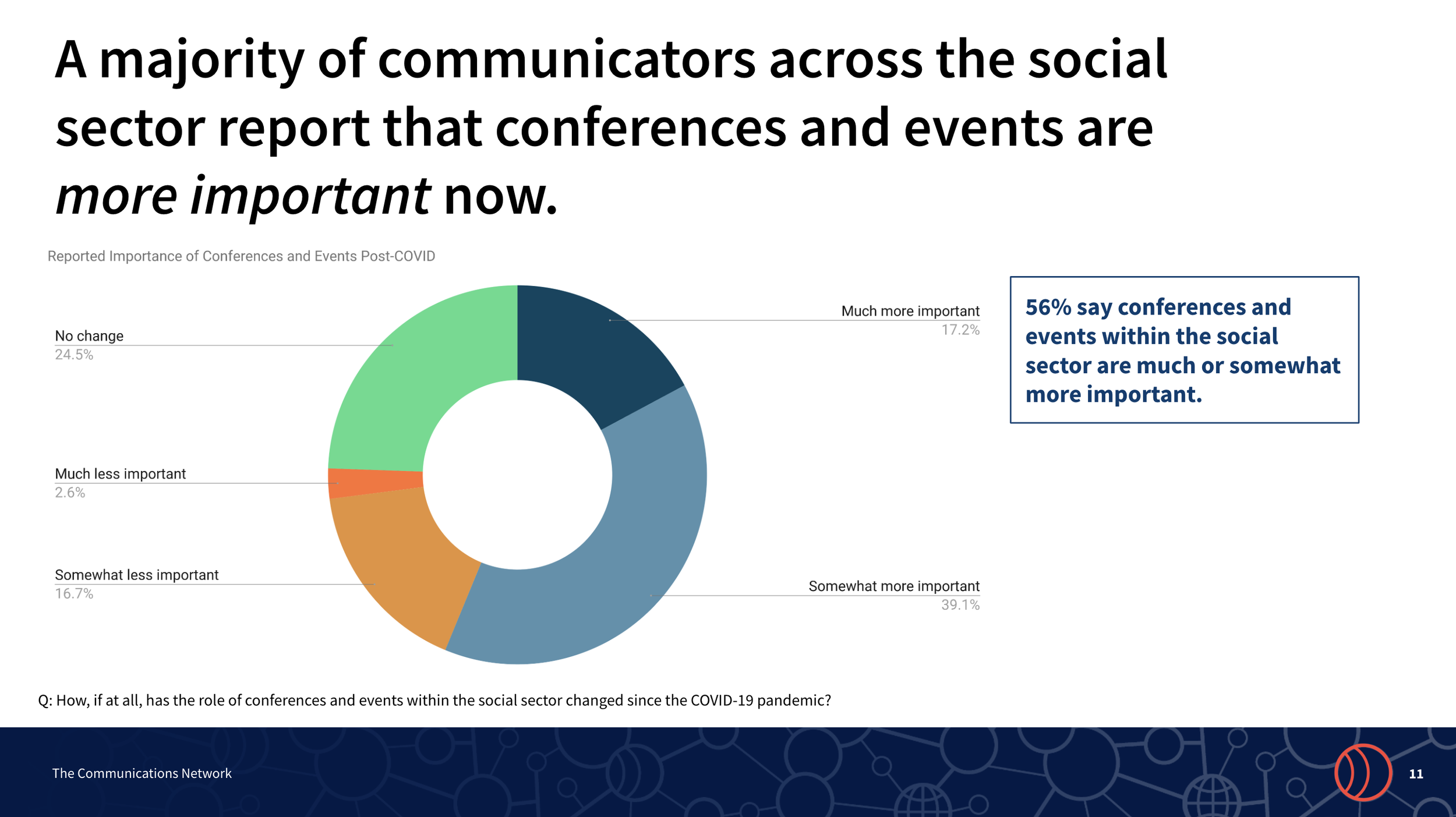
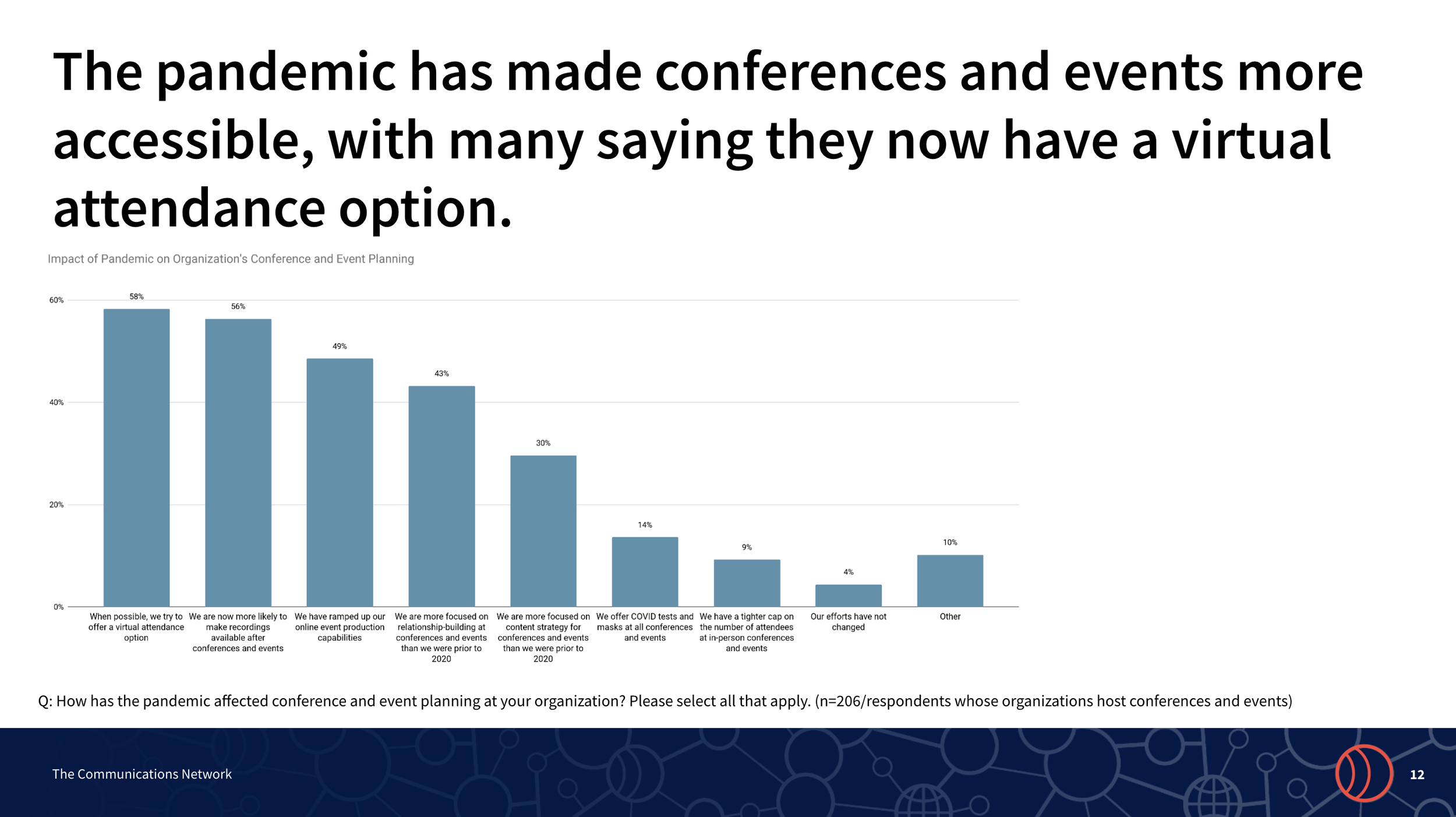
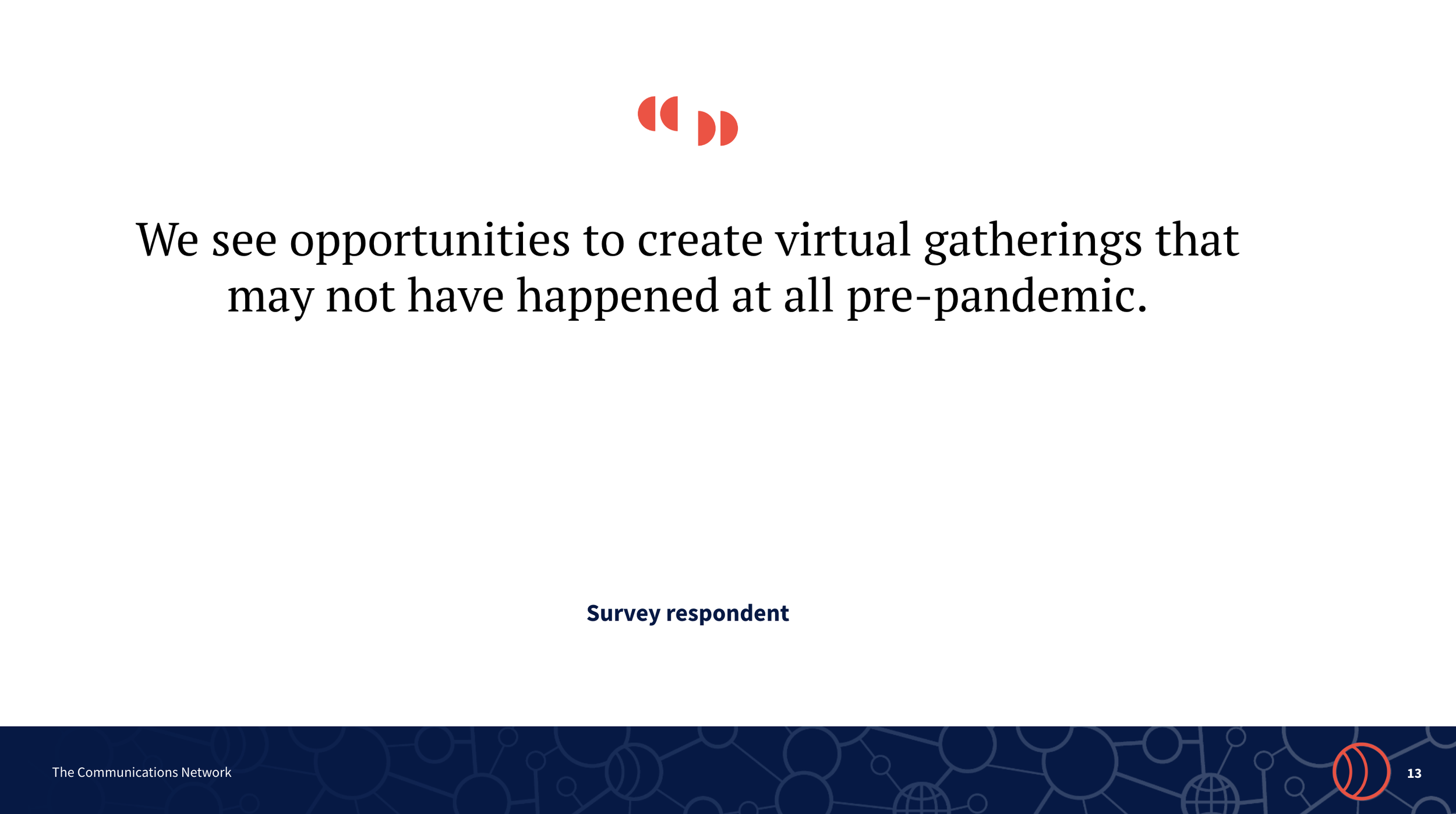
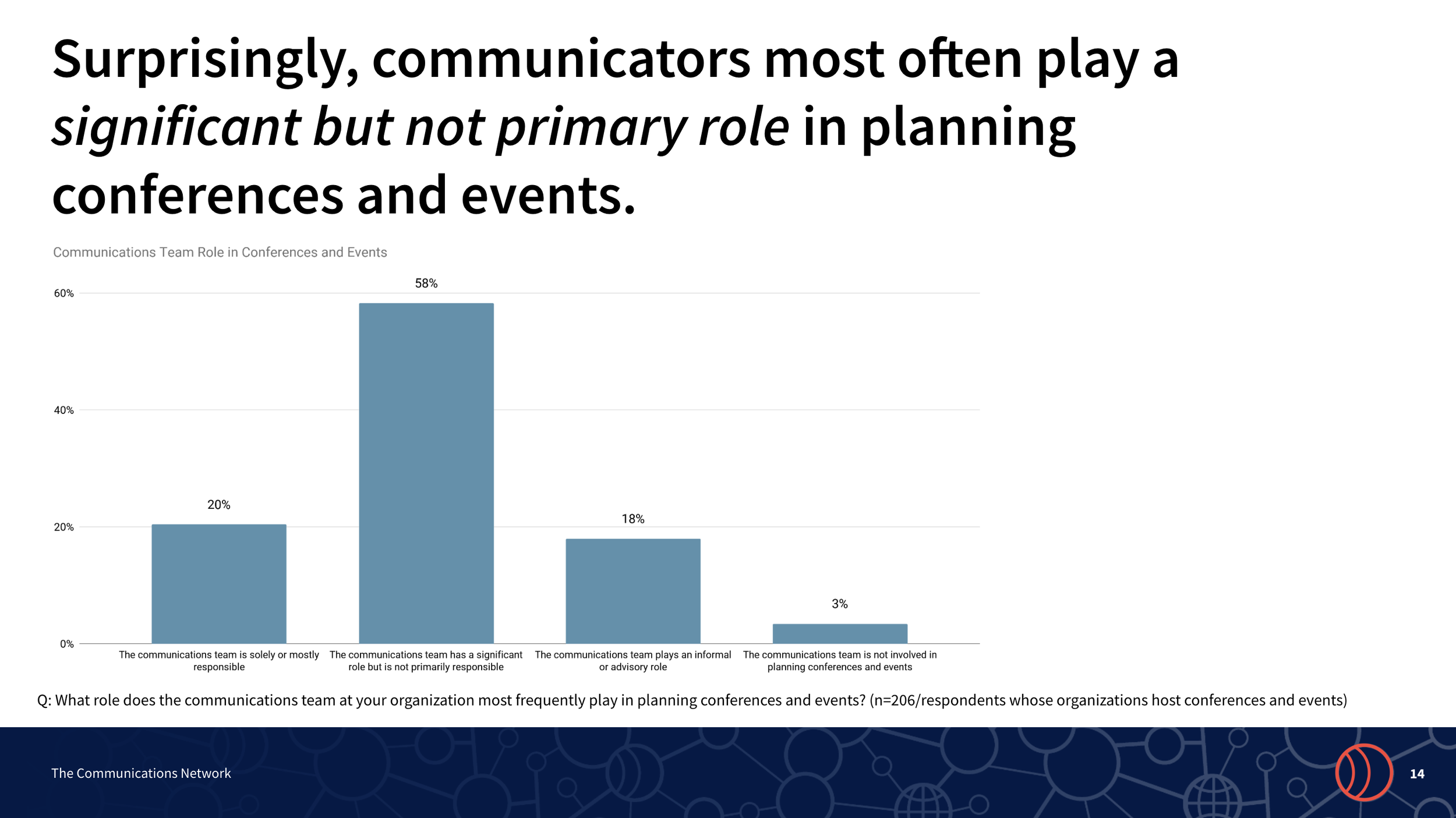
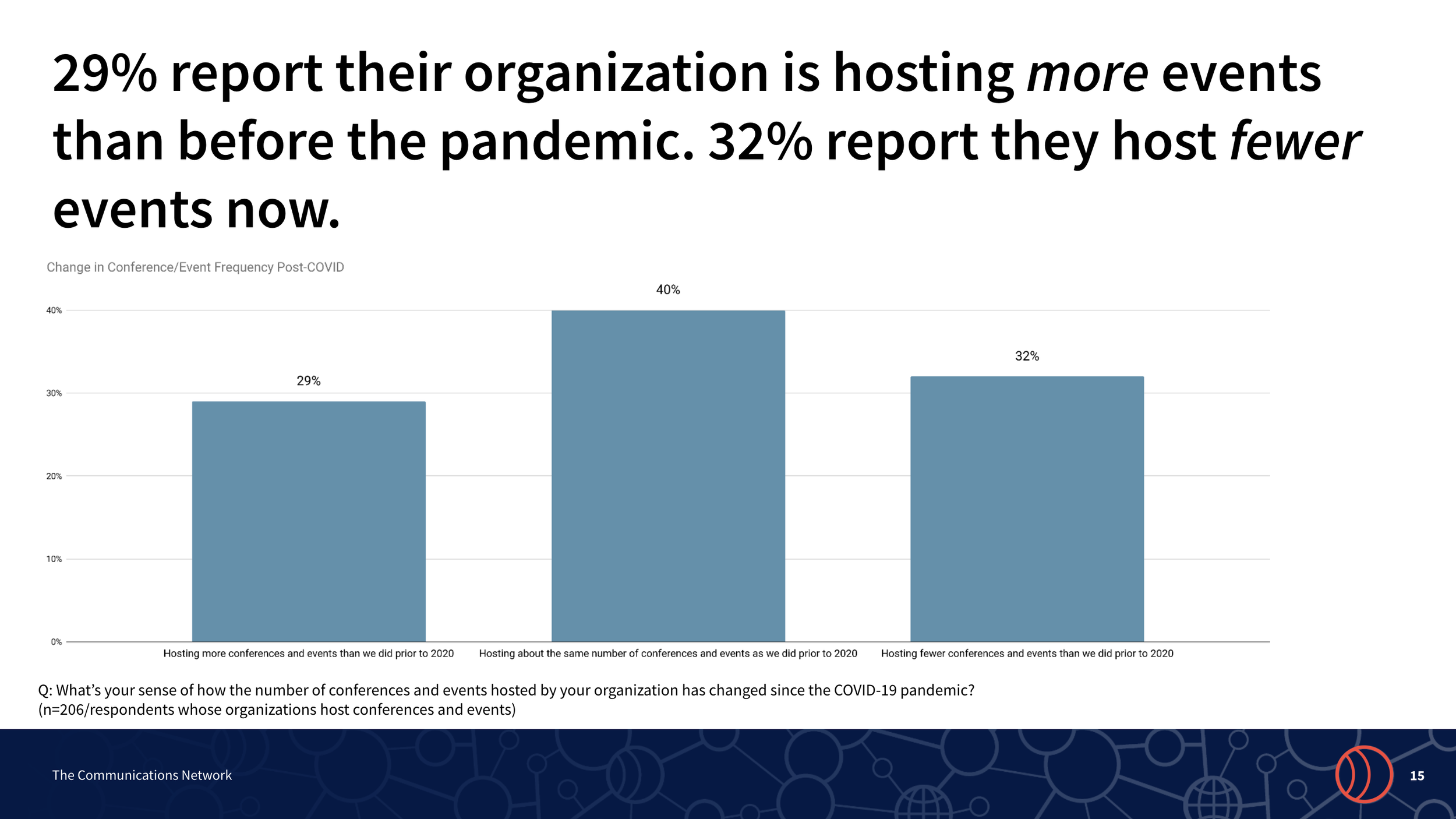
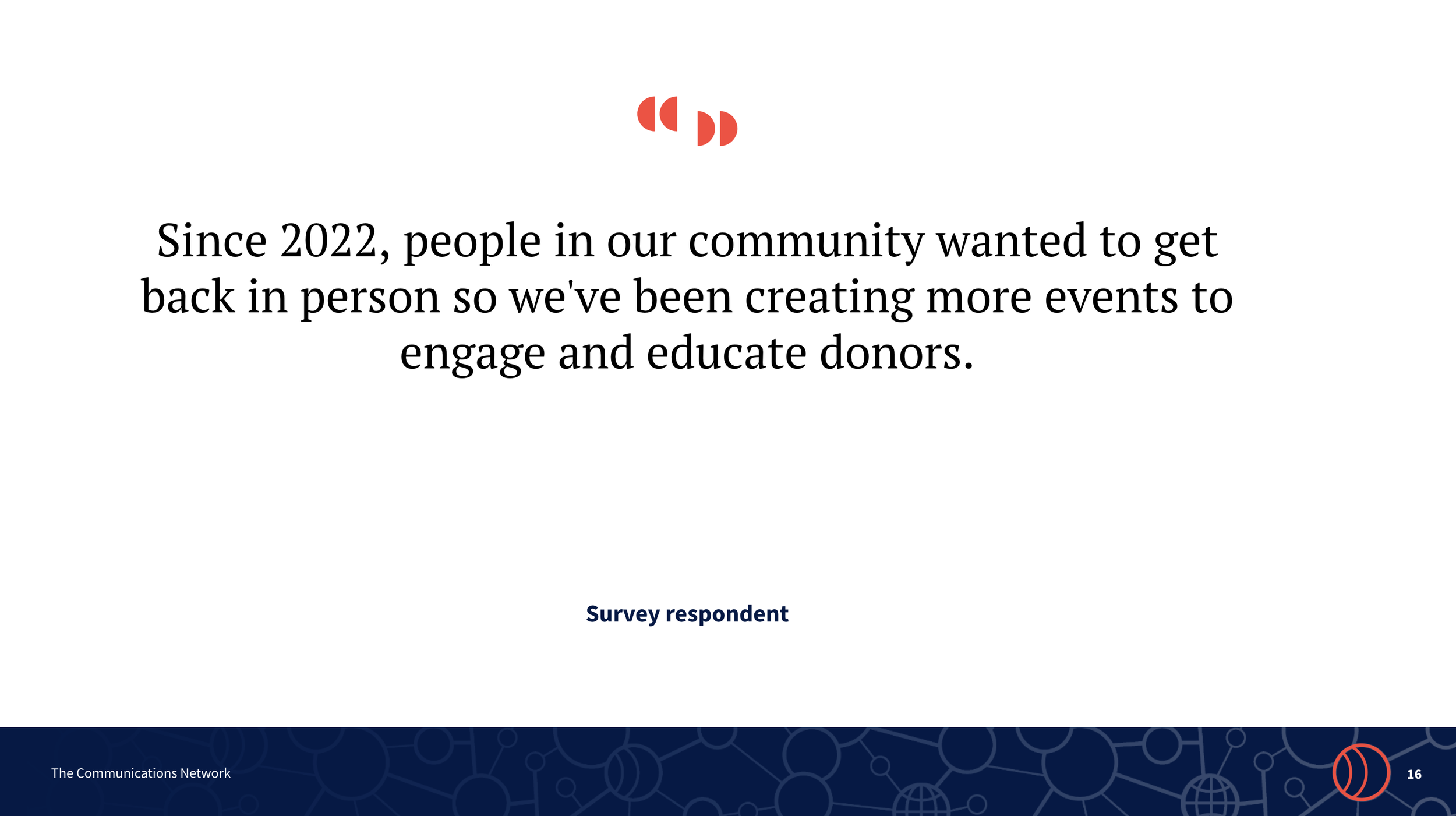
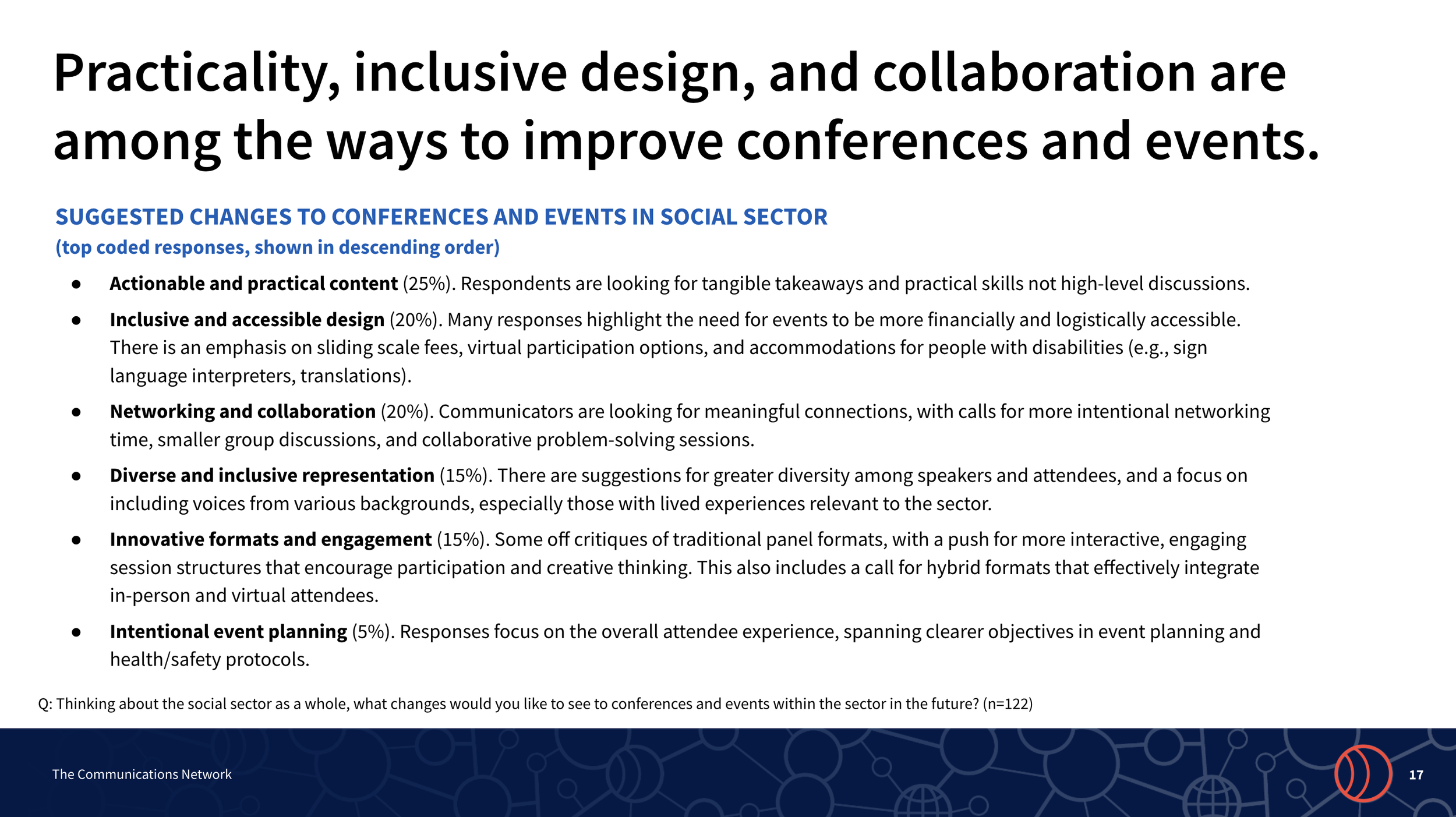
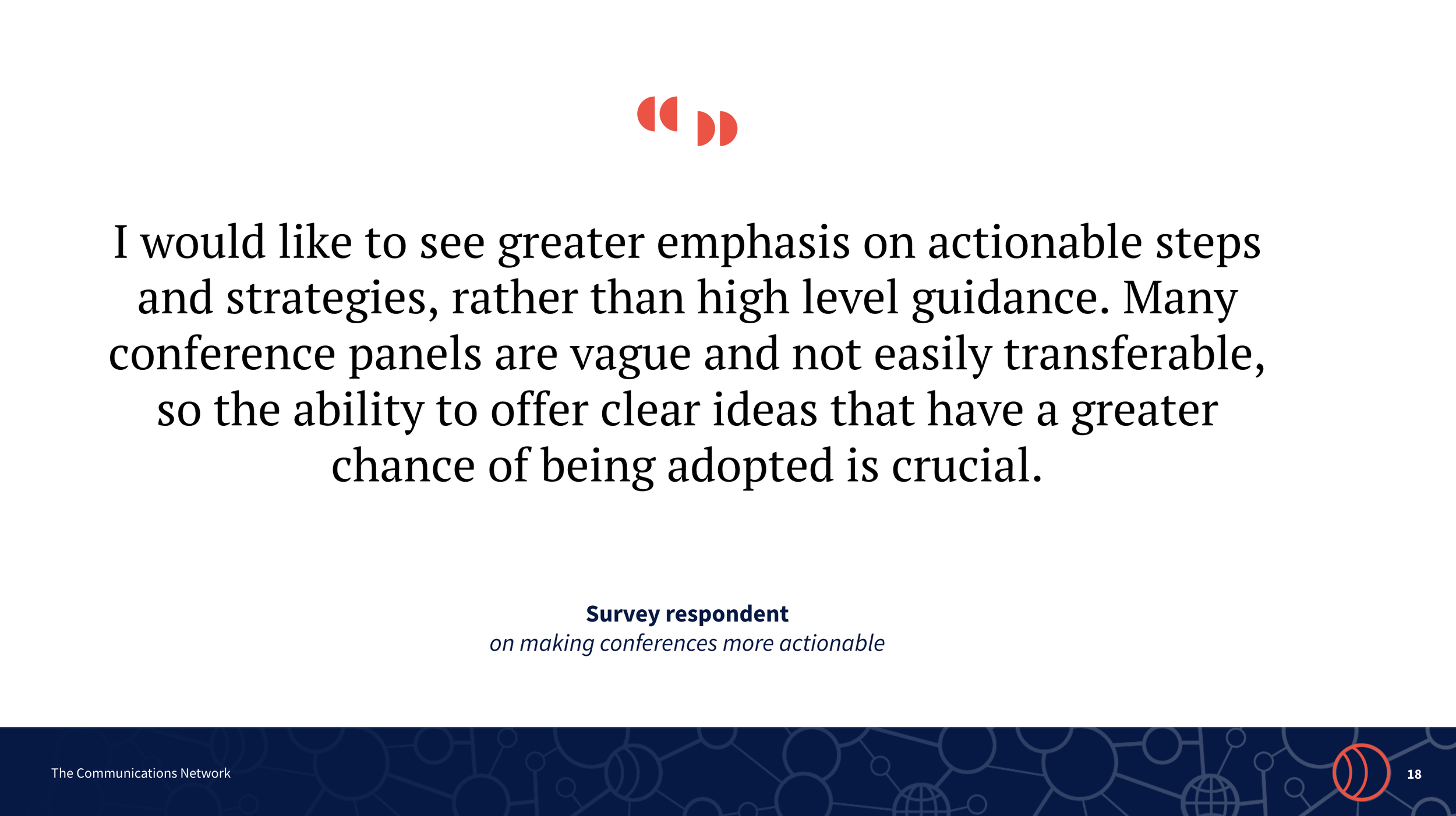
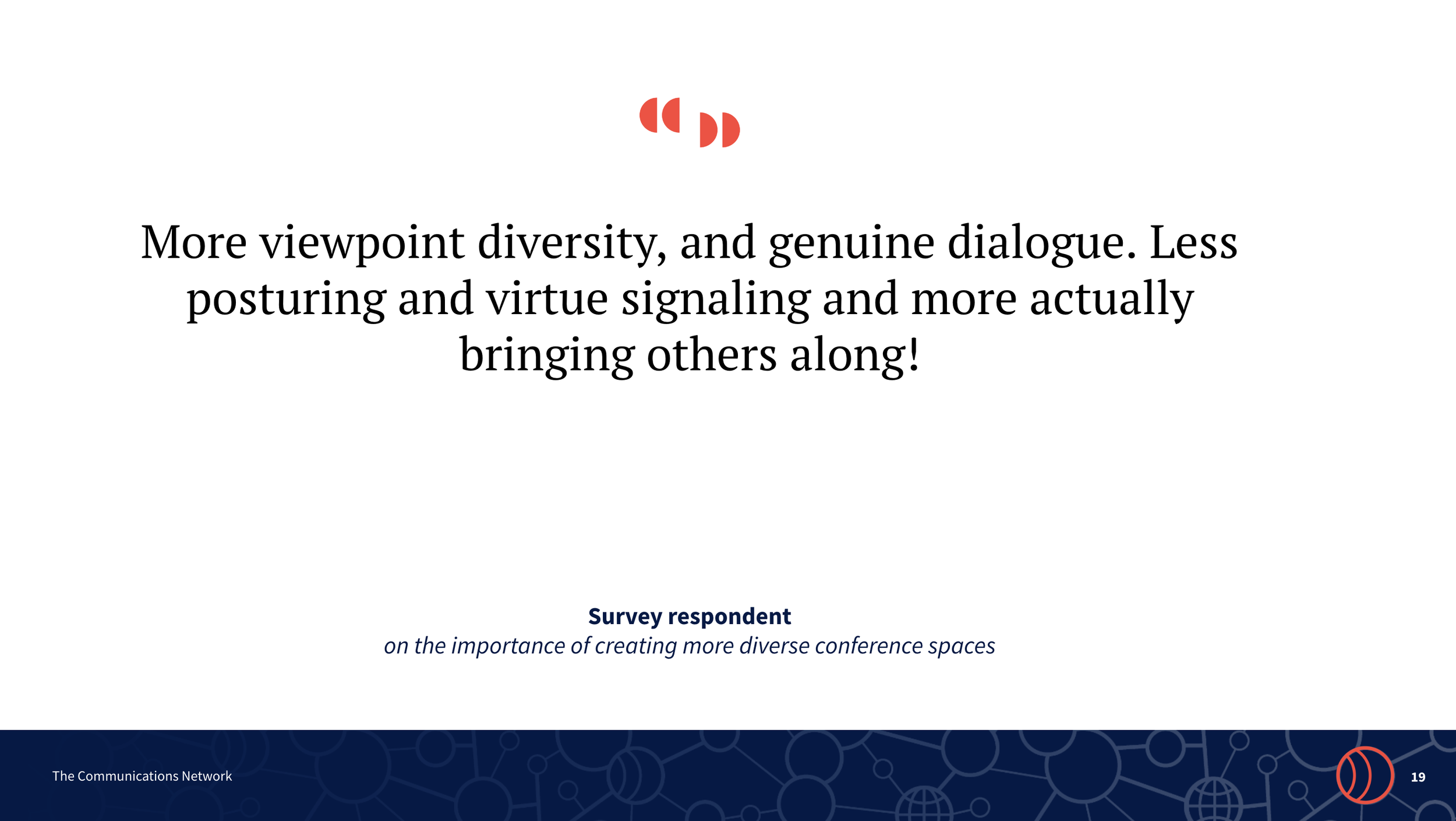
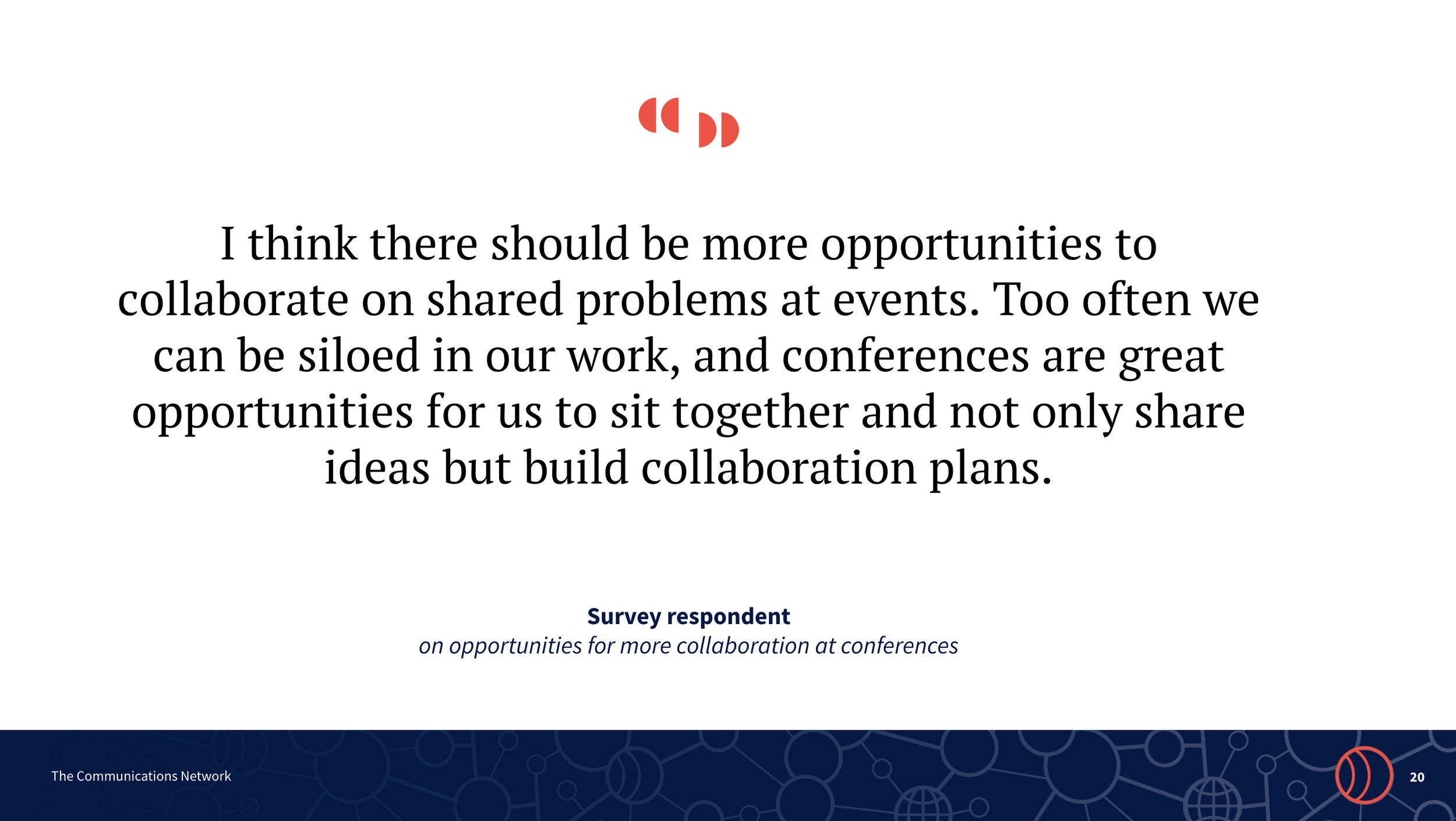
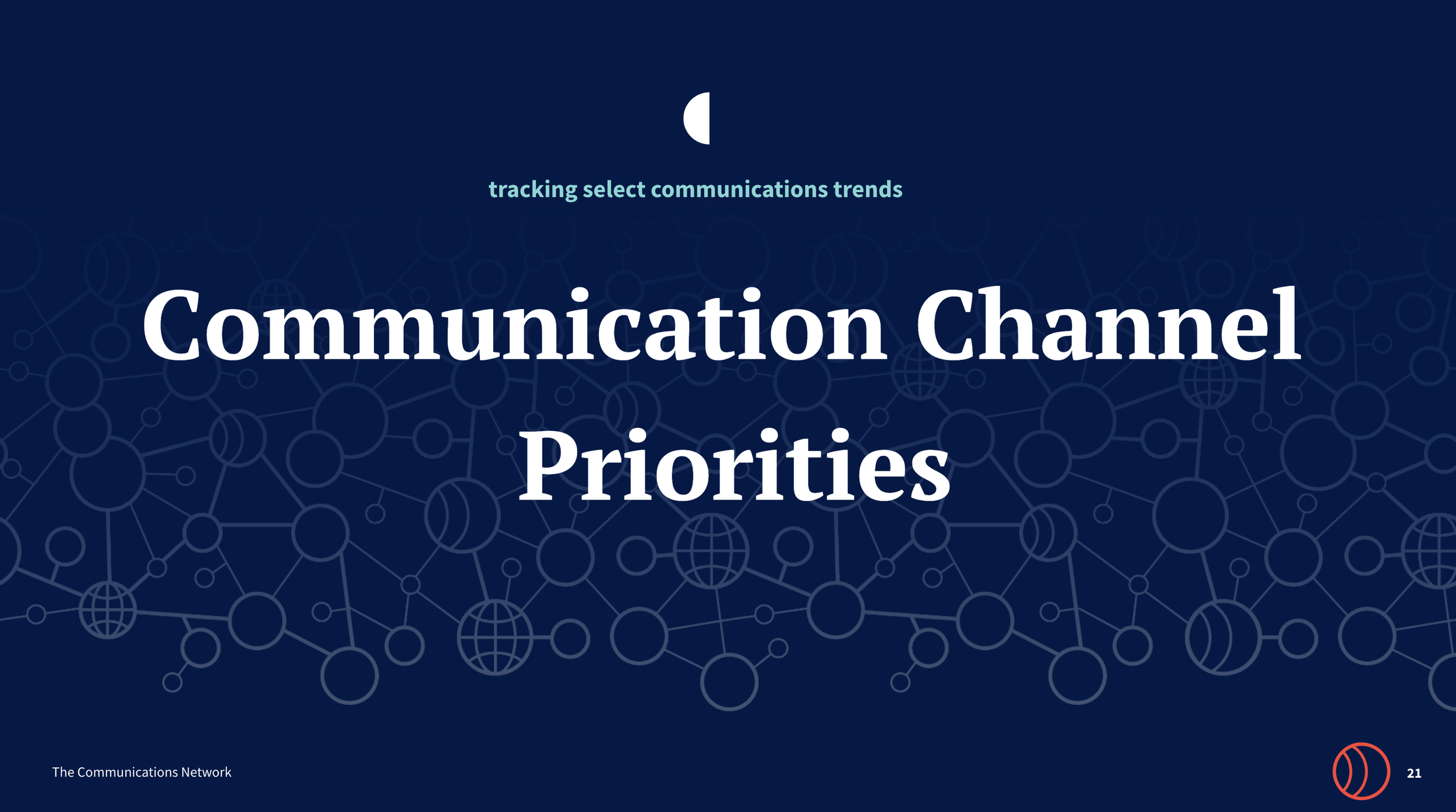

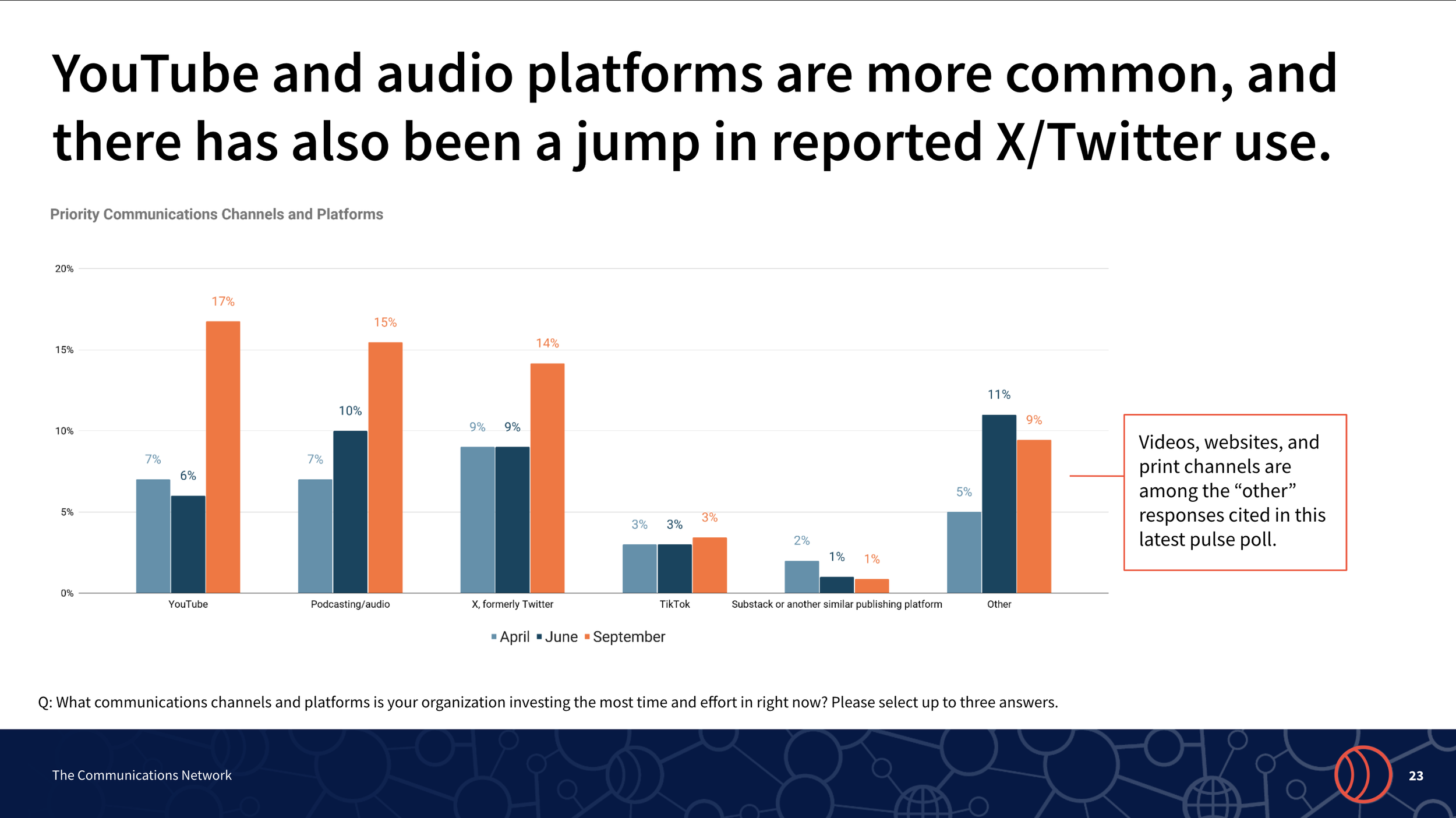
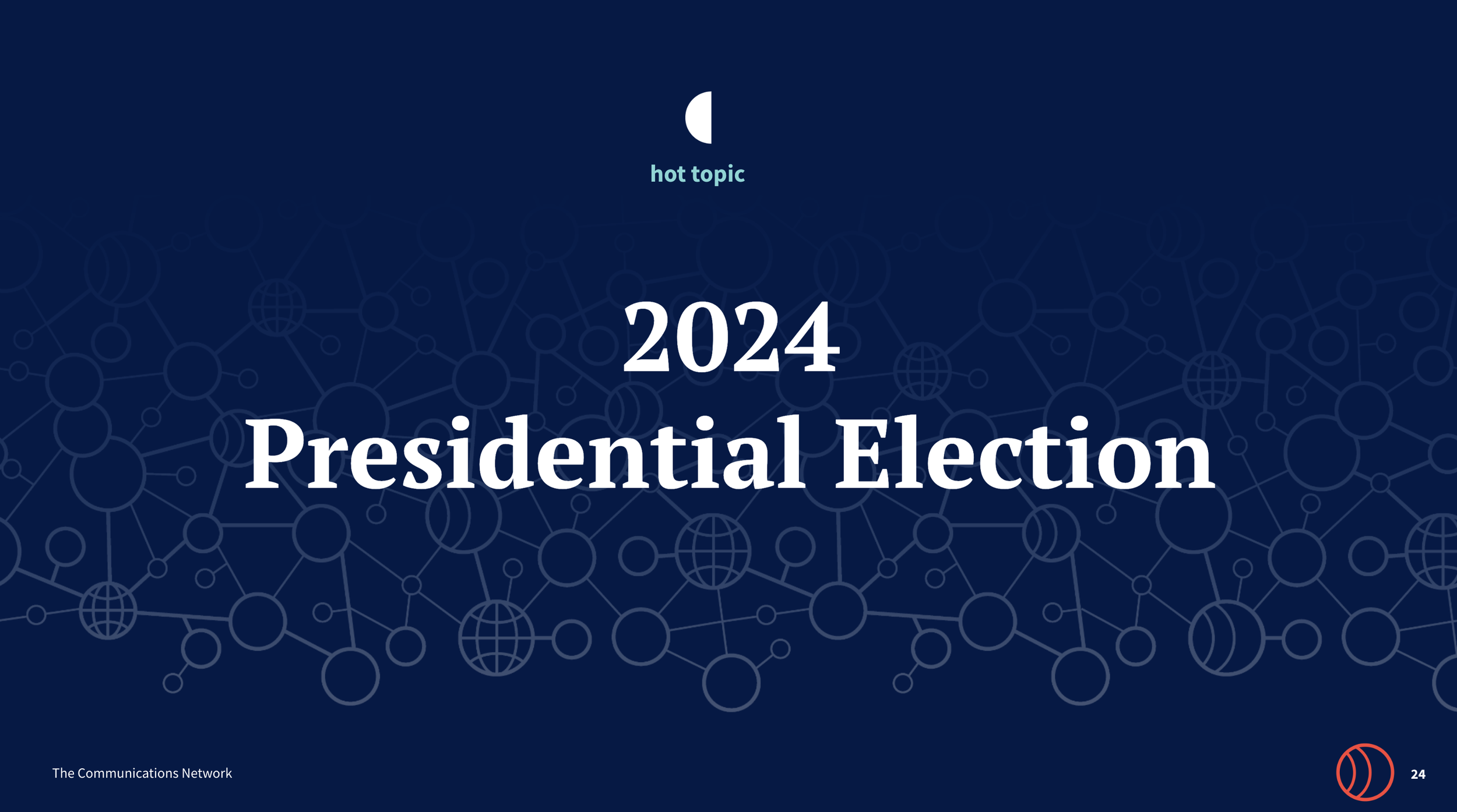
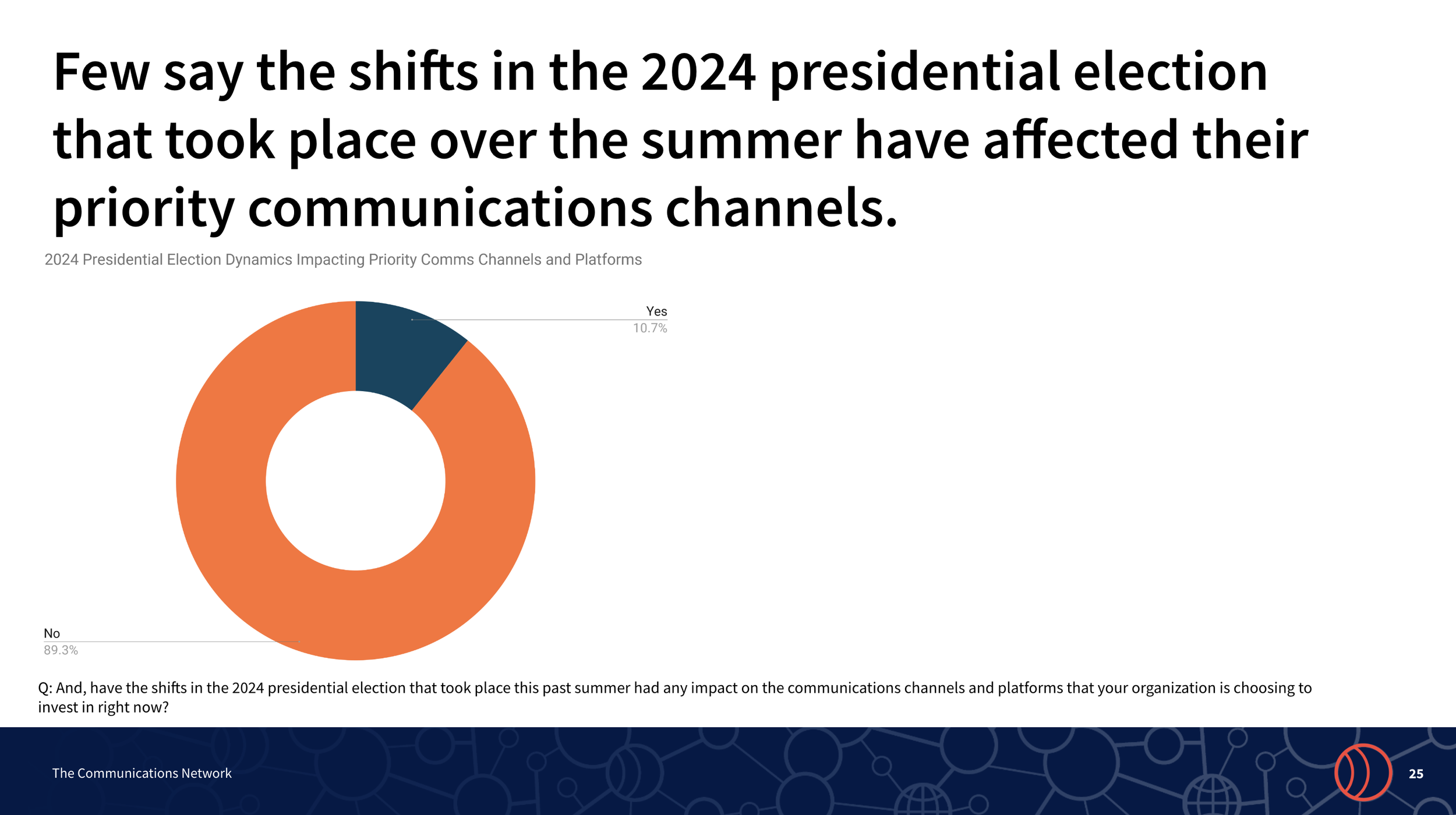
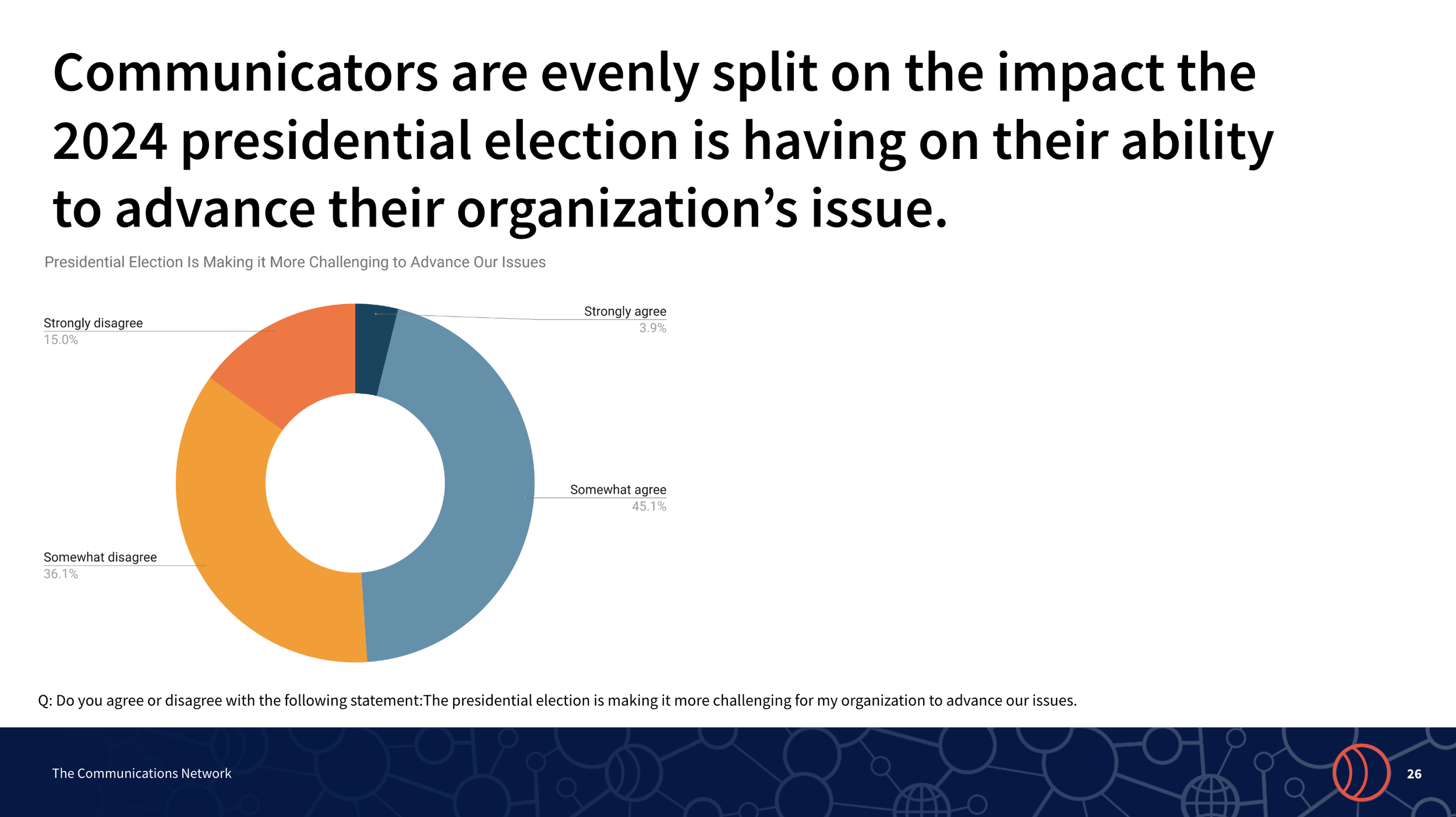


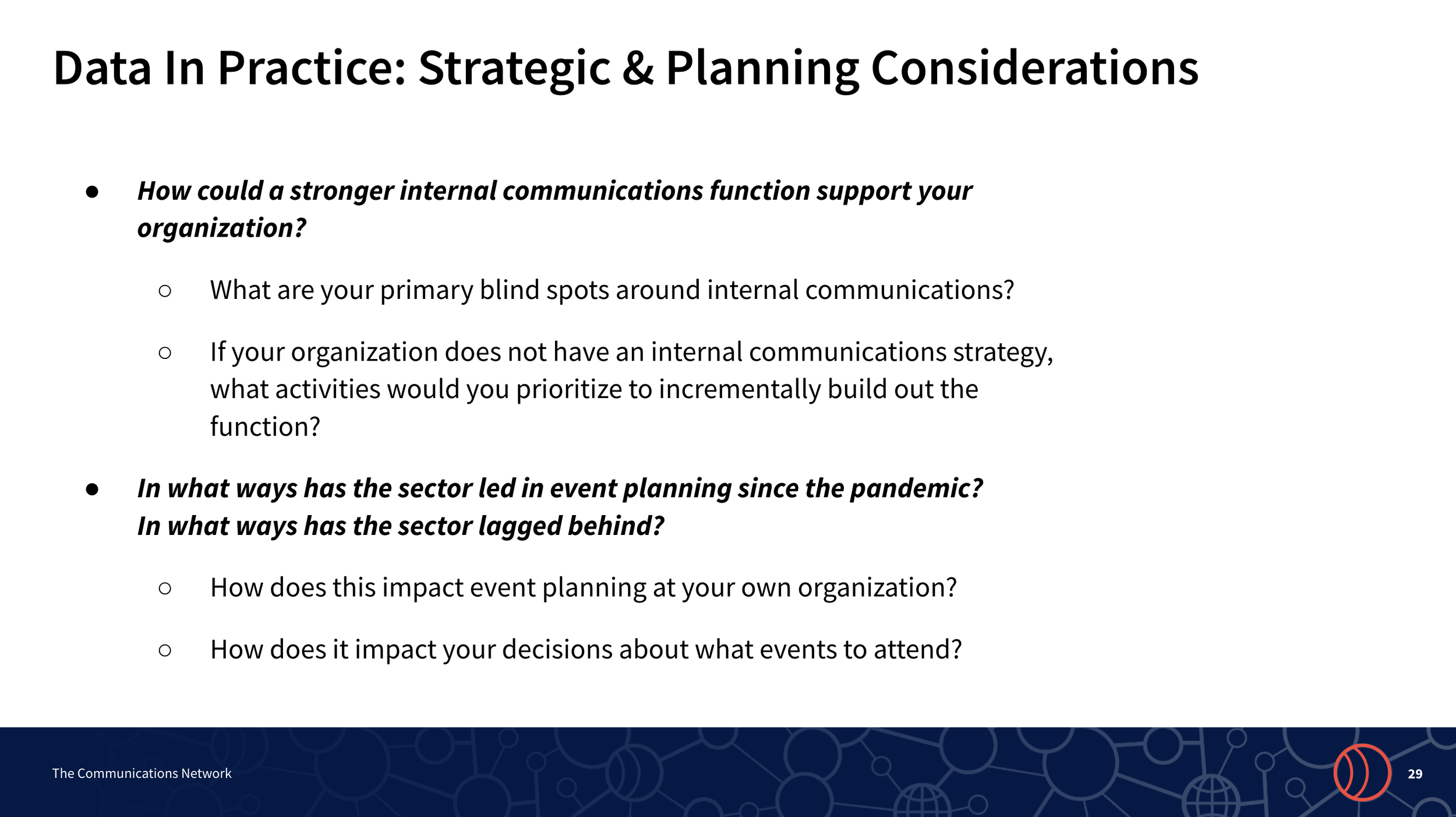
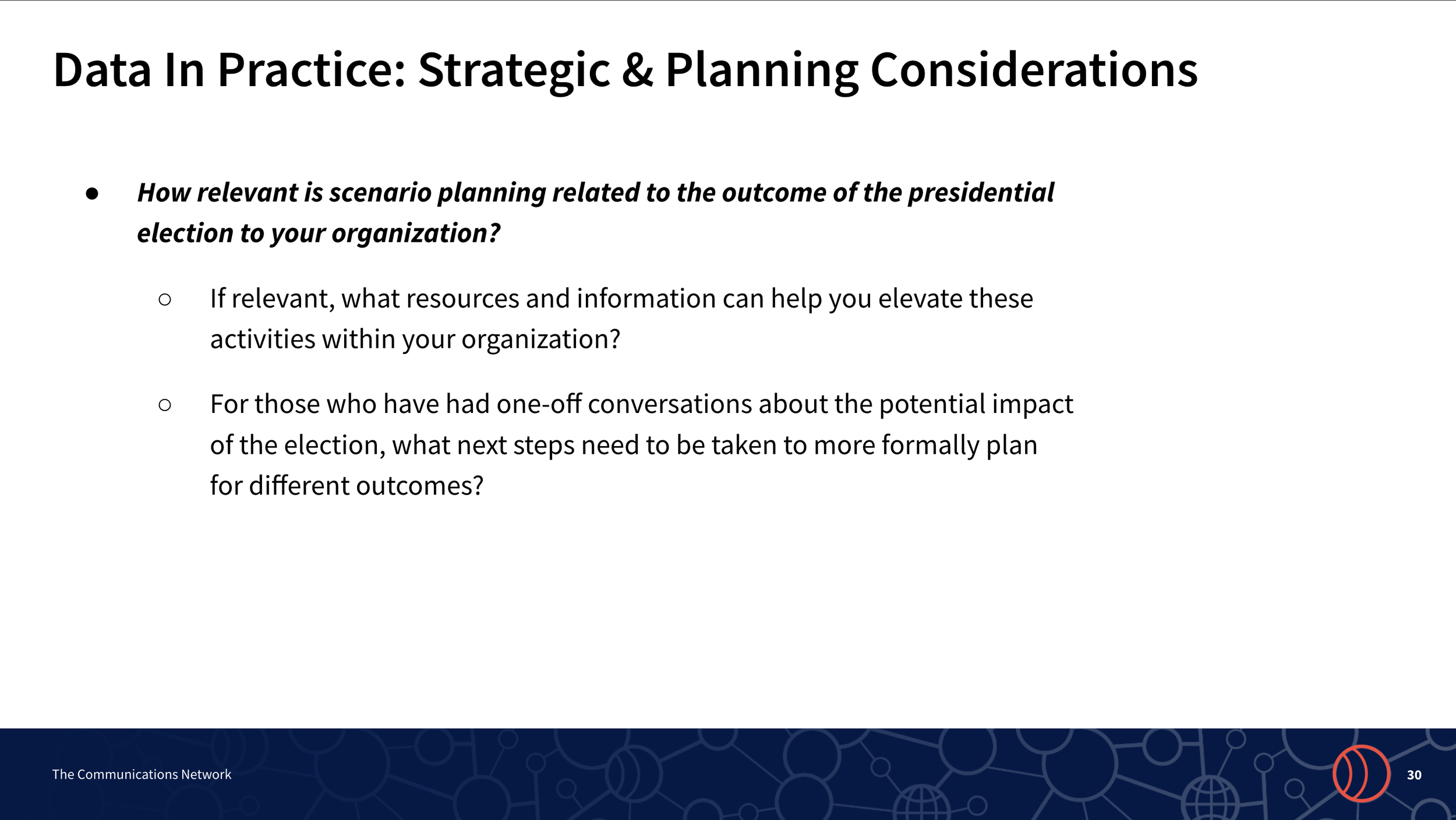
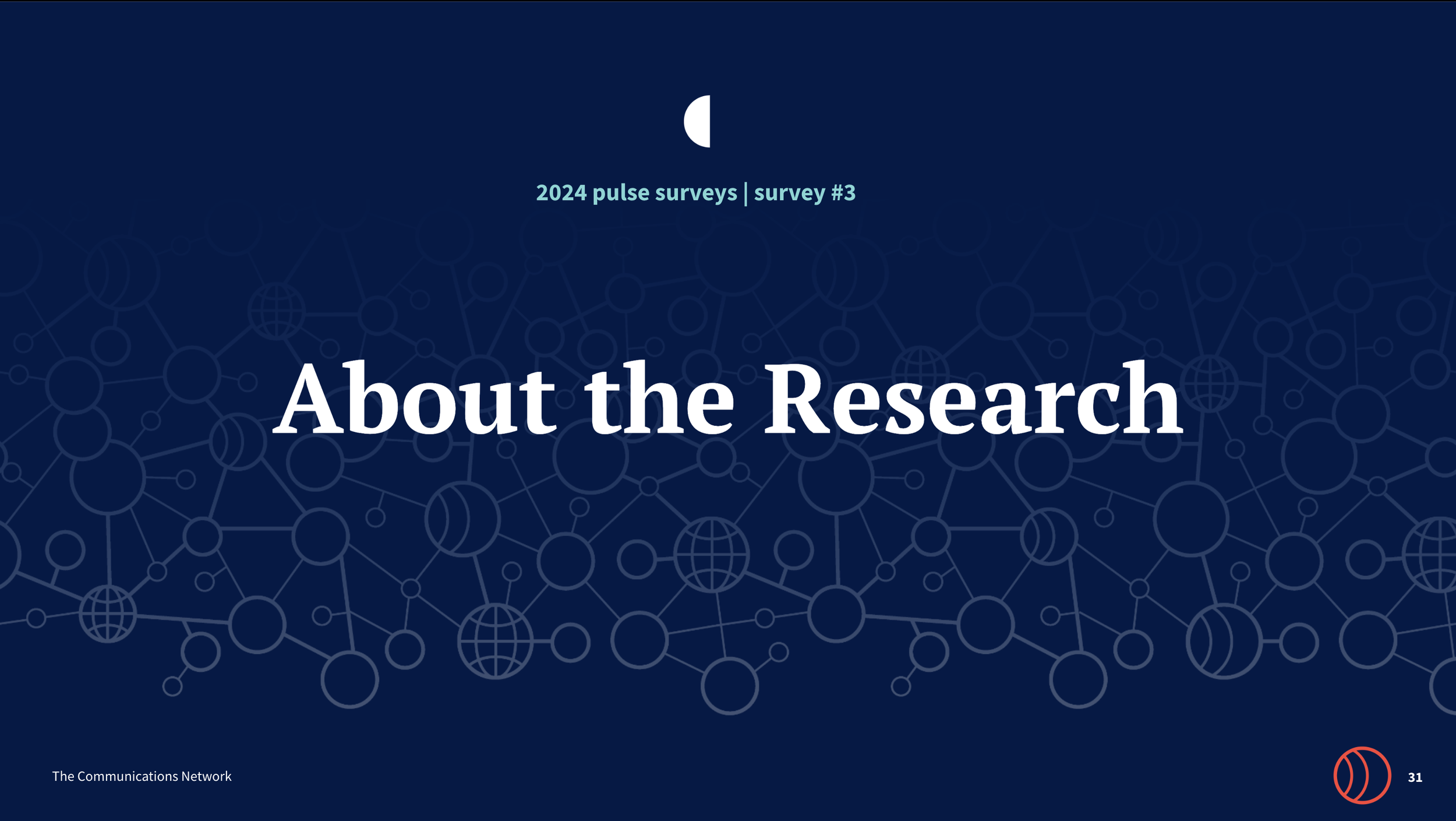
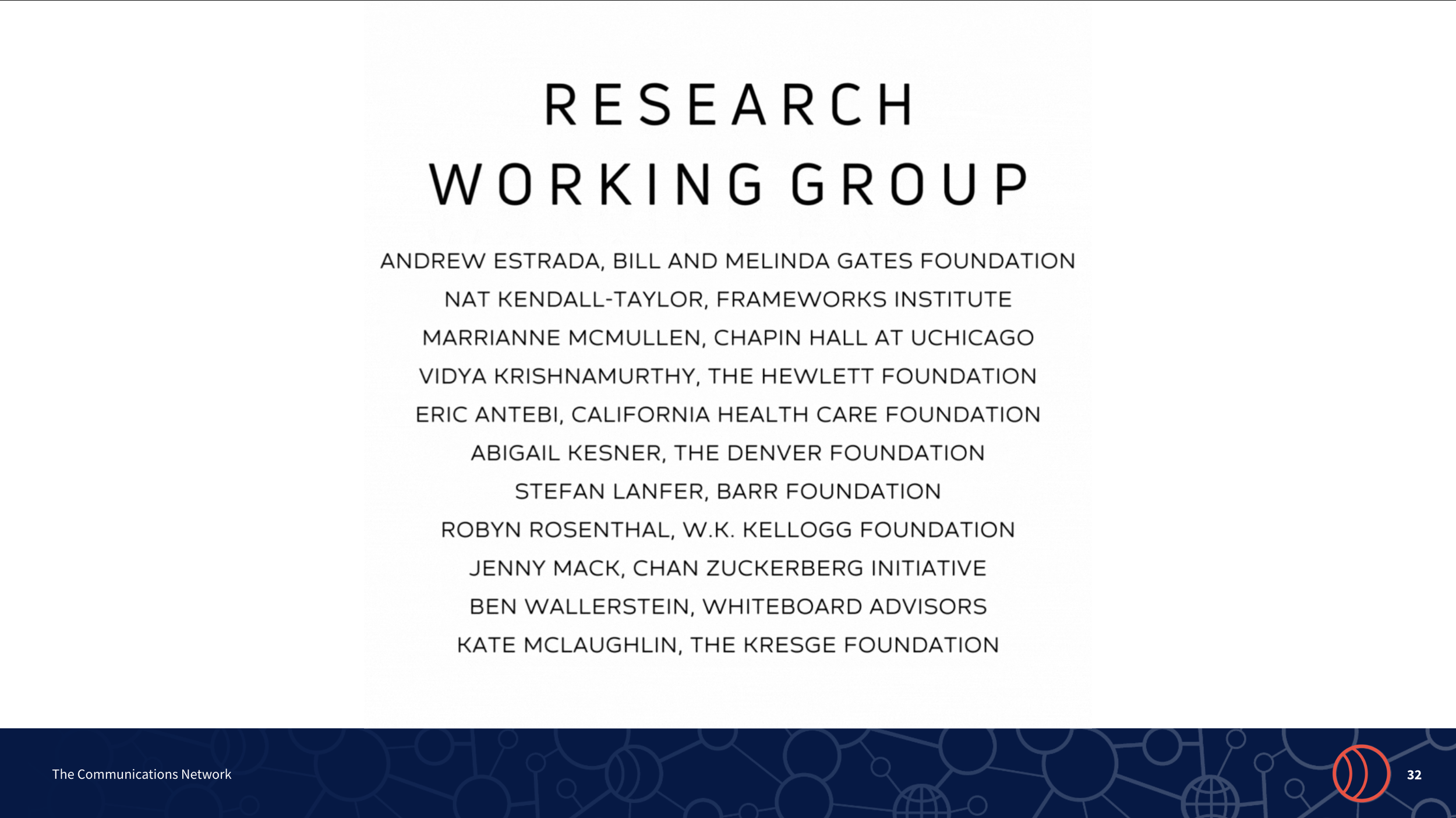
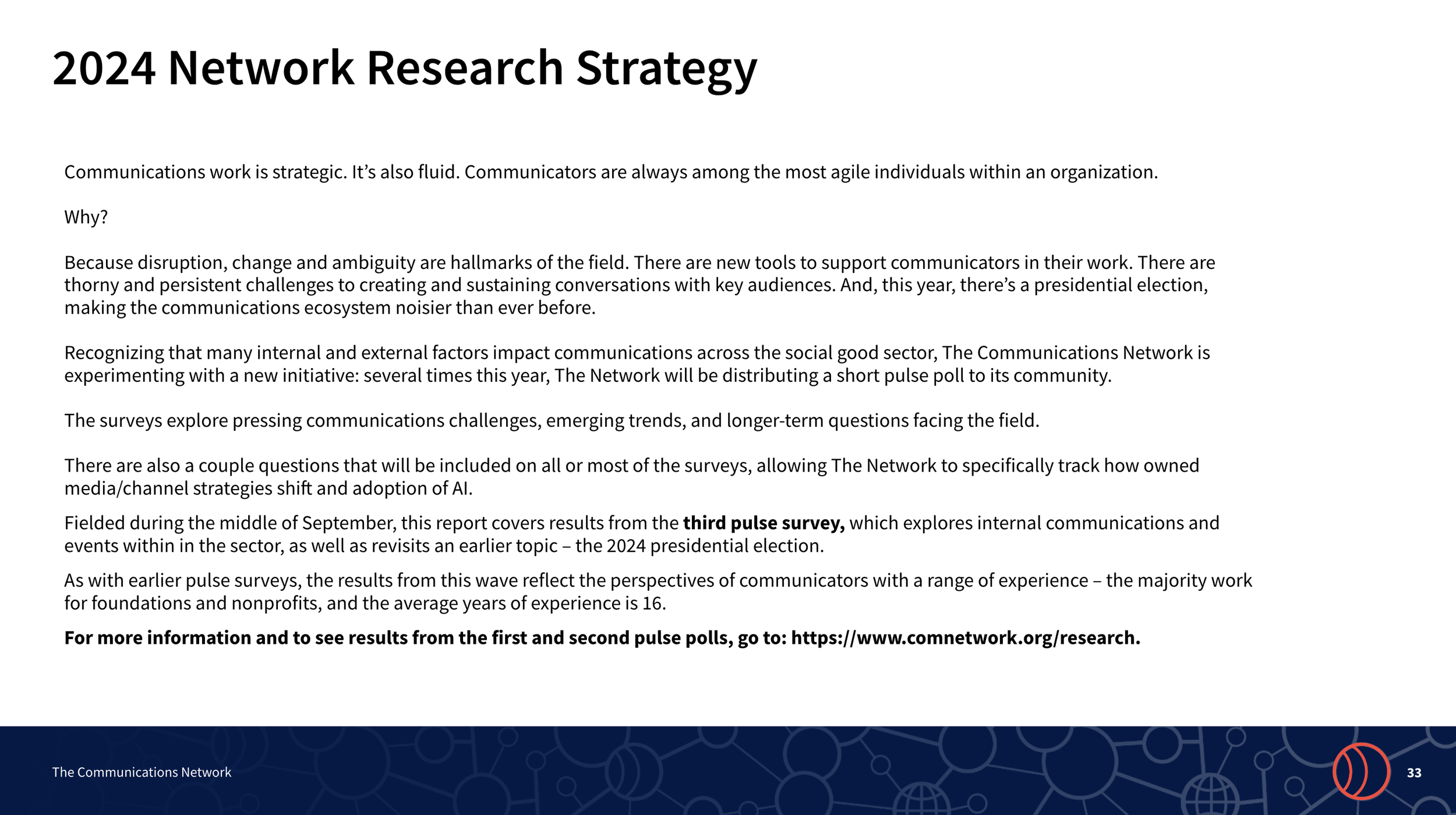
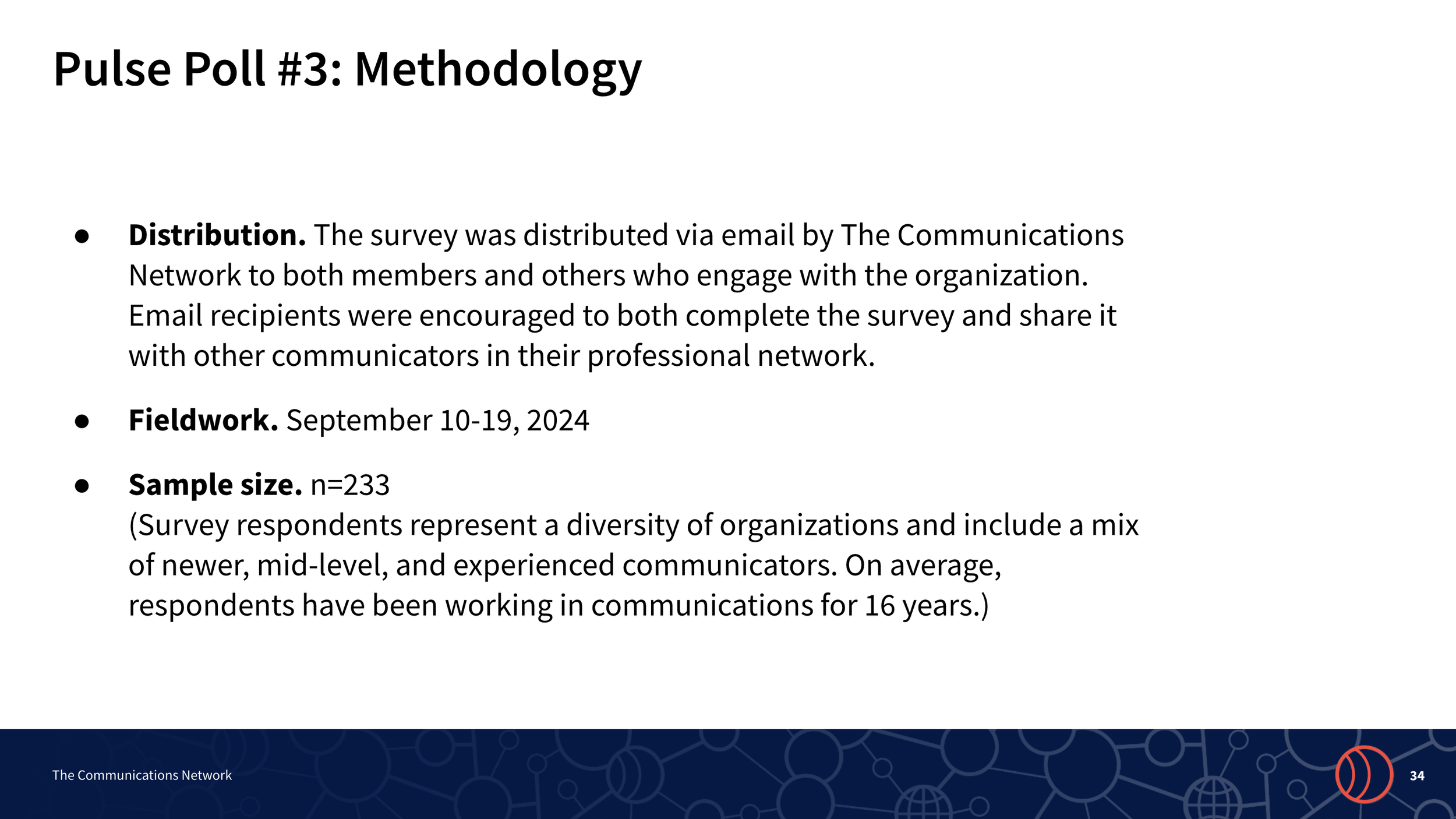
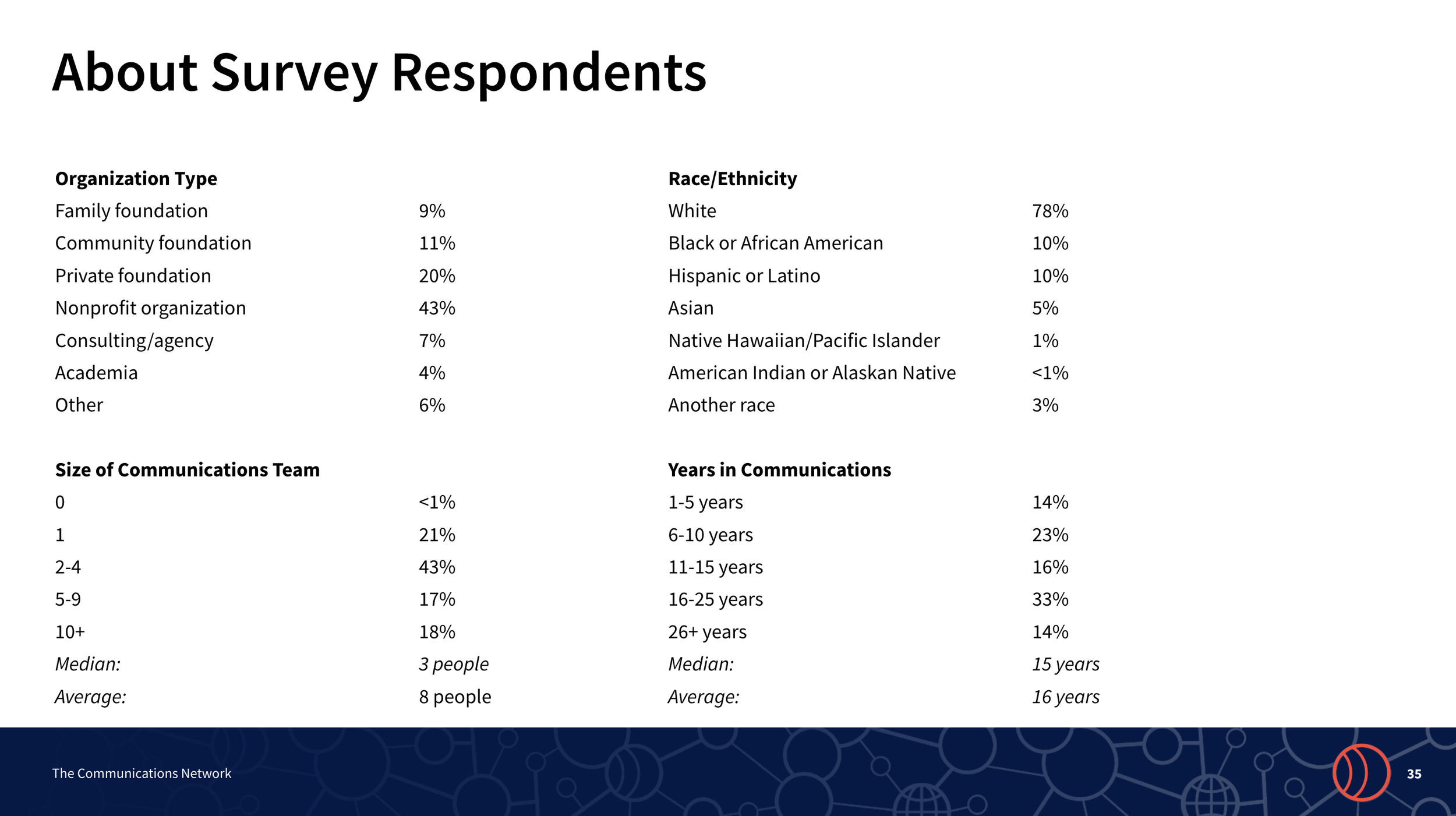
Insights: At a Glance
Resources and planning associated with internal communications are uneven.
Most say their organizations have at least one person working on internal communications. Still, fewer work at places with an internal communications strategy. Additionally, many report their organizations have not conducted an assessment of their internal communications needs and gaps in the past year.
Most communications teams play a significant but not primary role in conference and event planning.
COVID has had a lasting effect on events within the sector, too, with over half saying events are more important now than they were prior to the pandemic. It has also meant that many organizations are committed to making events more accessible, whether it be through virtual attendance options or making recordings available.
There’s been an uptick in use of the most common communications channels, as well as an increase in the proportion using YouTube and X.
LinkedIn remains the top channel within the sector, but there has been a jump in both e-newsletters and email. While still lower priorities, communicators are currently more likely to be looking to YouTube, podcasting, and X, too.
Shifts in the U.S. presidential election since the summer do not seem to be changing day-to-day or longer-term communications work.
In particular, shifts in the presidential election have not impacted how most are choosing to communicate. Further, few have done formal scenario planning related to the outcome of the election. The election is, however, making it more difficult for about half of organizations to advance their issues.
Comms for Good Events
2024 Presidential Election
Culture of Comms
Comms Channel Priorities
Use of Artificial Intelligence (AI)
Generative AI in the Social Sector
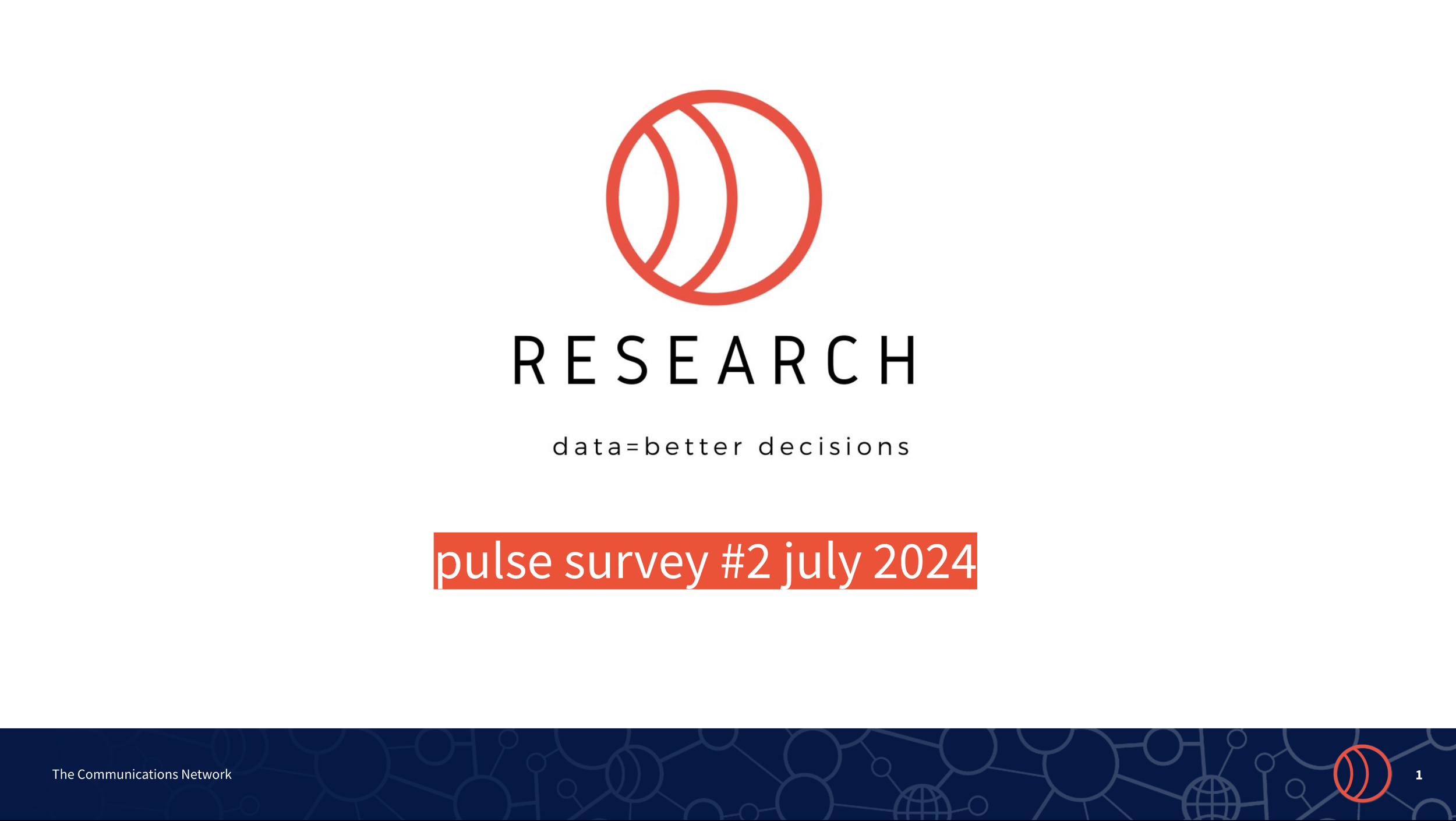
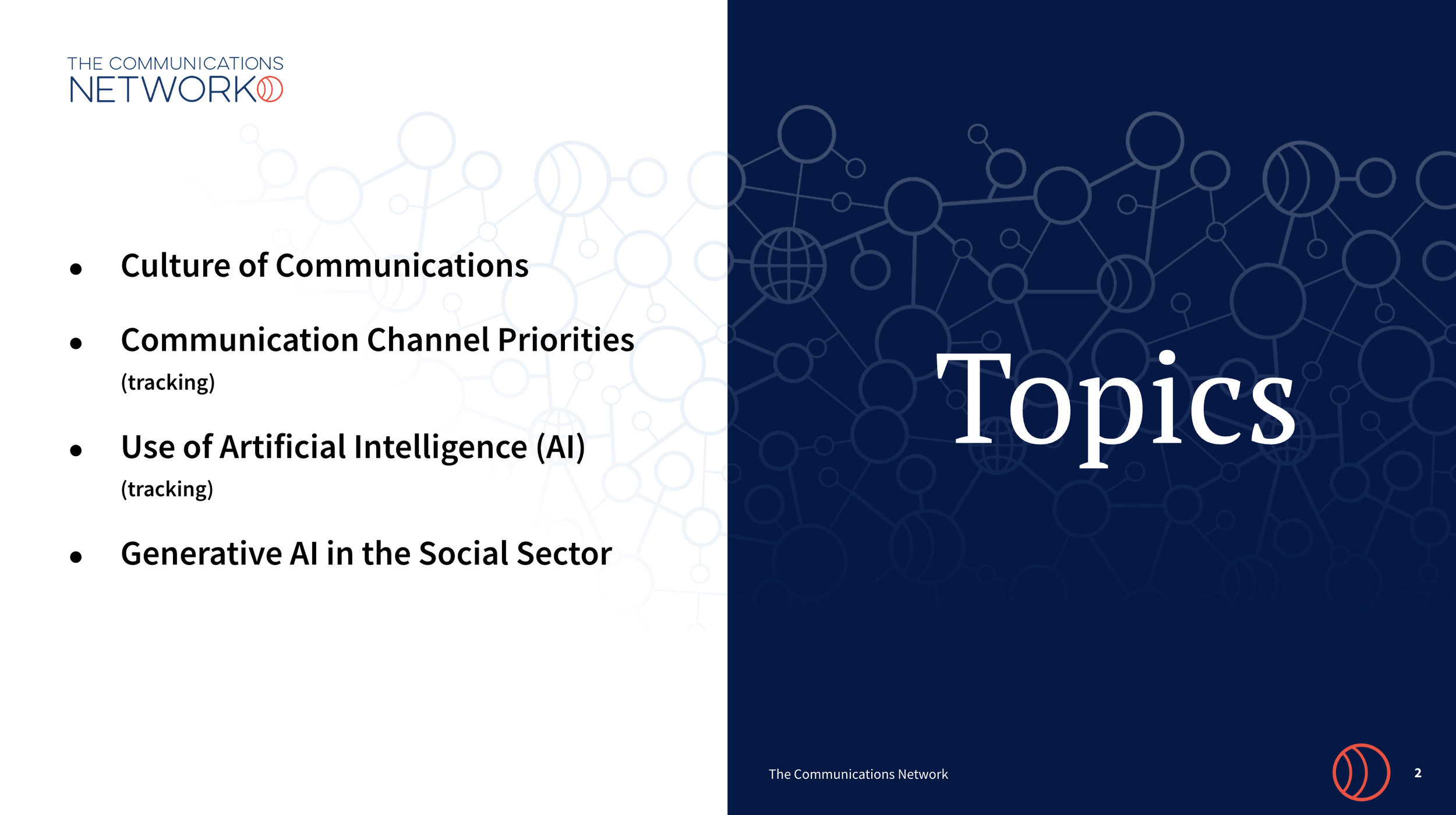
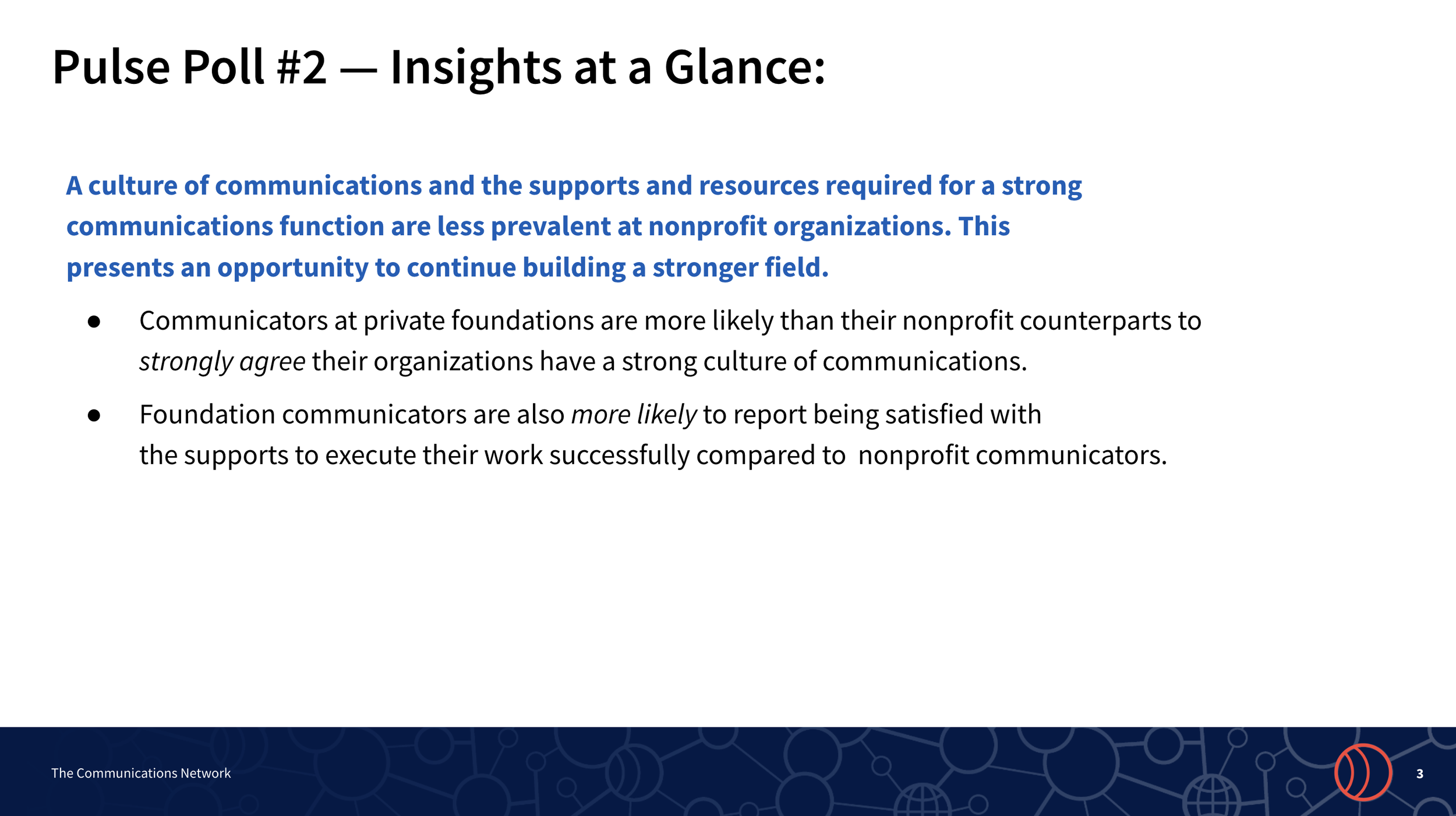
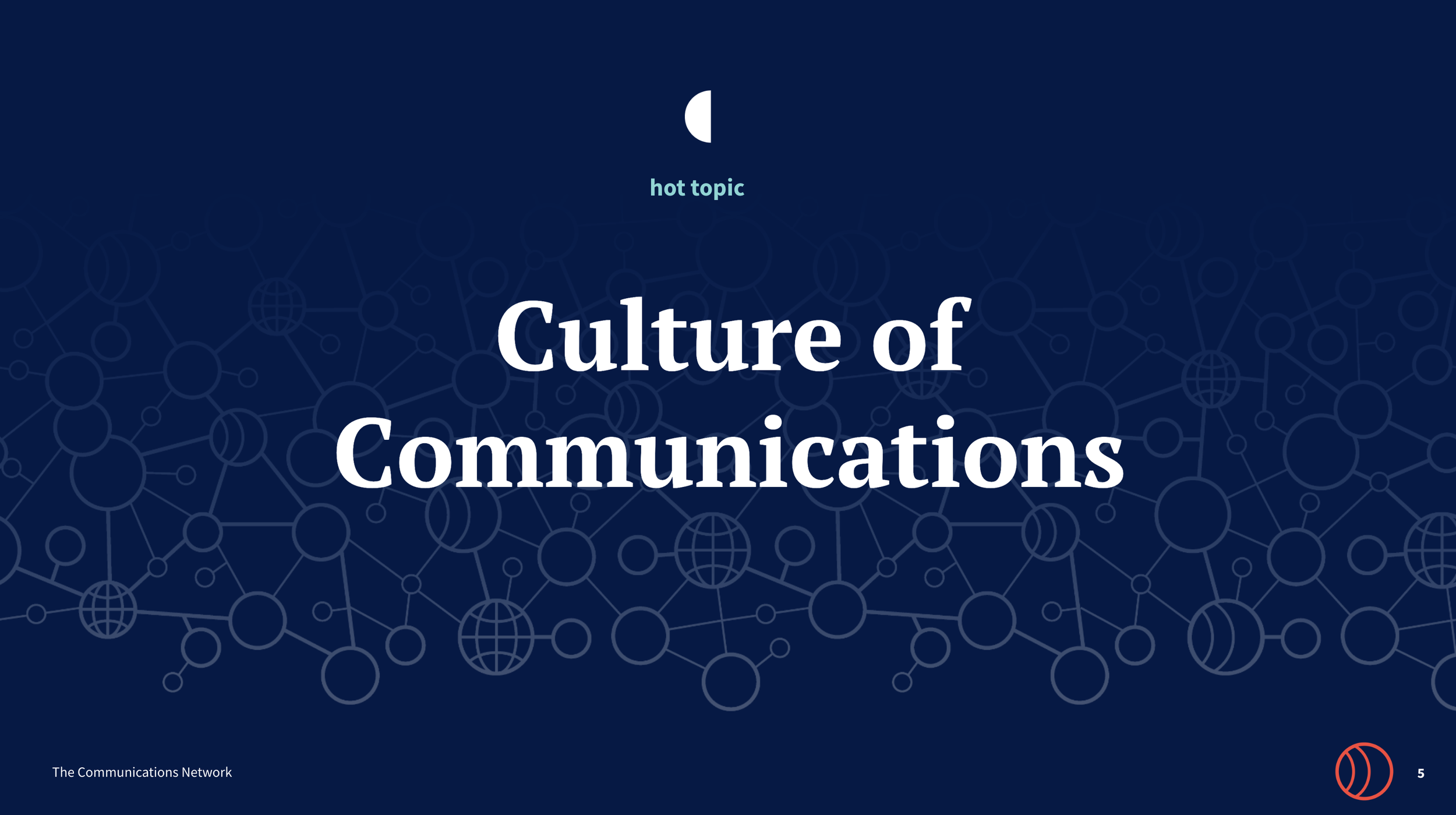
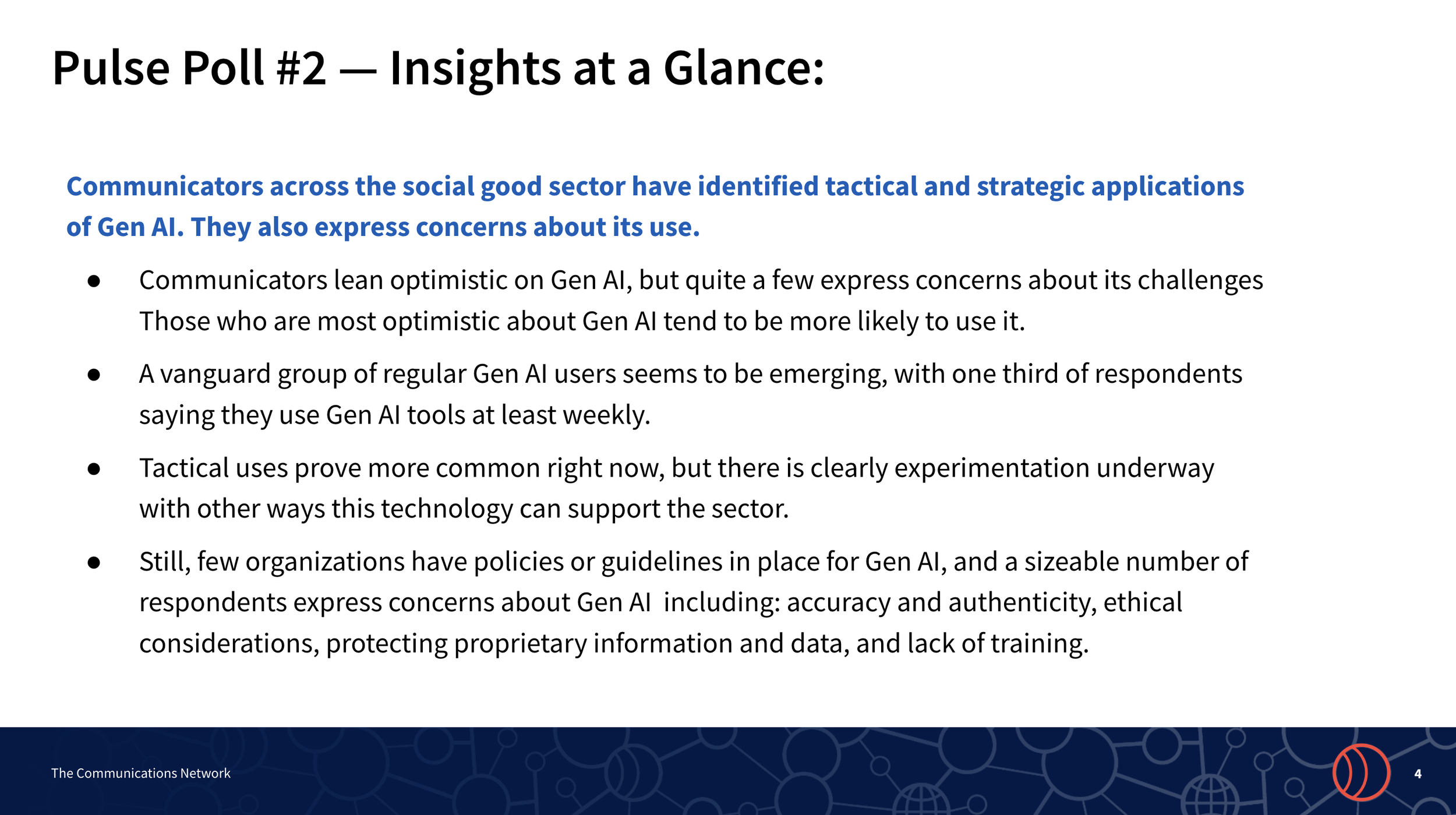
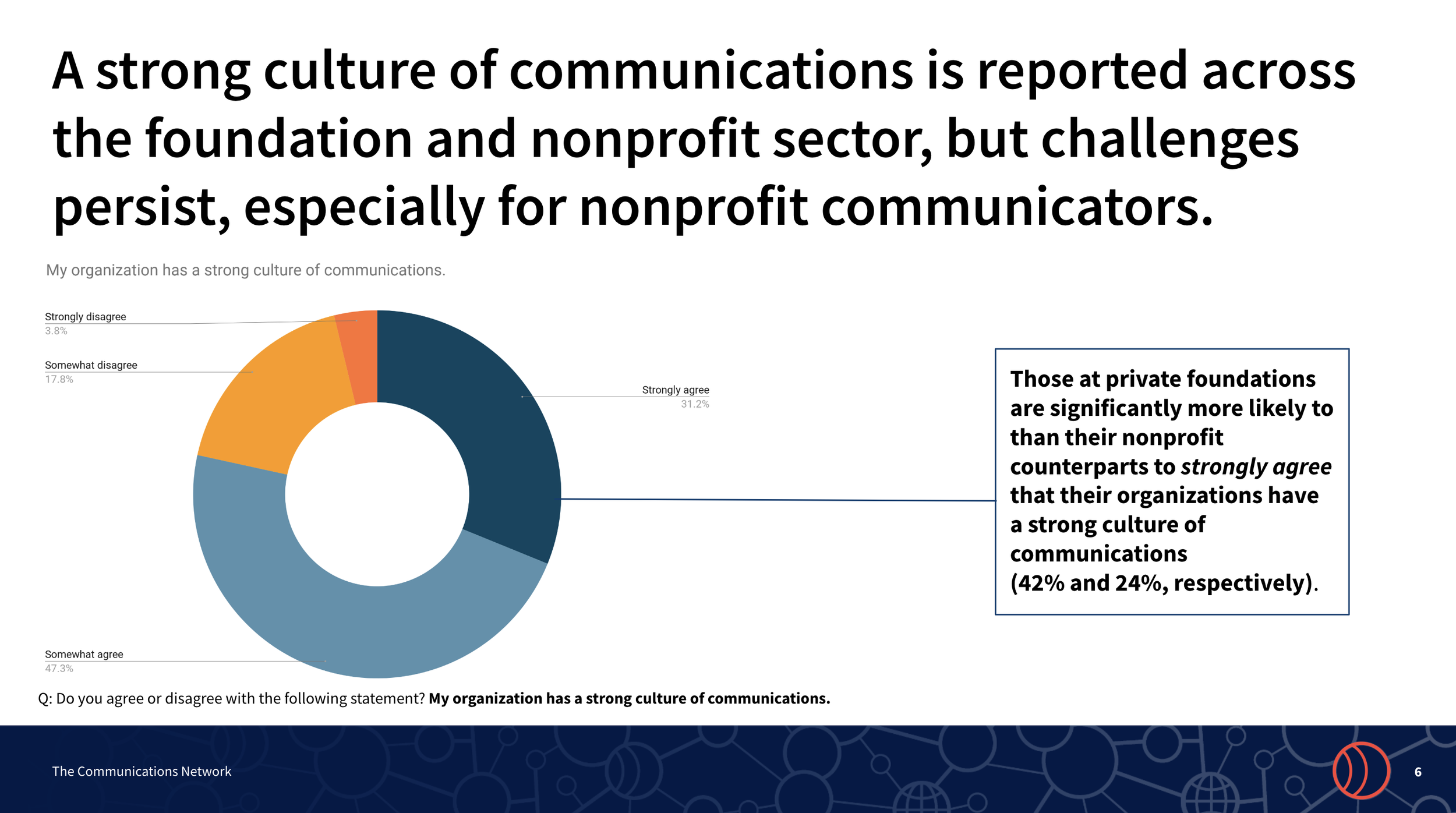
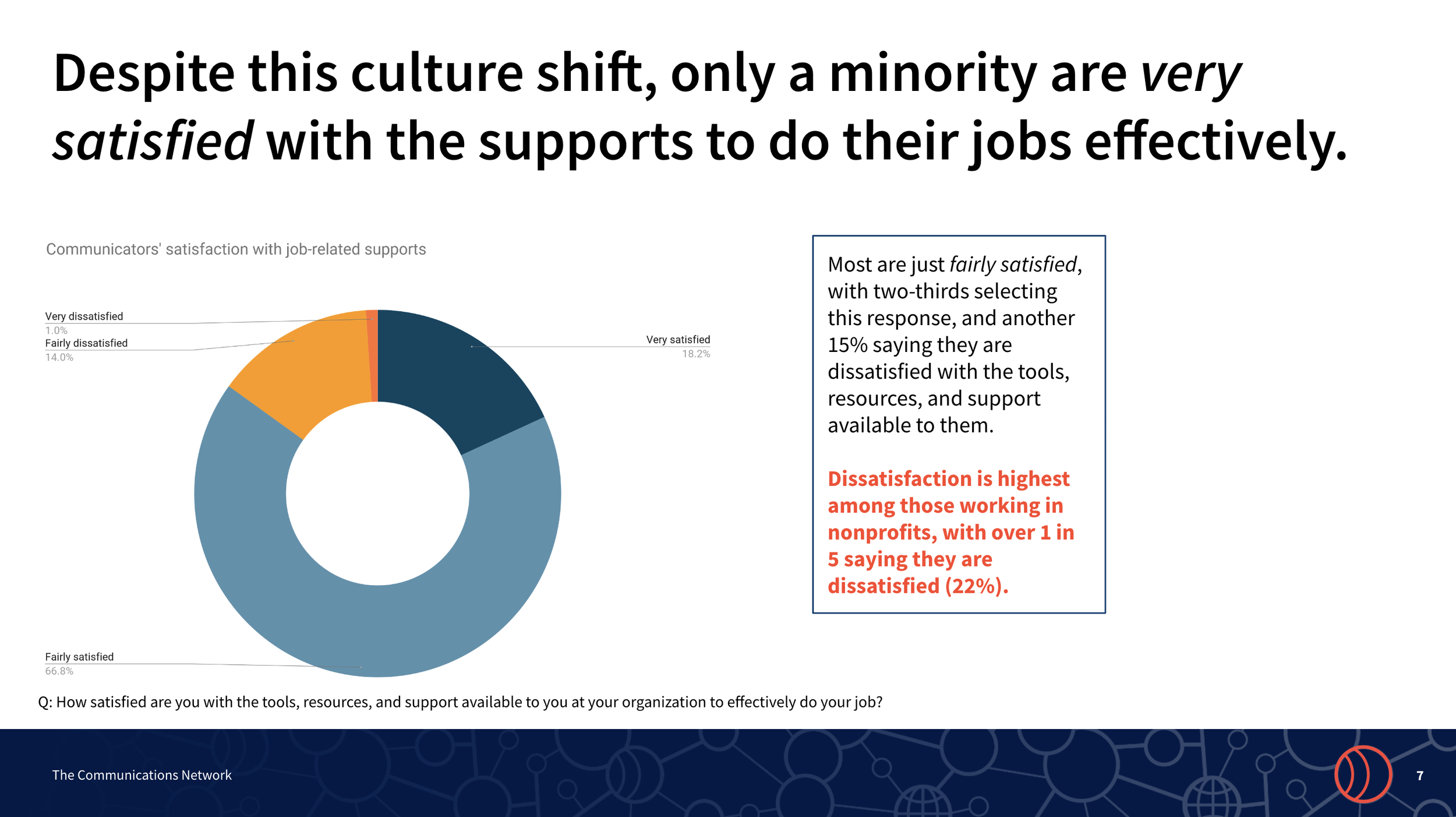
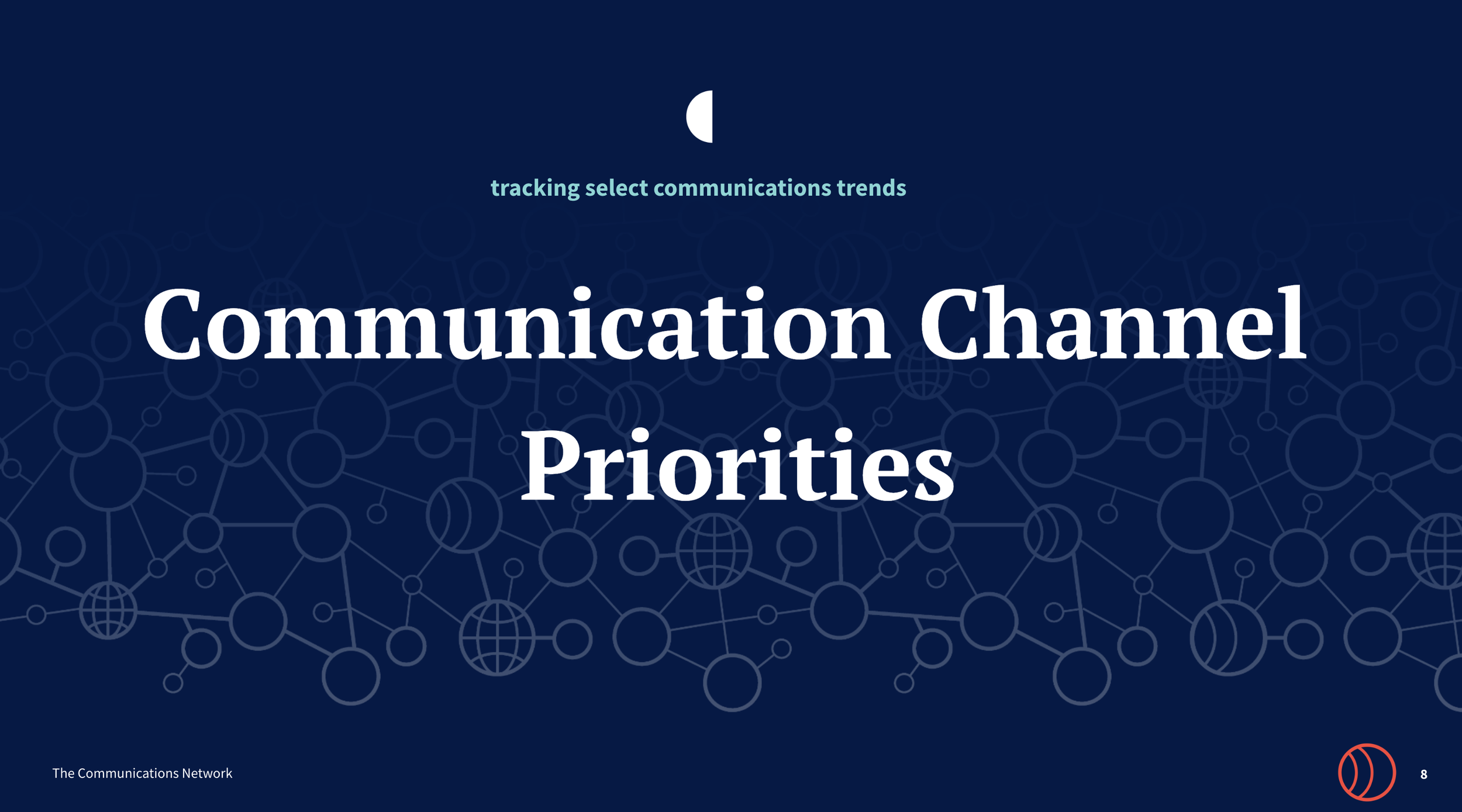
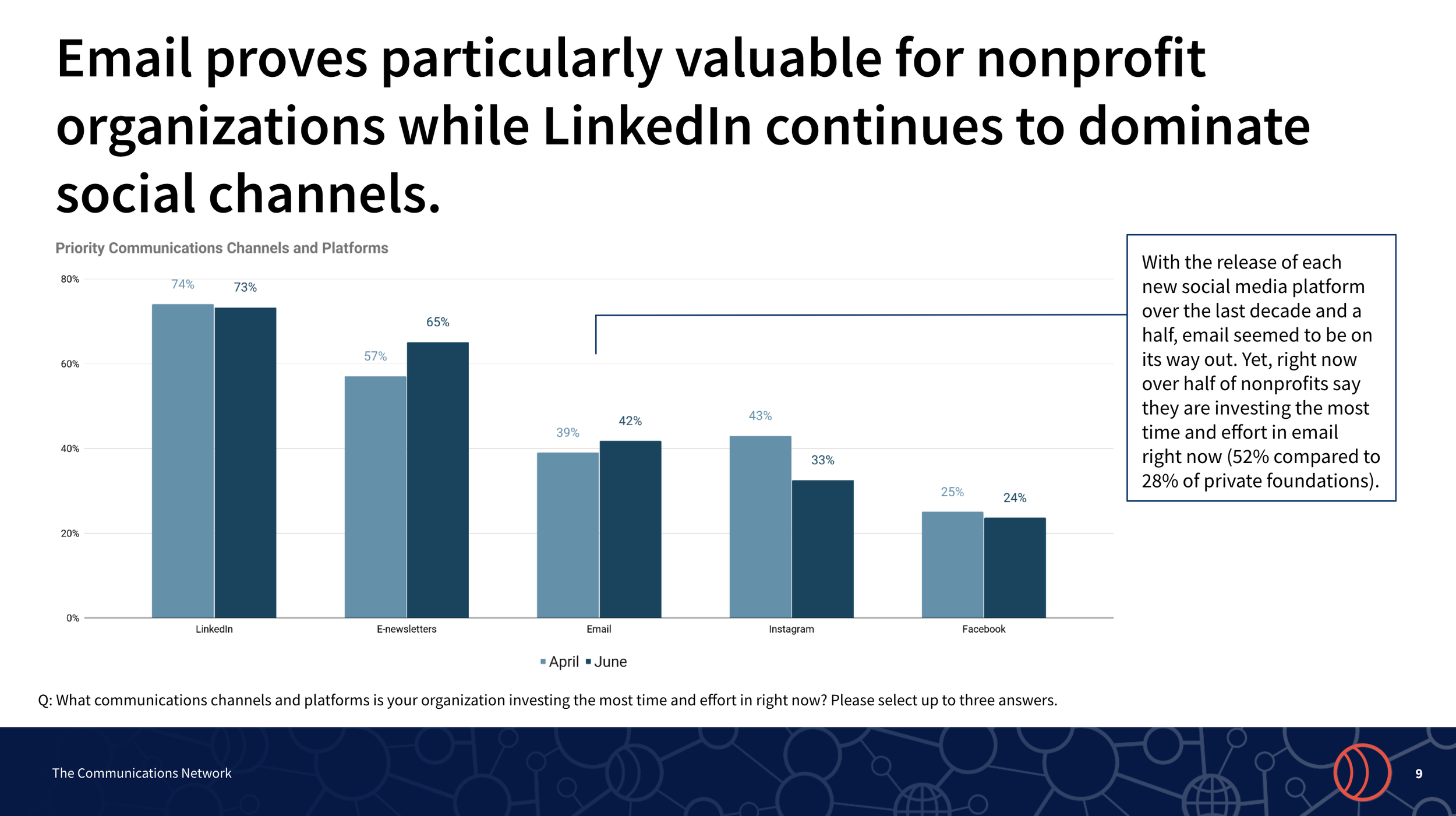
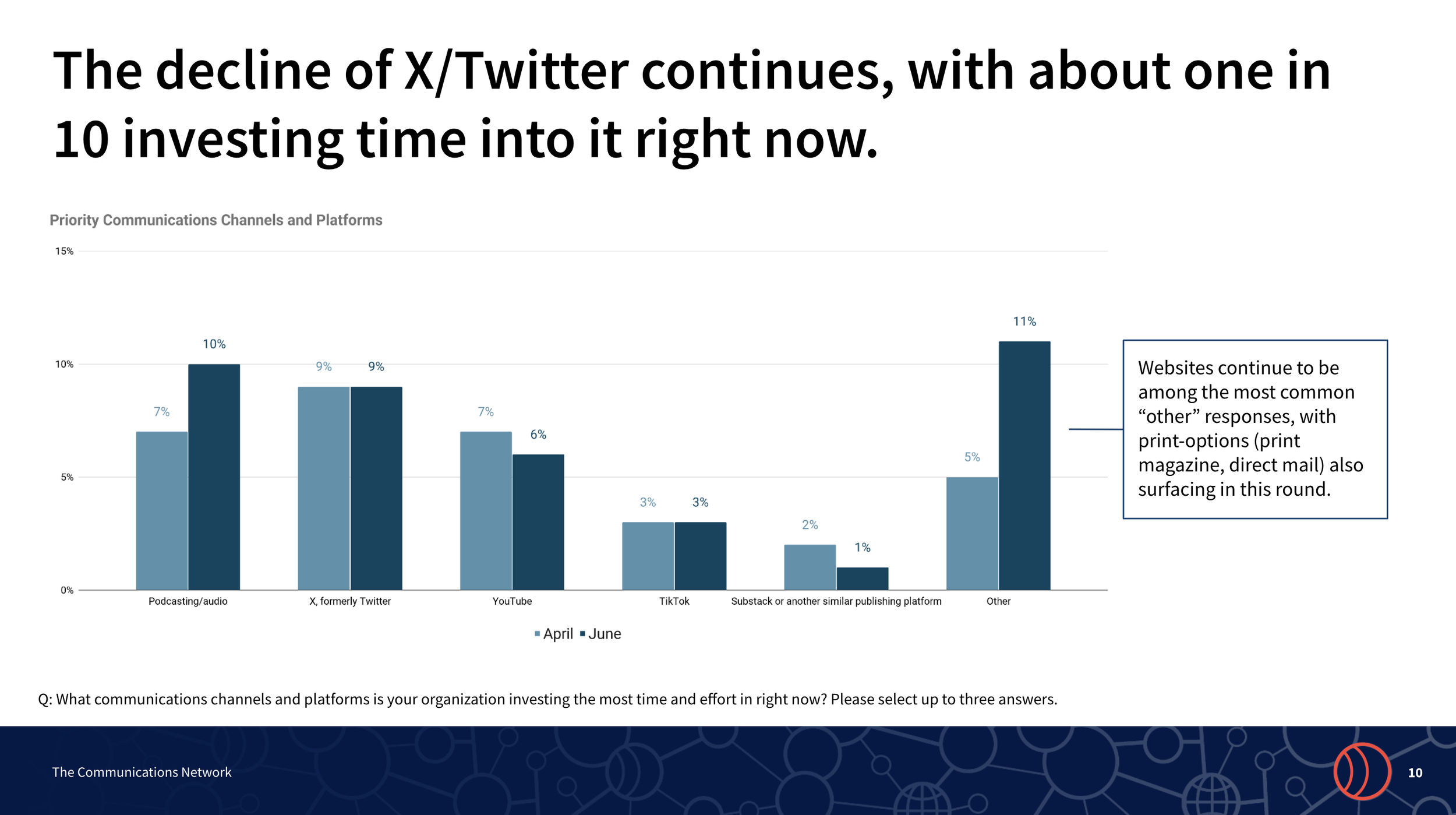
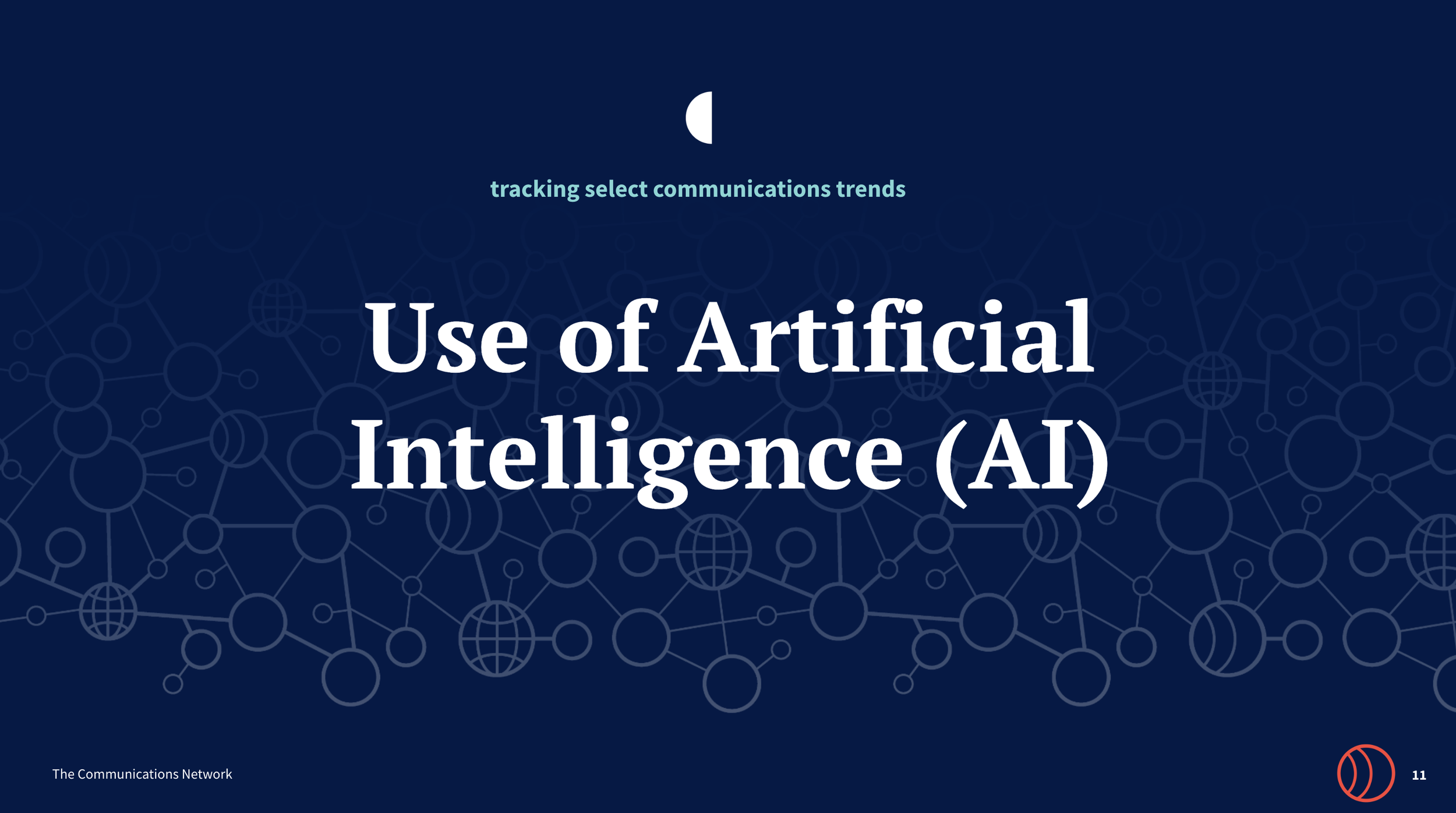
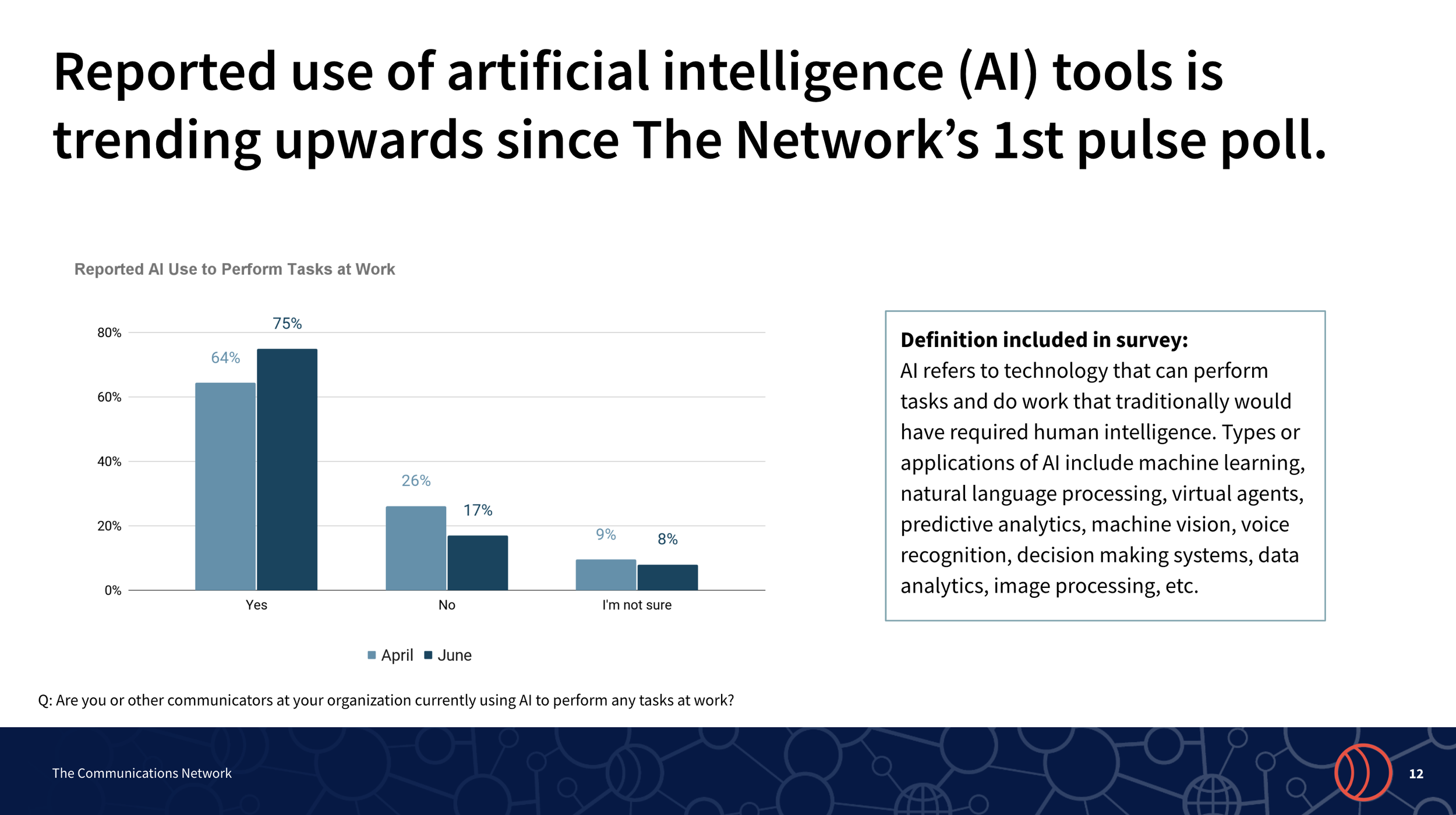
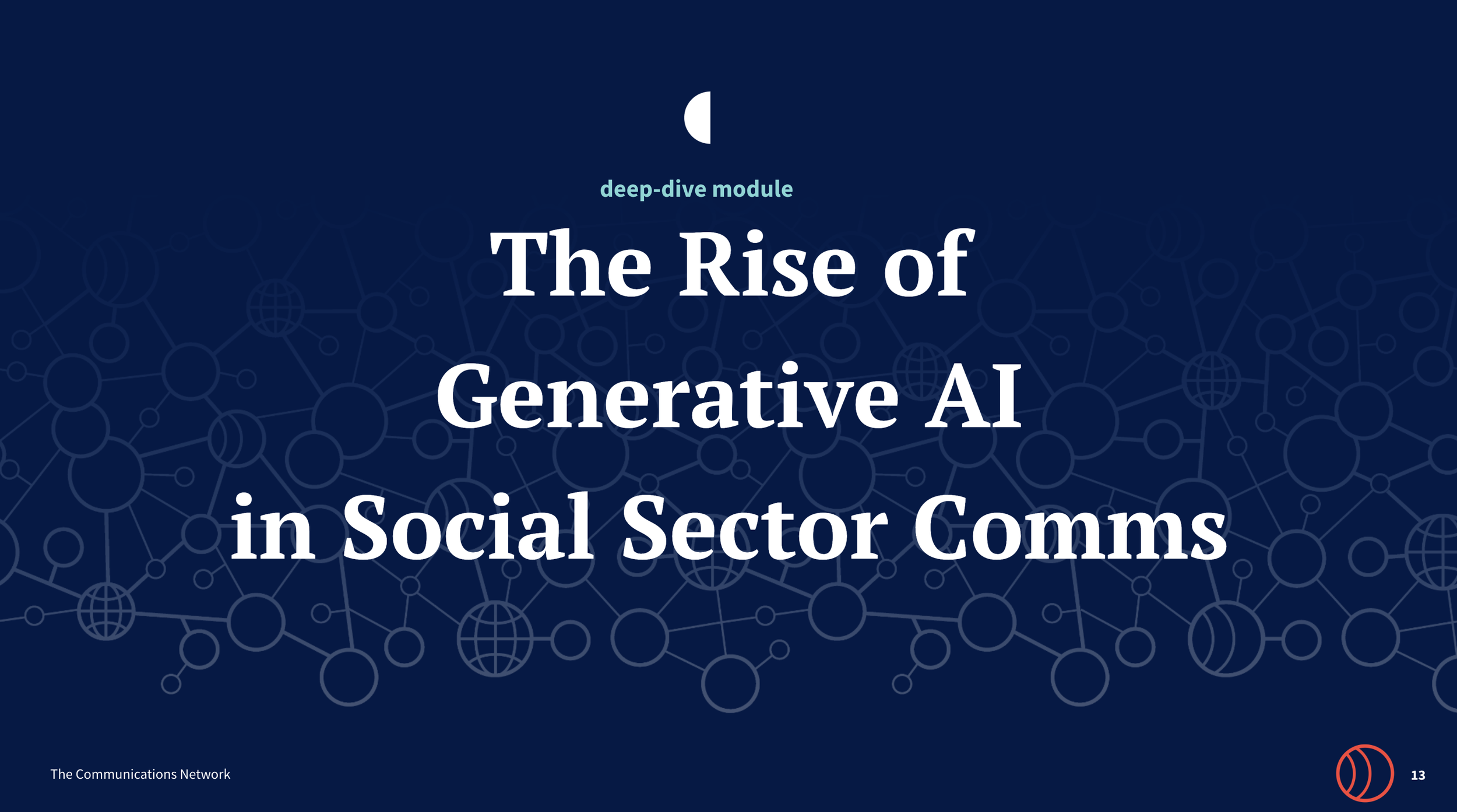
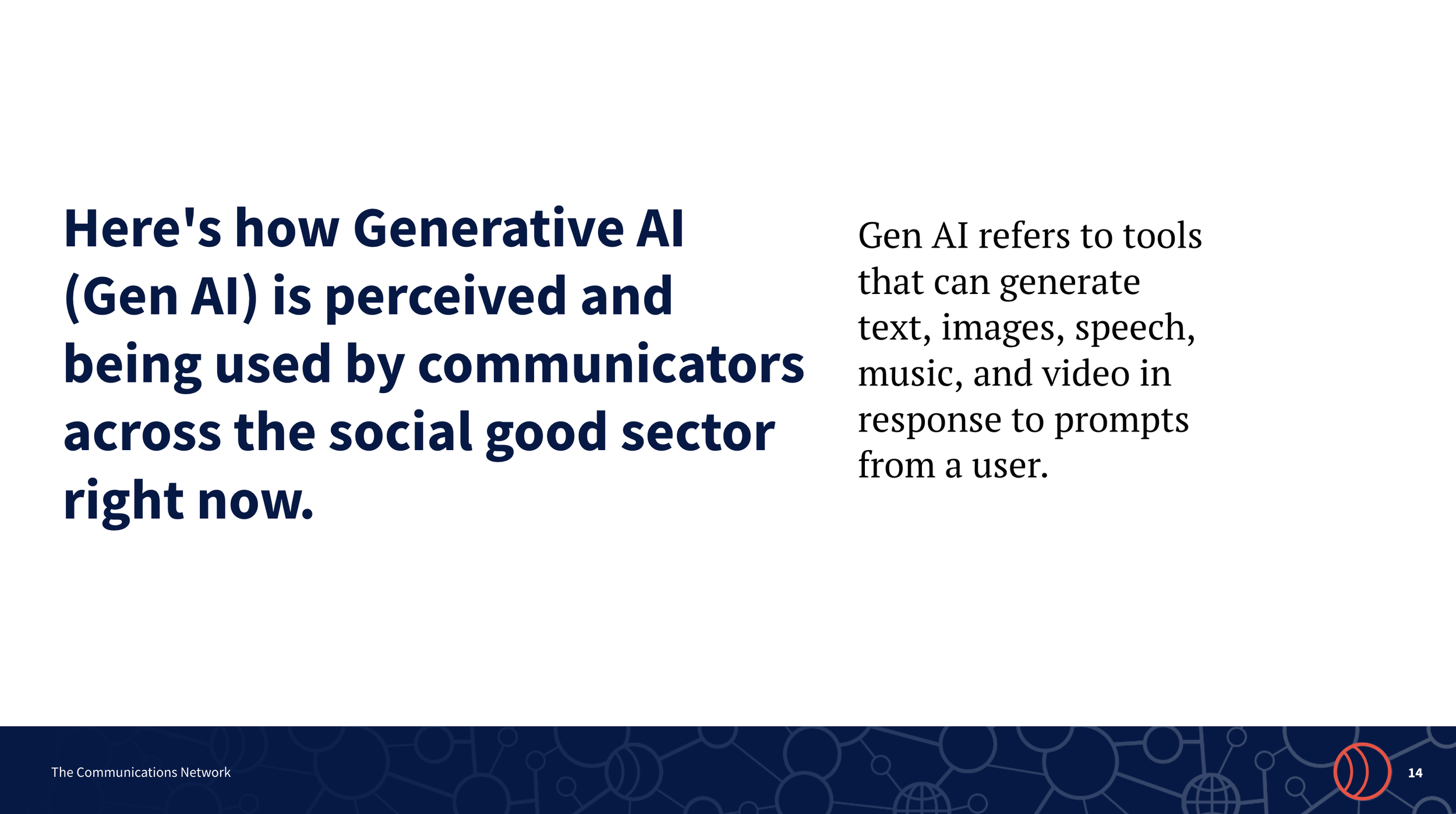
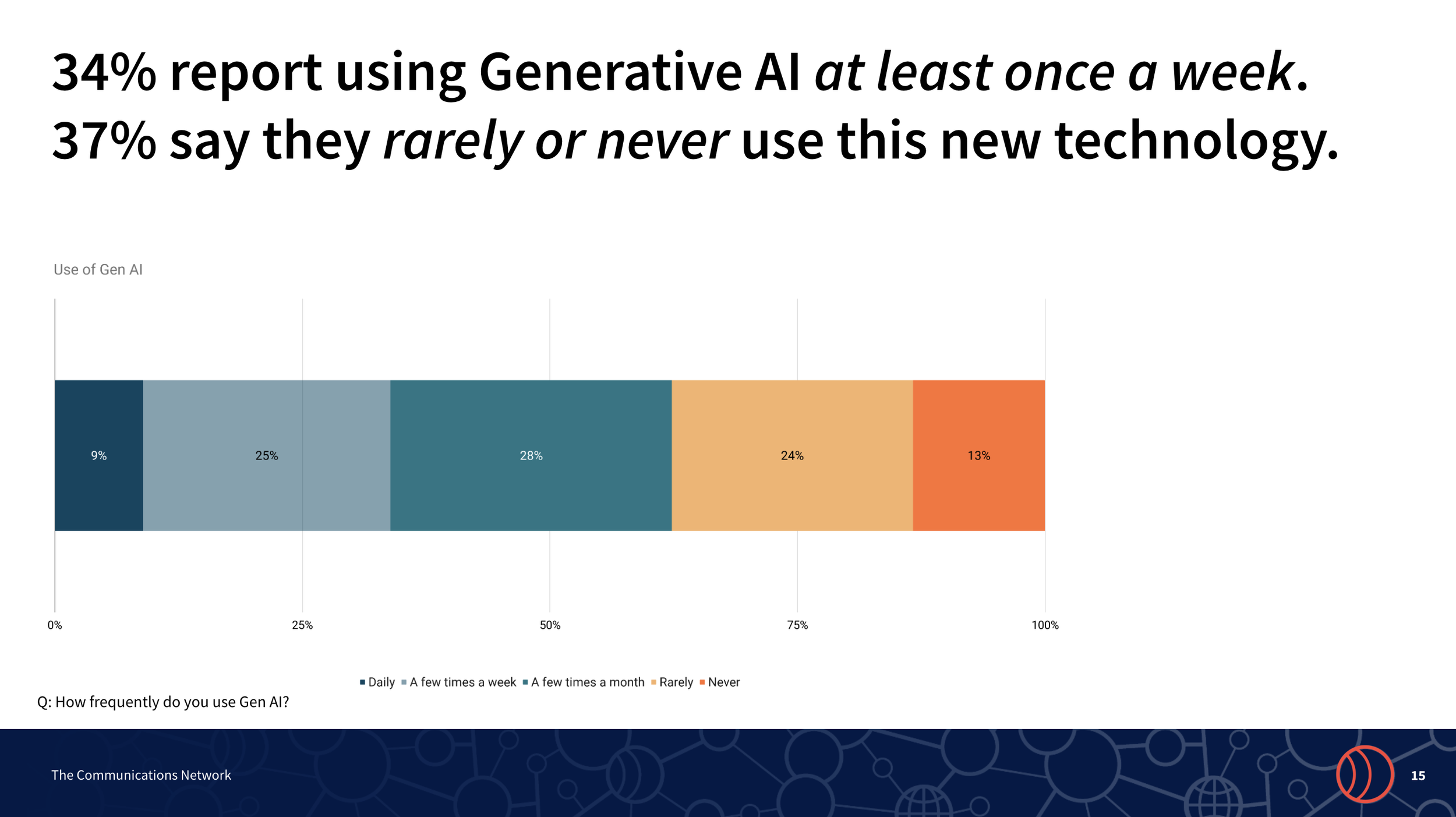
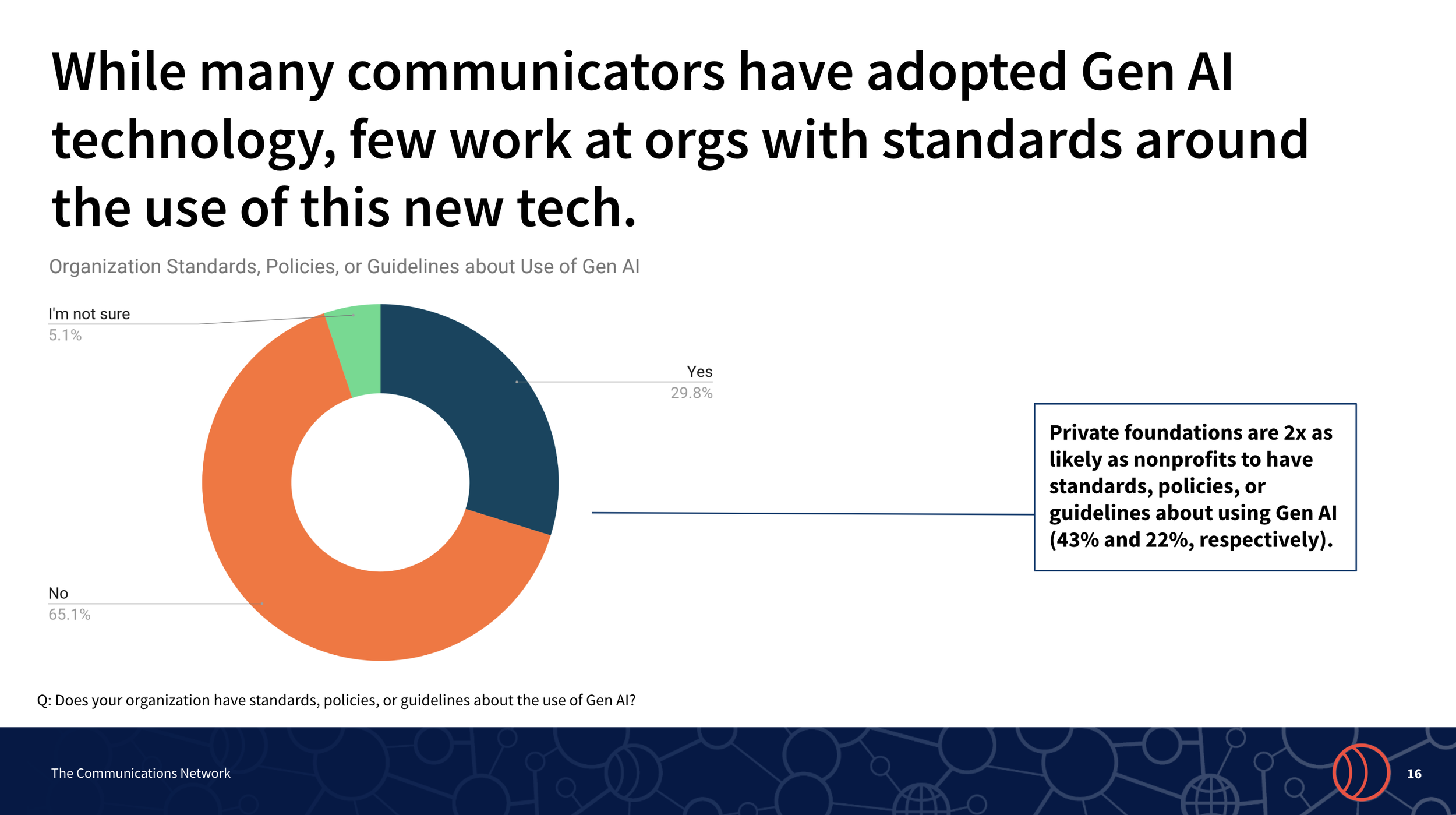
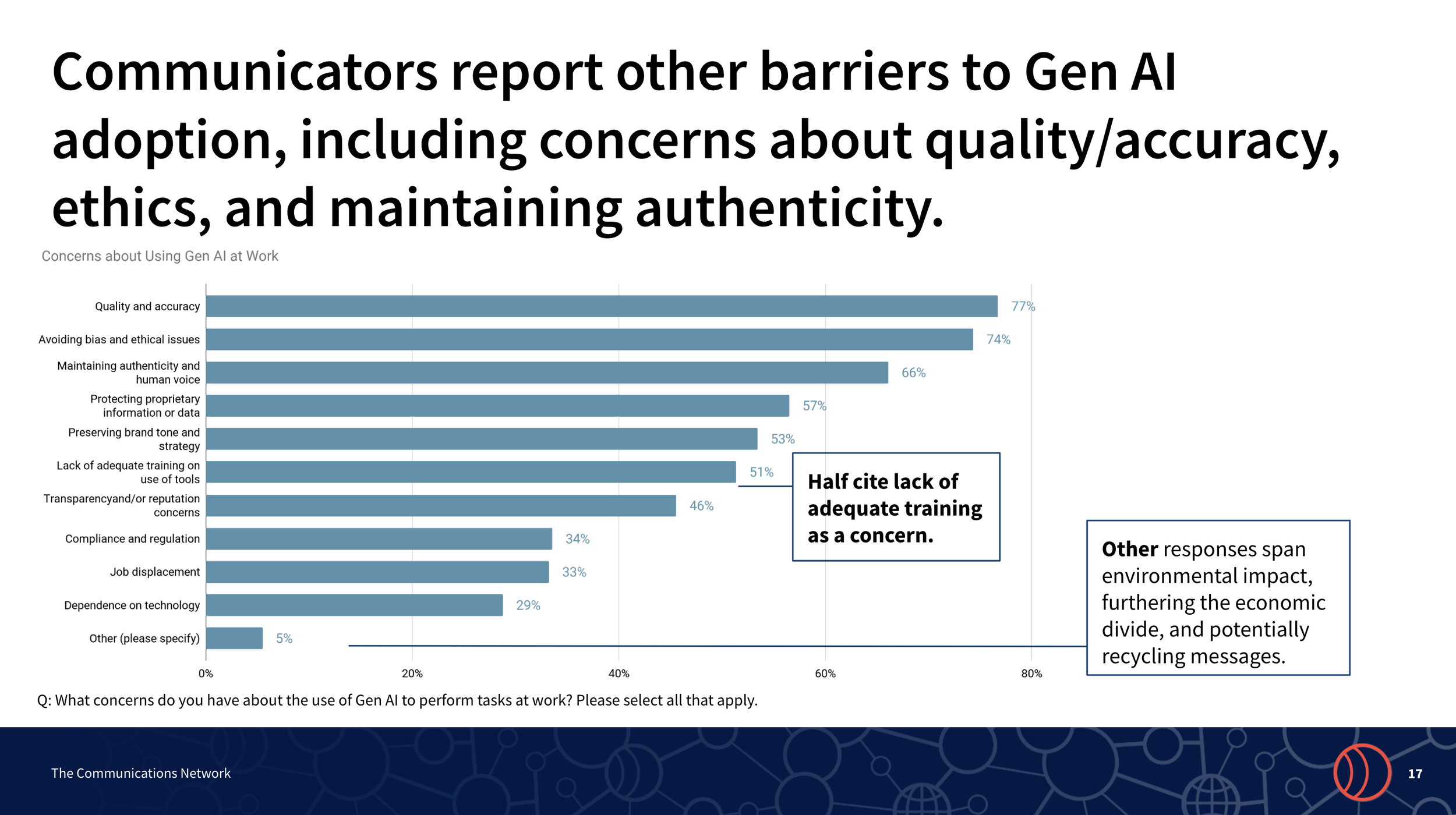

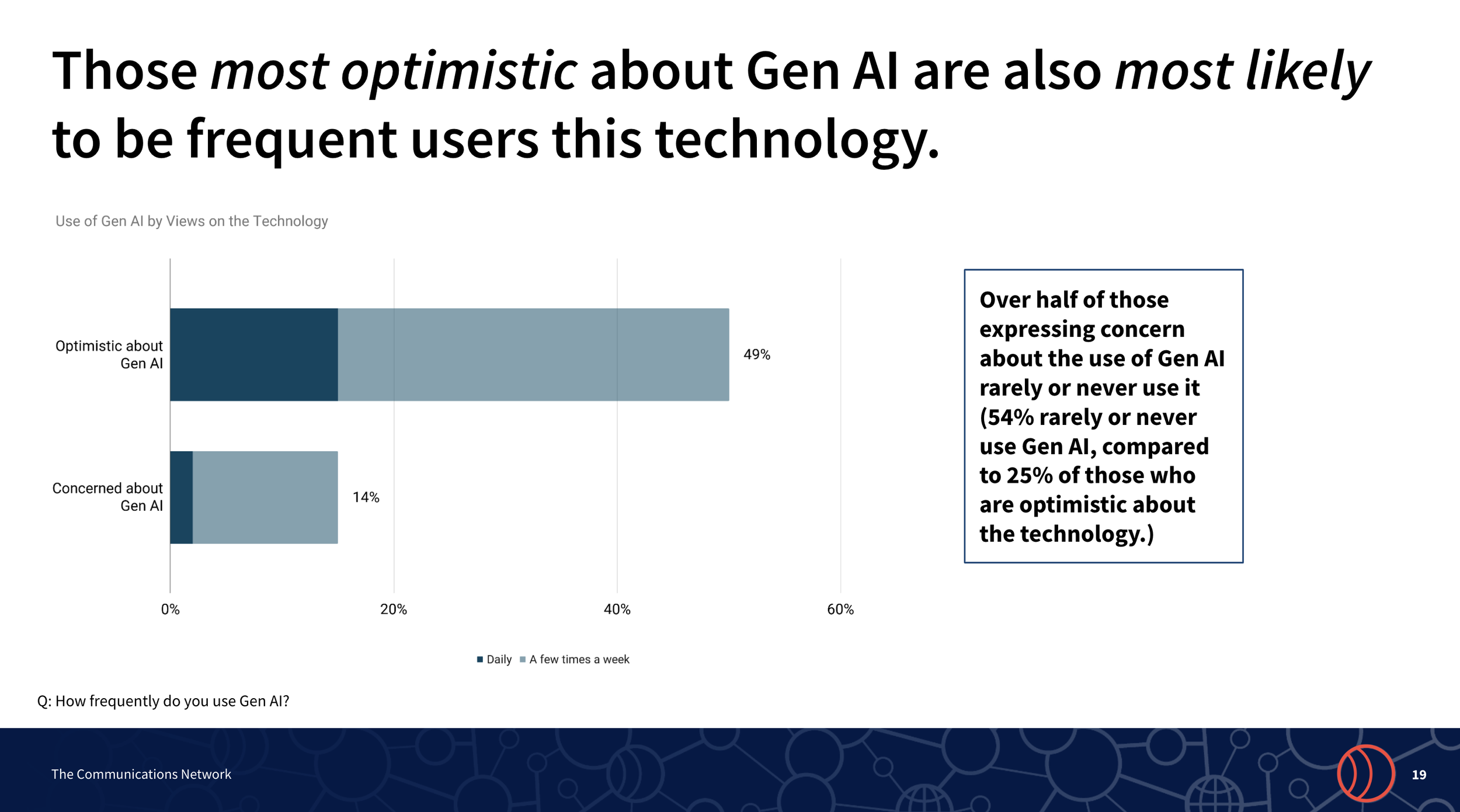
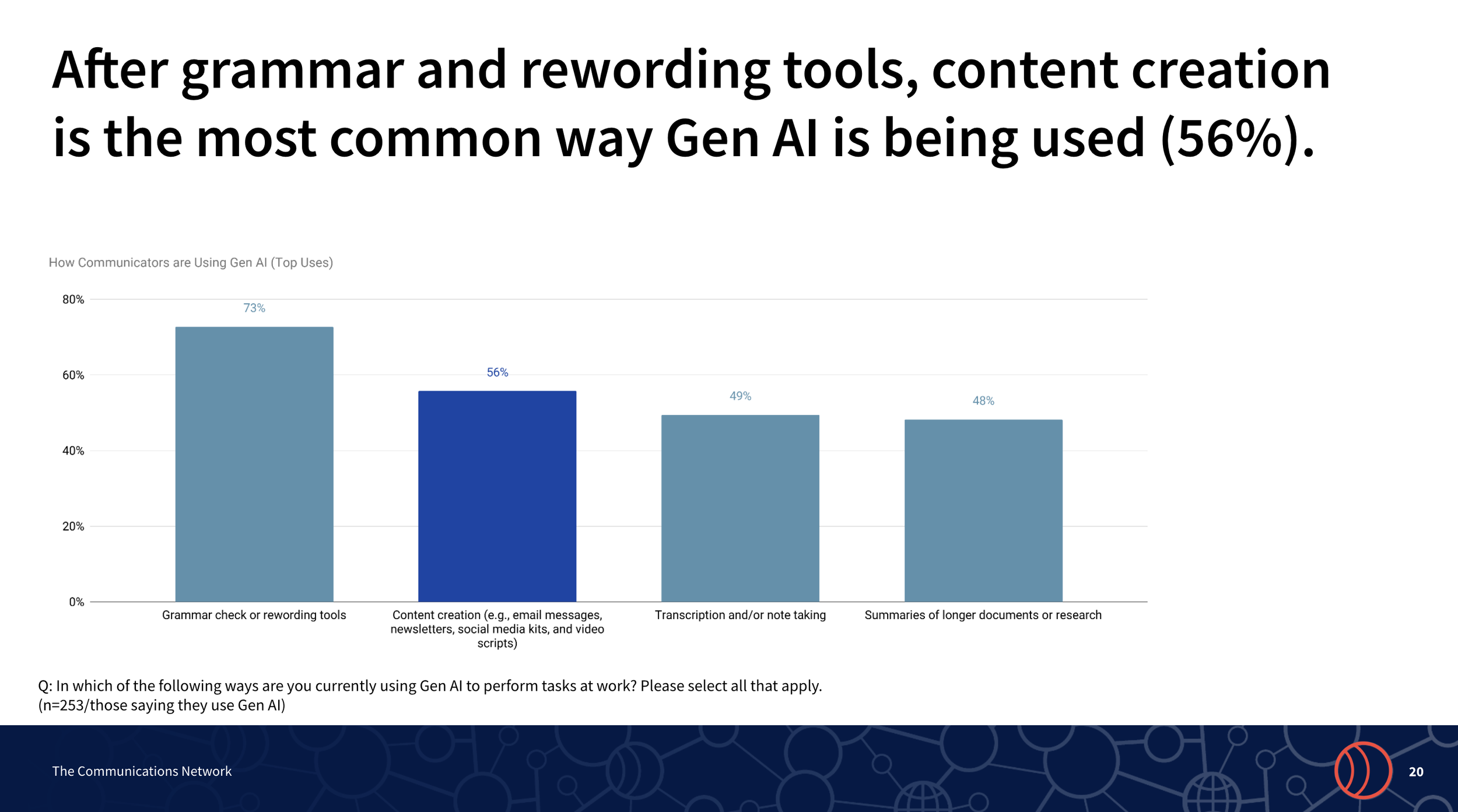
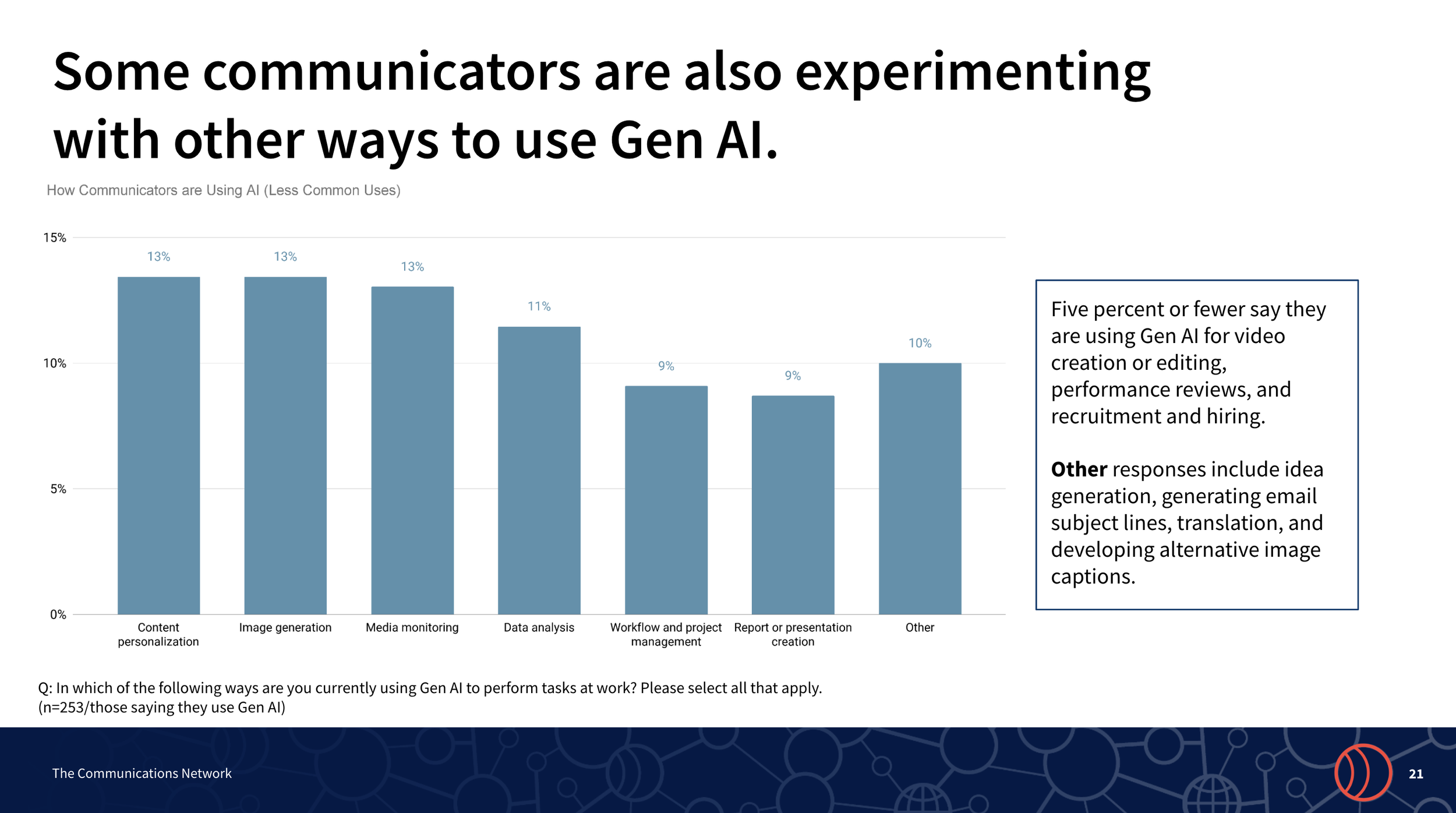
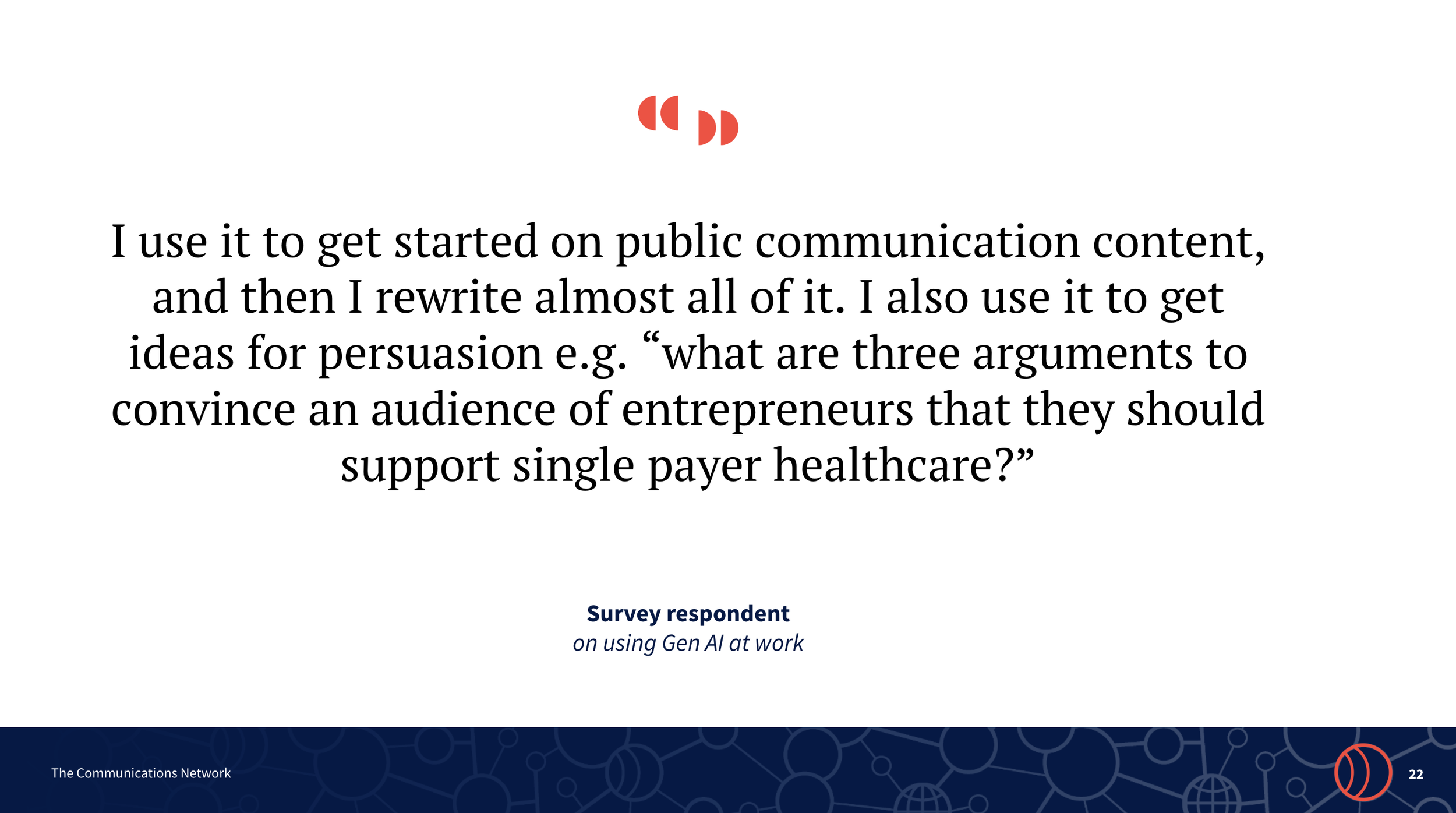
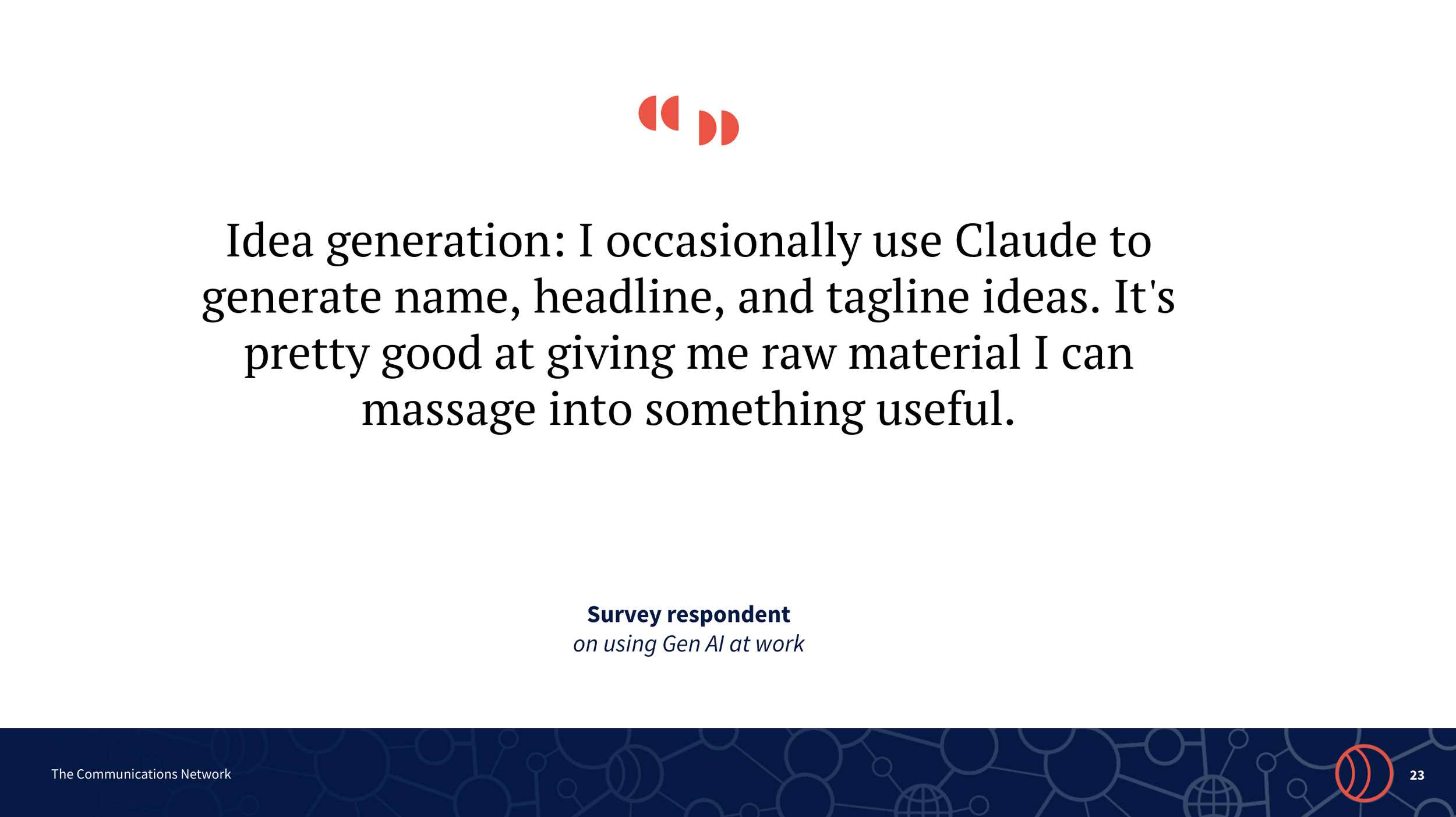
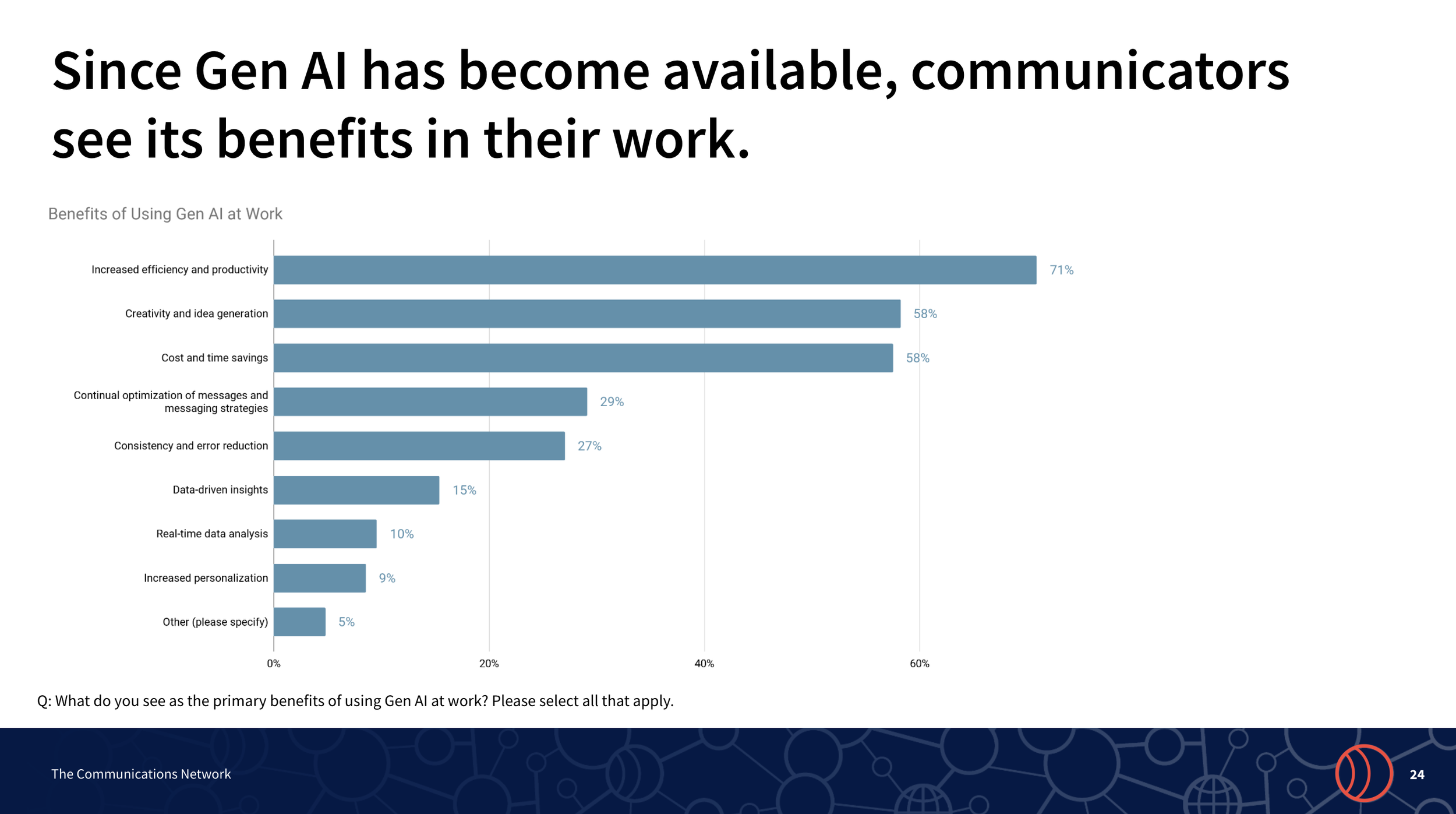
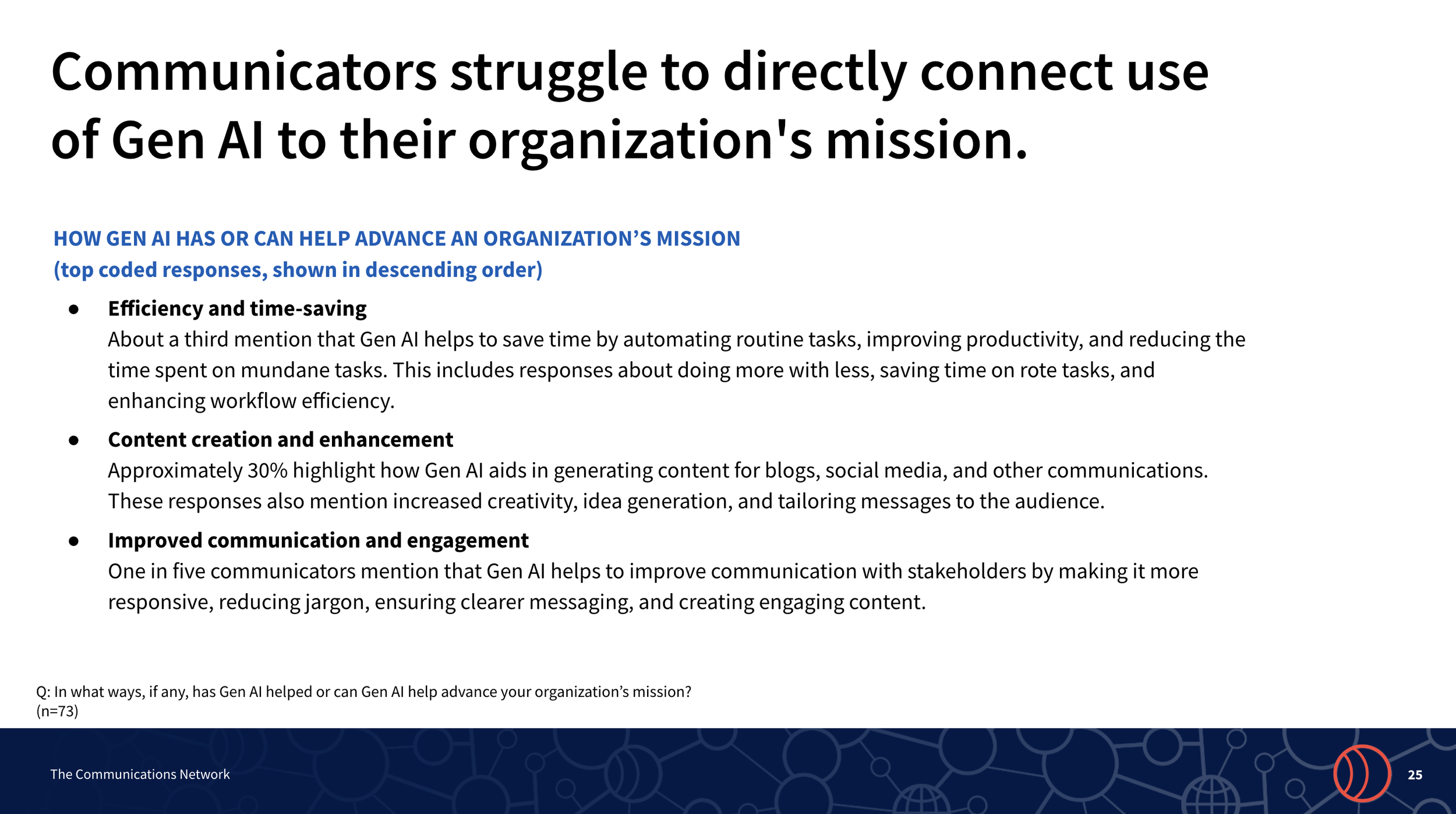
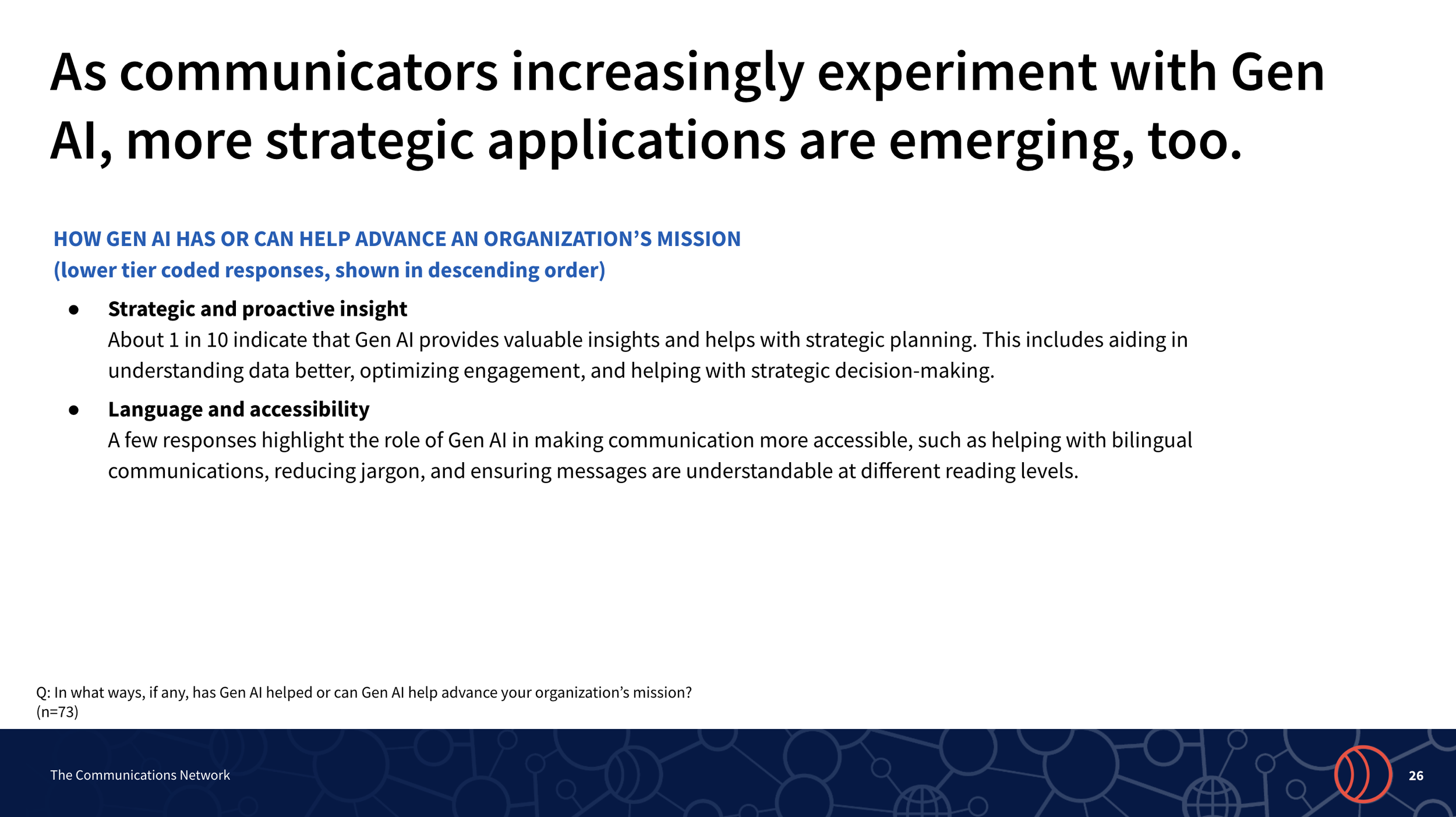
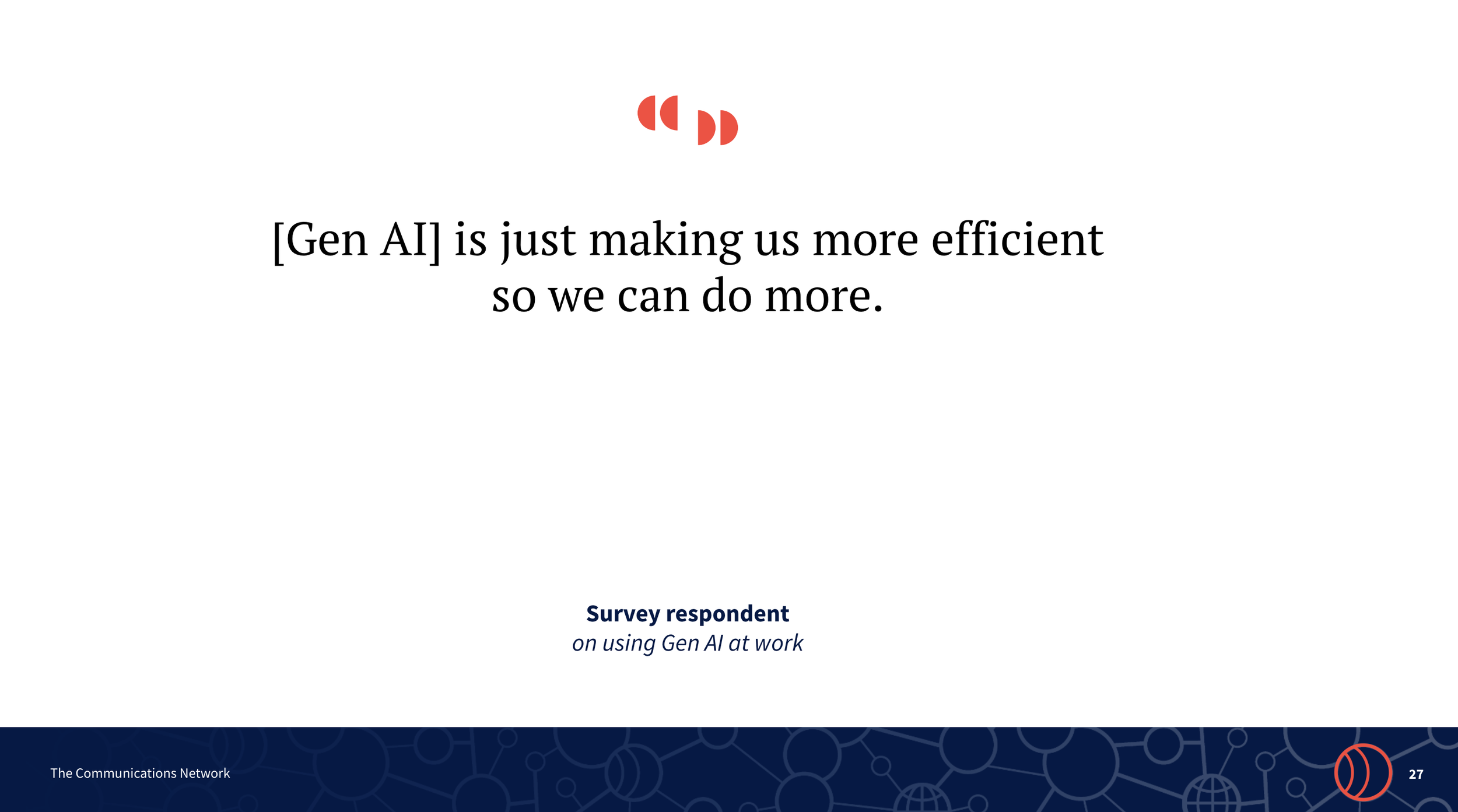
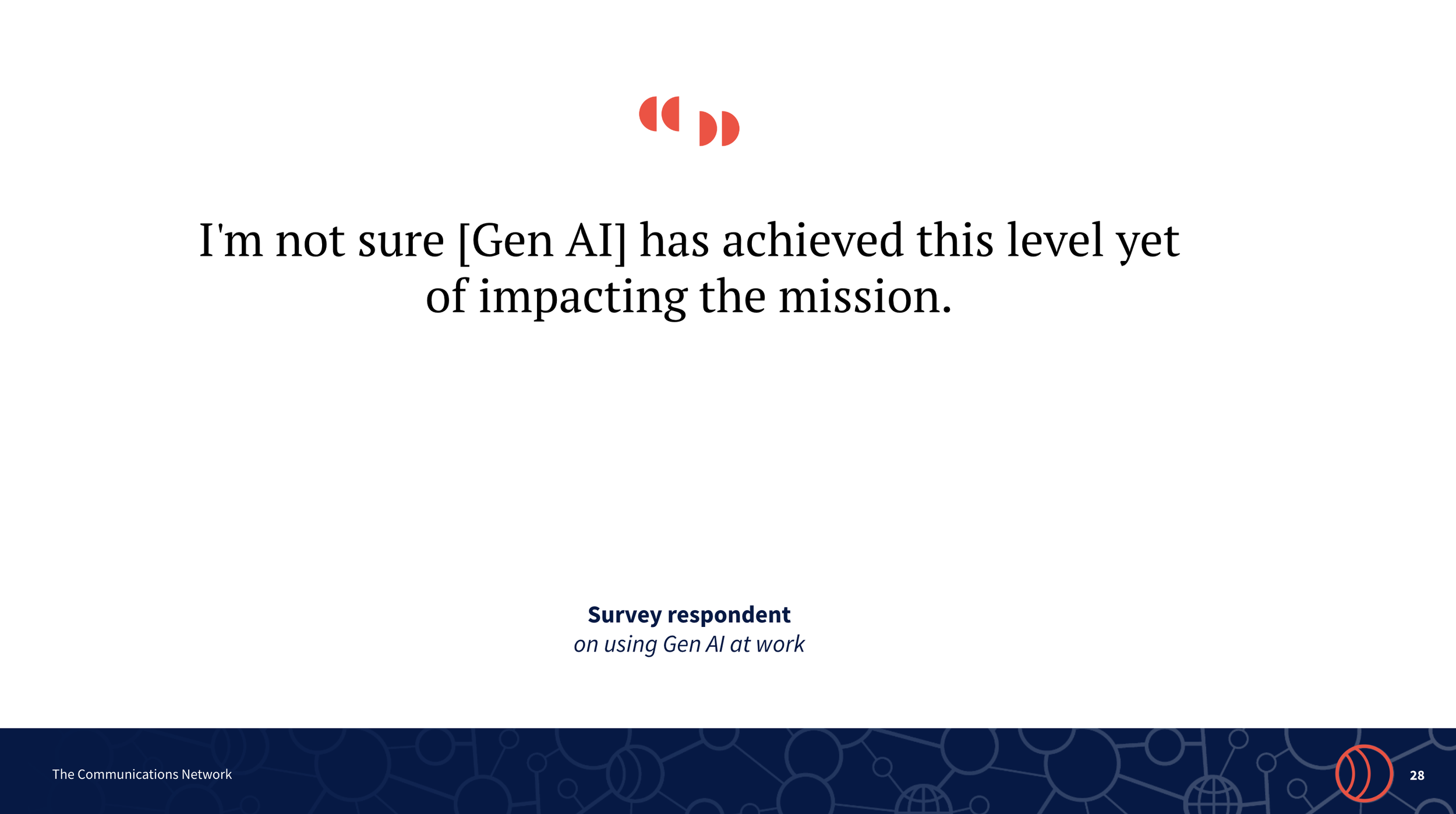
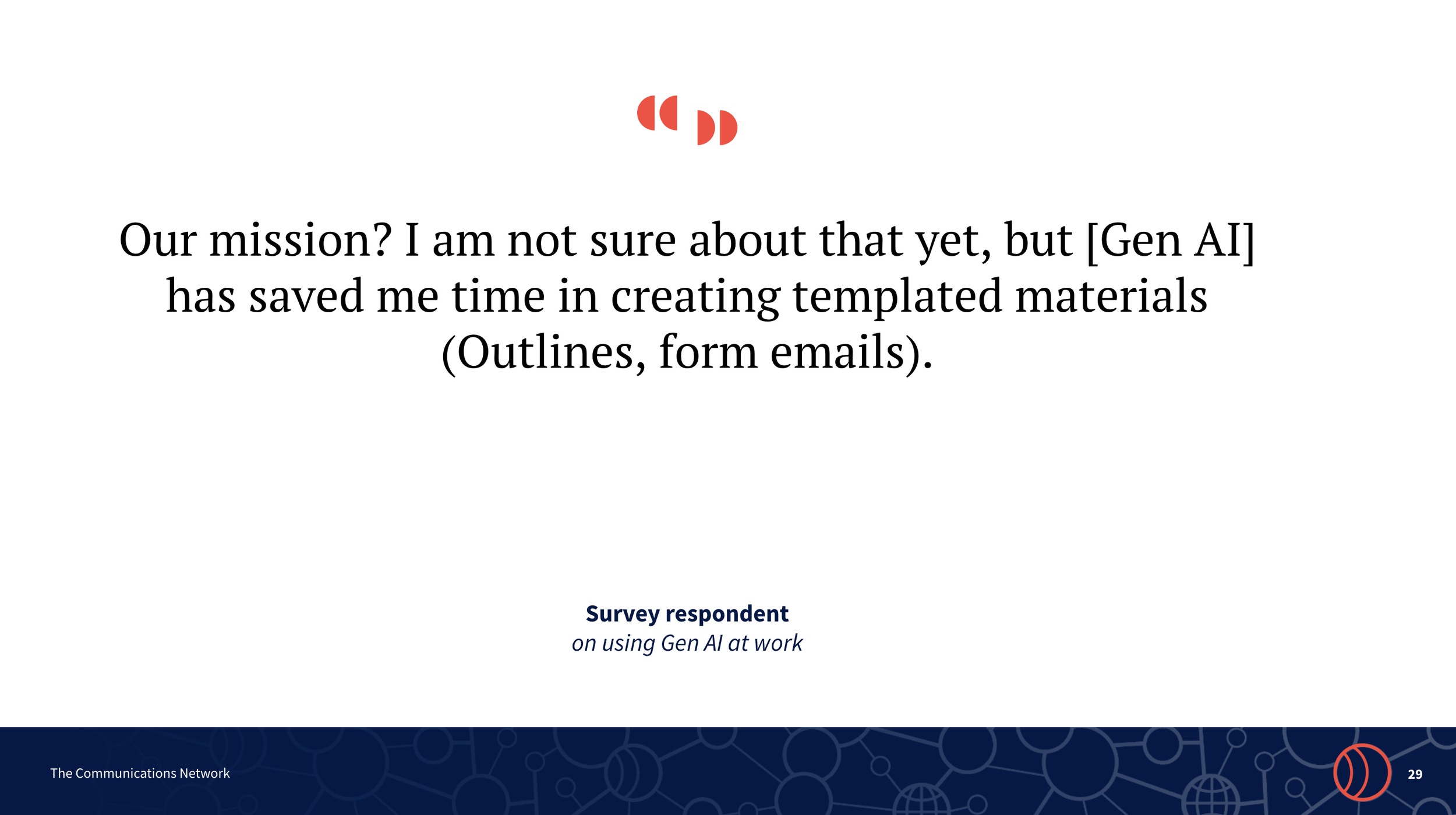
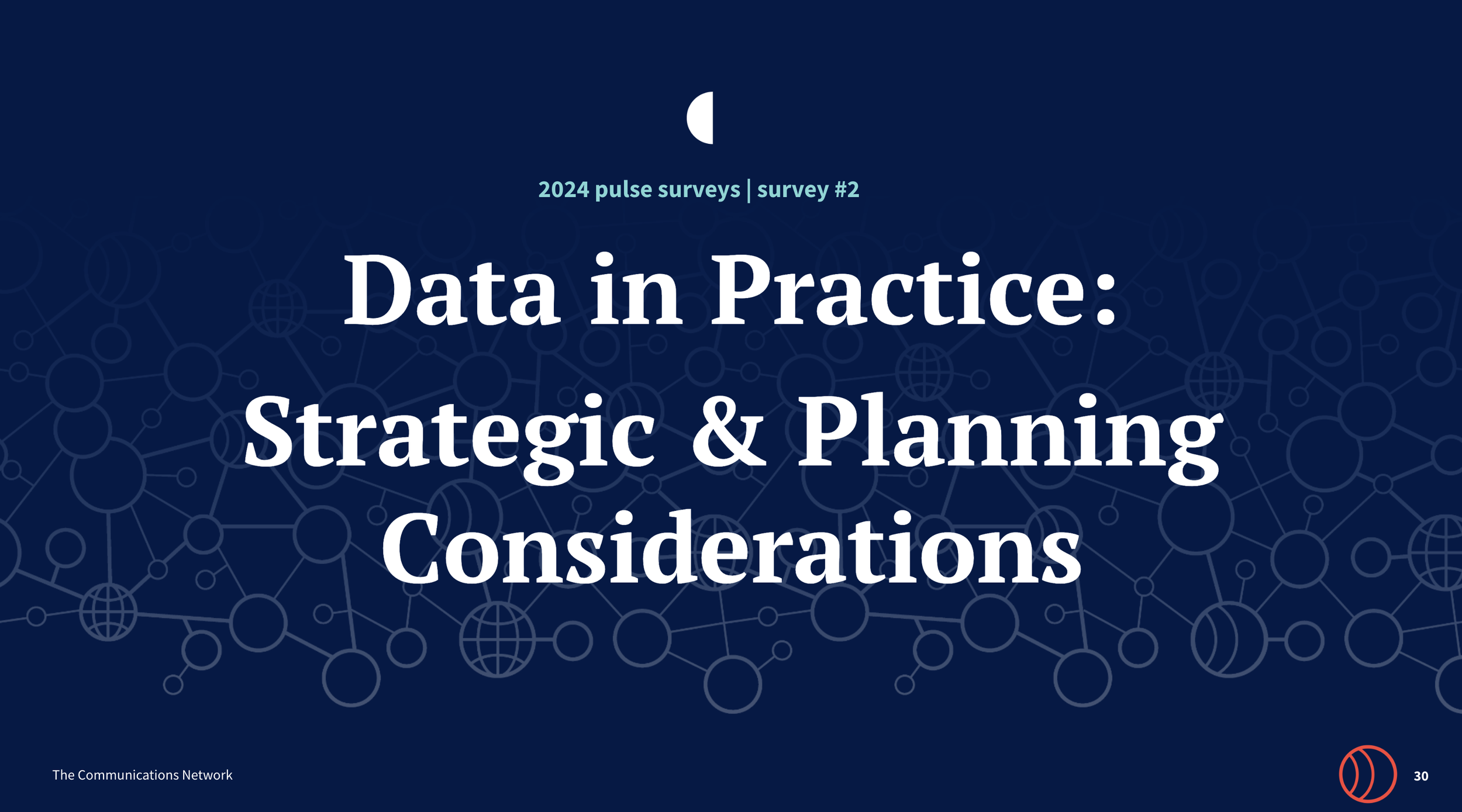

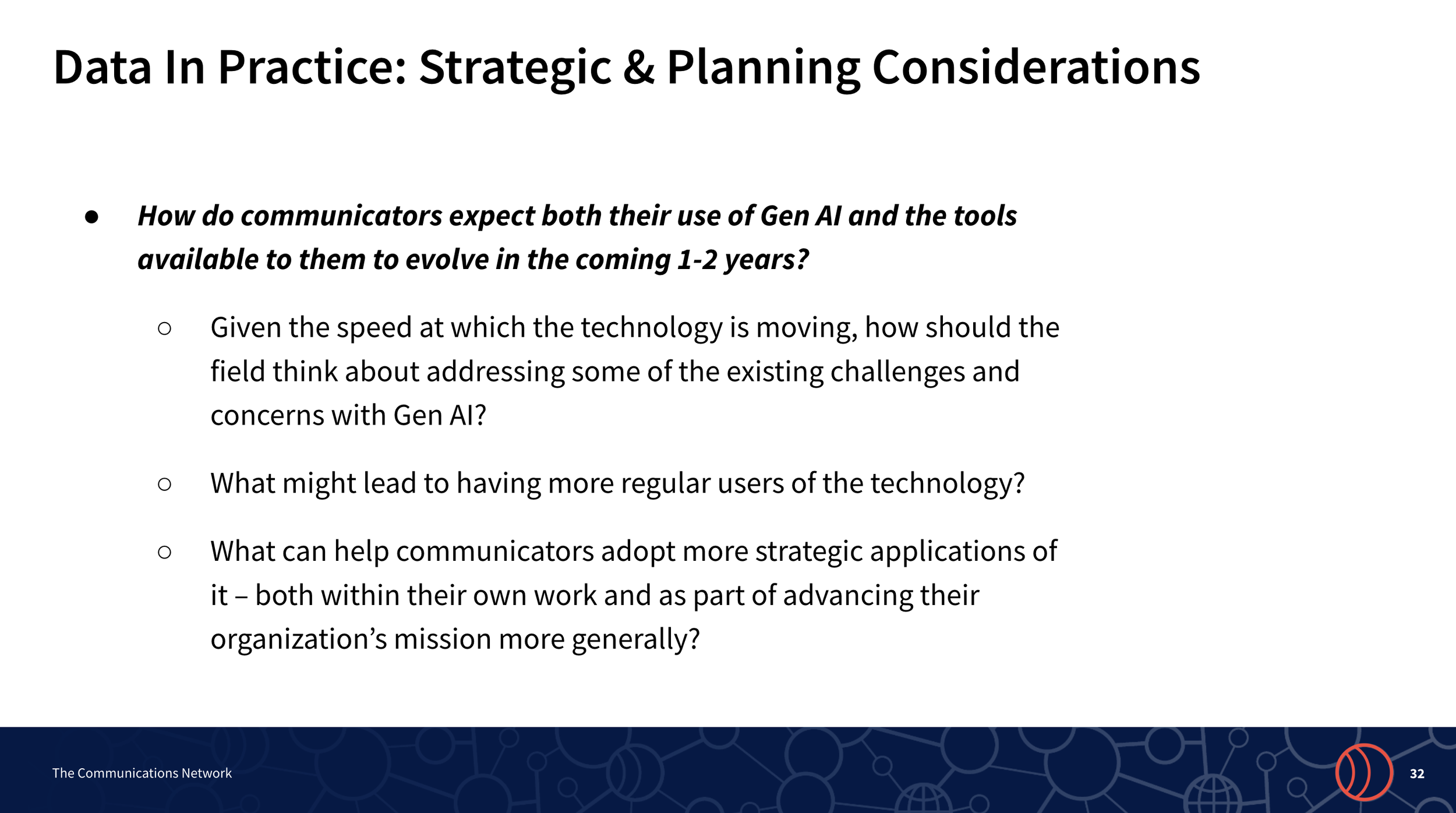
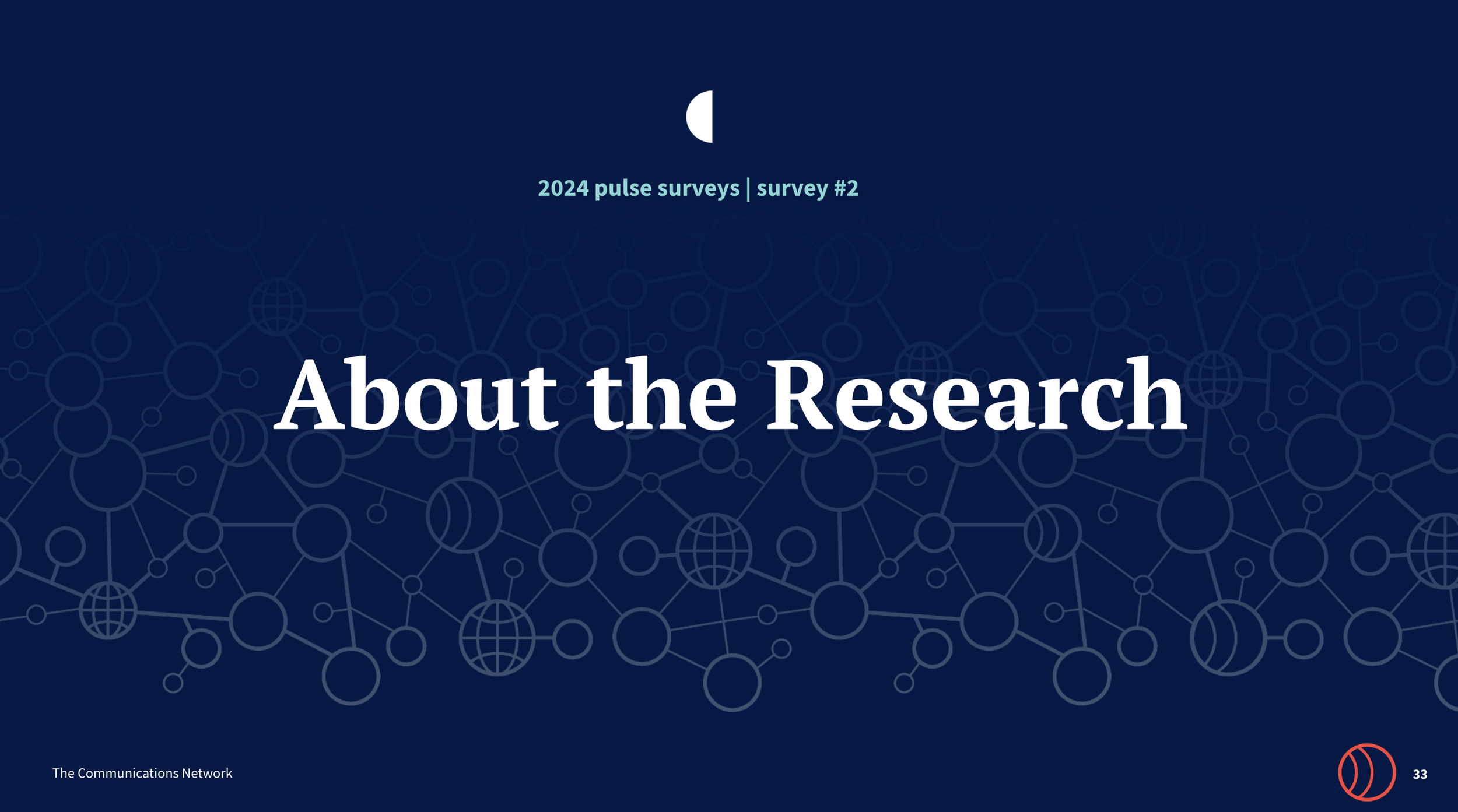
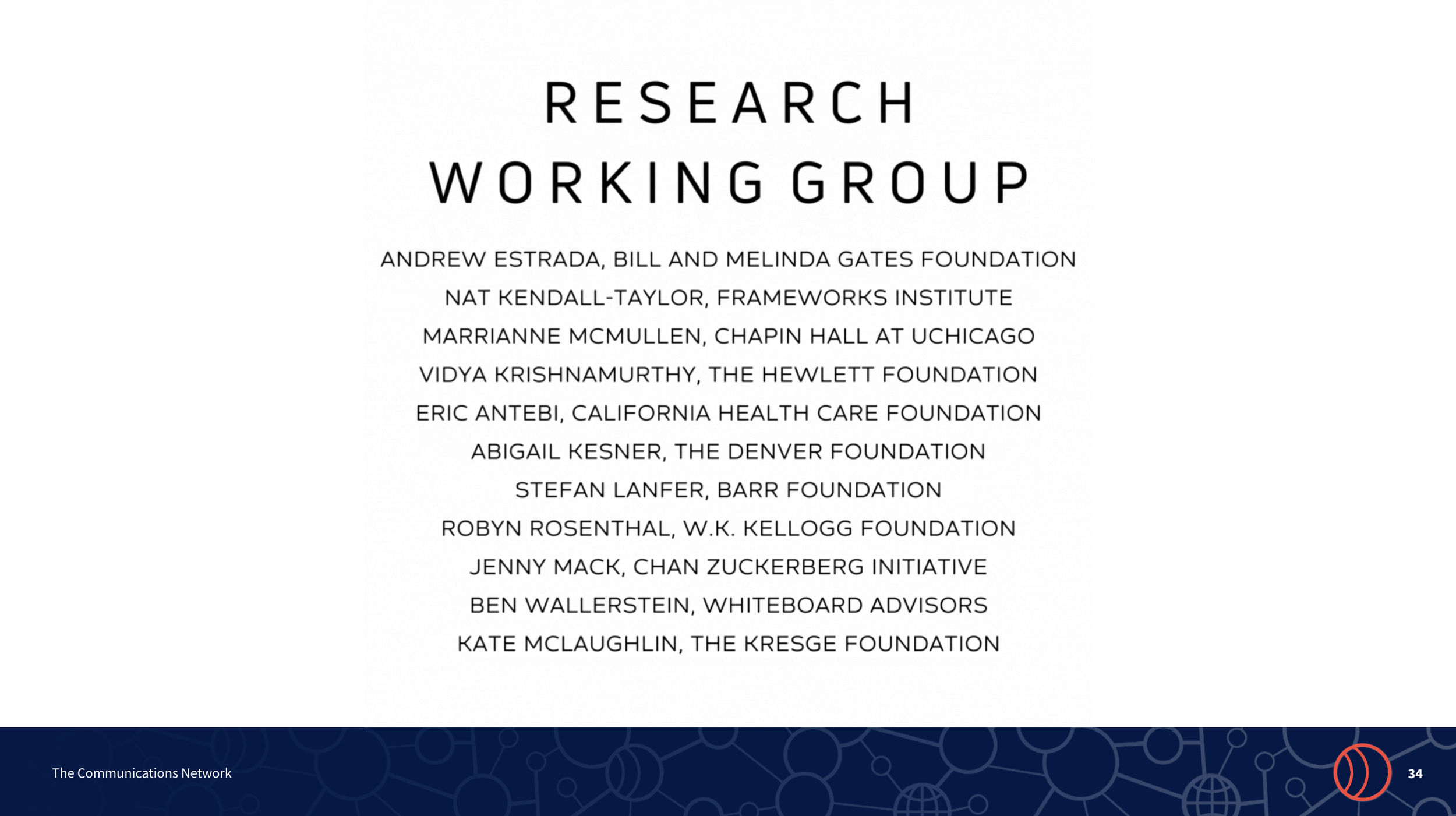
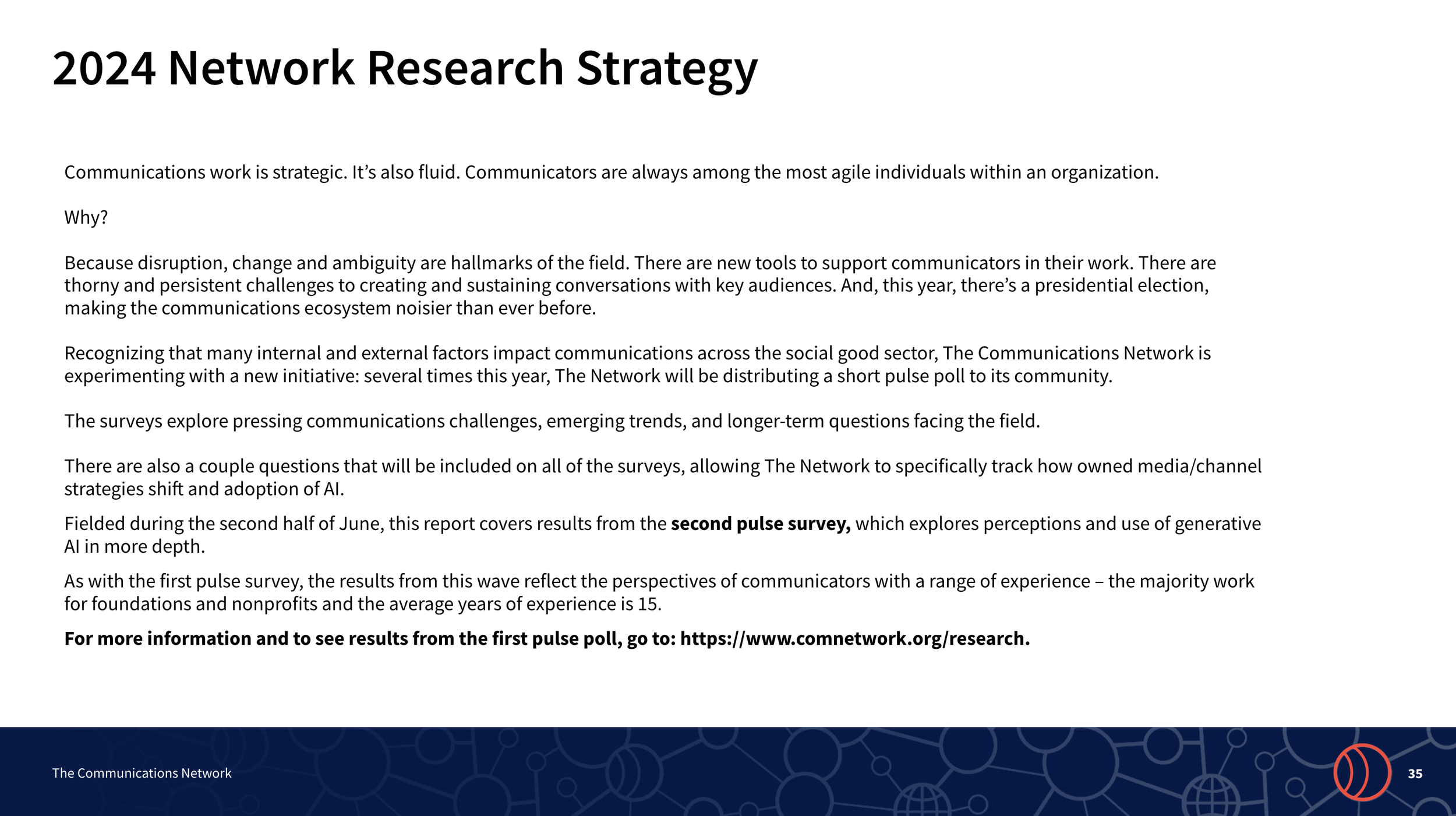
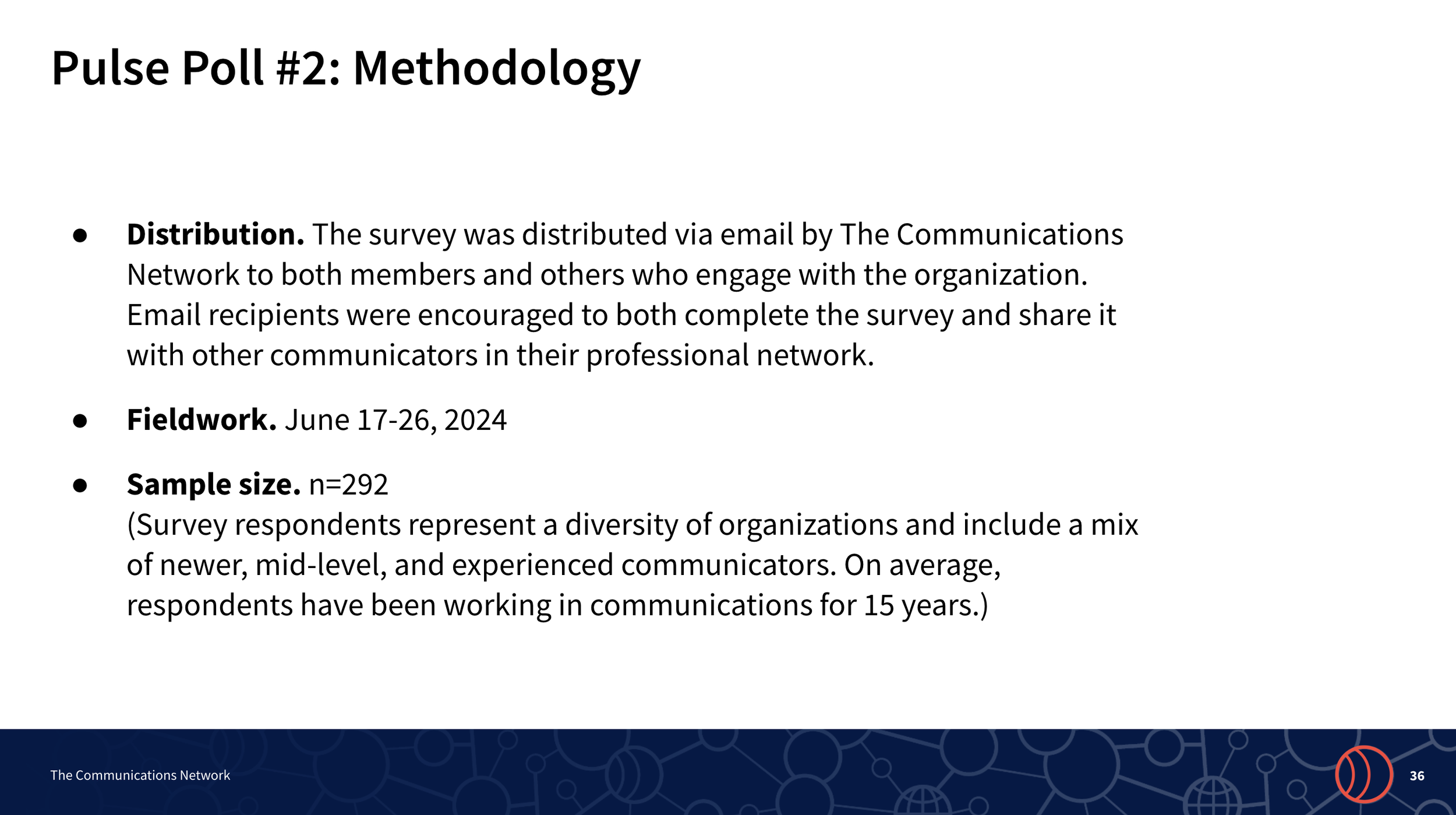
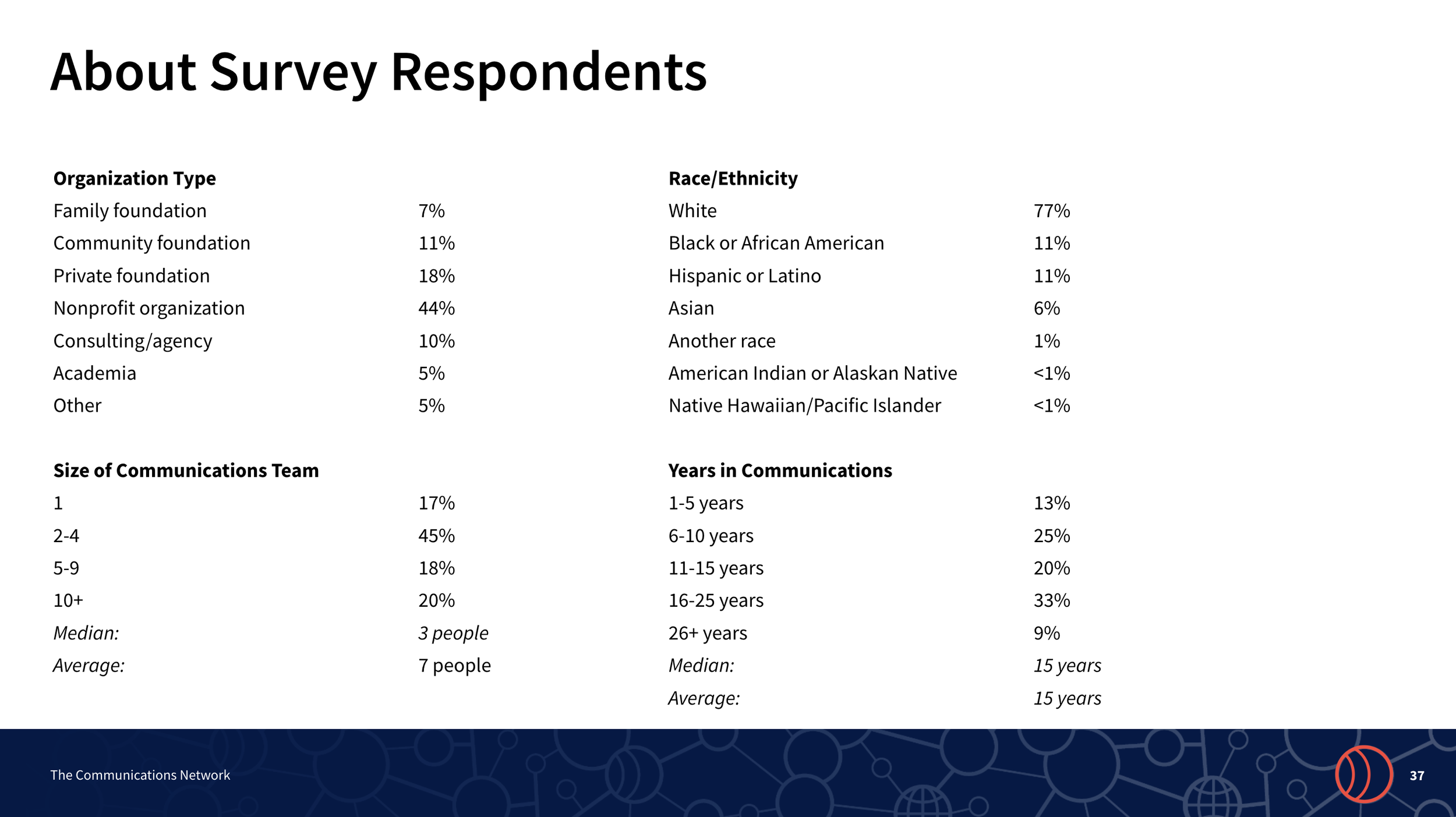
Insights: At a Glance
A culture of communications and the supports and resources required for a strong communications function are less prevalent at nonprofit organizations. This presents an opportunity to continue building a stronger field.
Communicators at private foundations are more likely than their nonprofit counterparts to strongly agree their organizations have a strong culture of communications.
Foundation communicators are also more likely to report being satisfied with
the supports to execute their work successfully compared to nonprofit communicators.
Communicators across the social good sector have identified tactical and strategic applications of Gen AI. They also express concerns about its use.
A vanguard group of regular Gen AI users seems to be emerging, with one third of respondents saying they use Gen AI tools at least weekly.
Still, few organizations have policies or guidelines in place for Gen AI, and a sizeable number of respondents express concerns about Gen AI including: accuracy and authenticity, ethical considerations, protecting proprietary information and data, and lack of training.
Culture of Communications
Communication Channel Priorities
2024 Presidential Election
Mis/disinformation & False Narratives
Channel Priorities
Artificial Intelligence

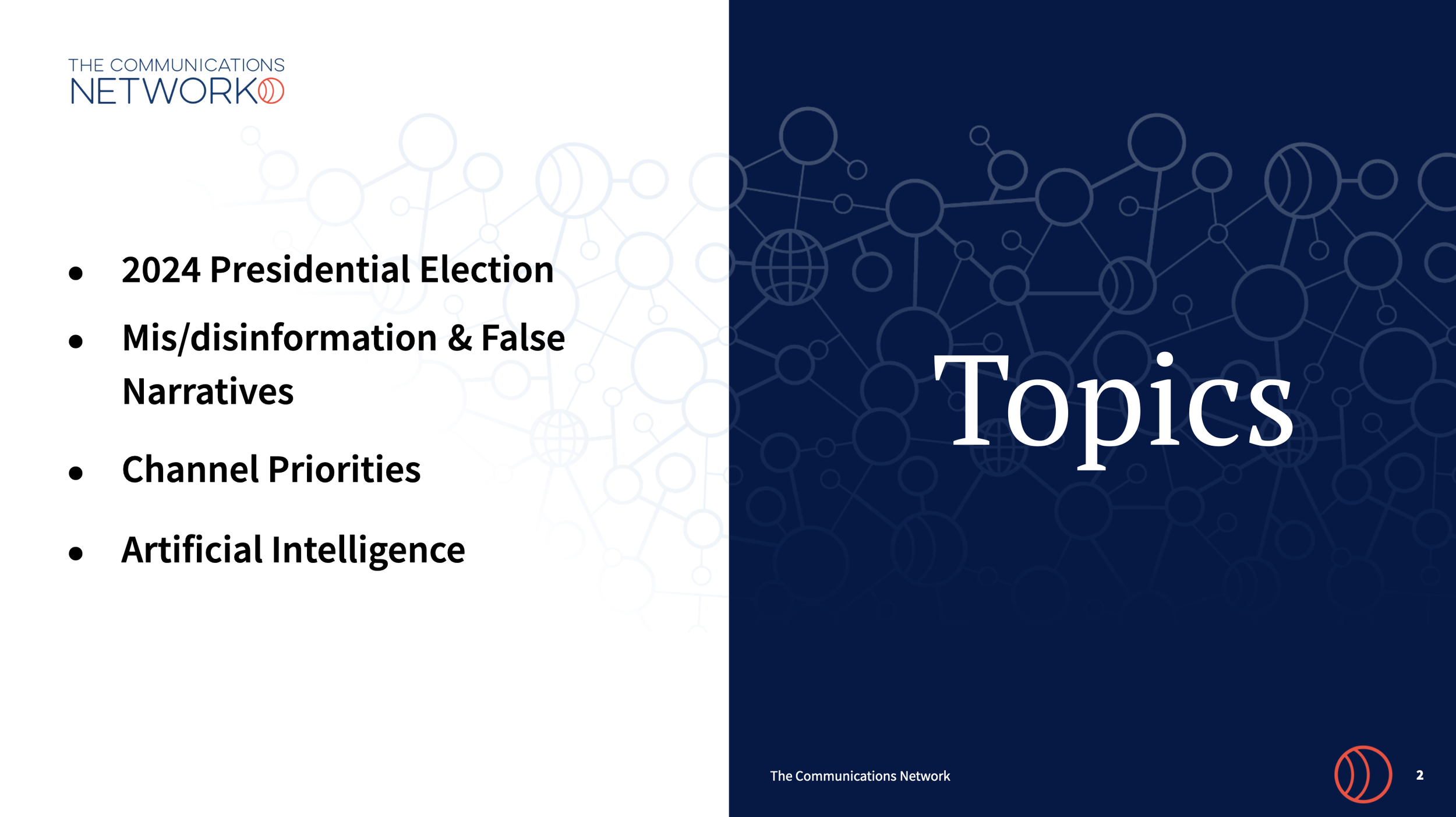















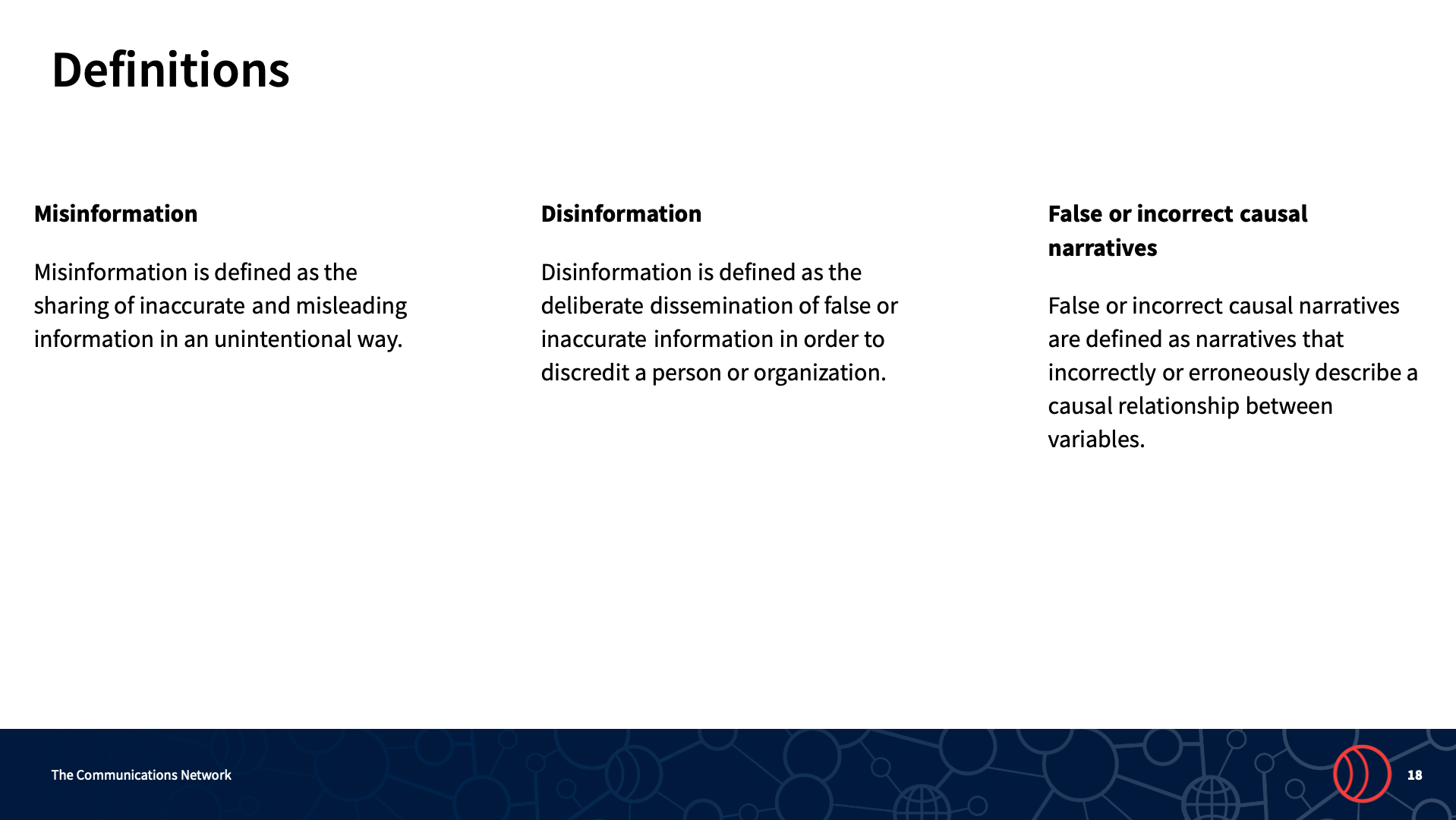












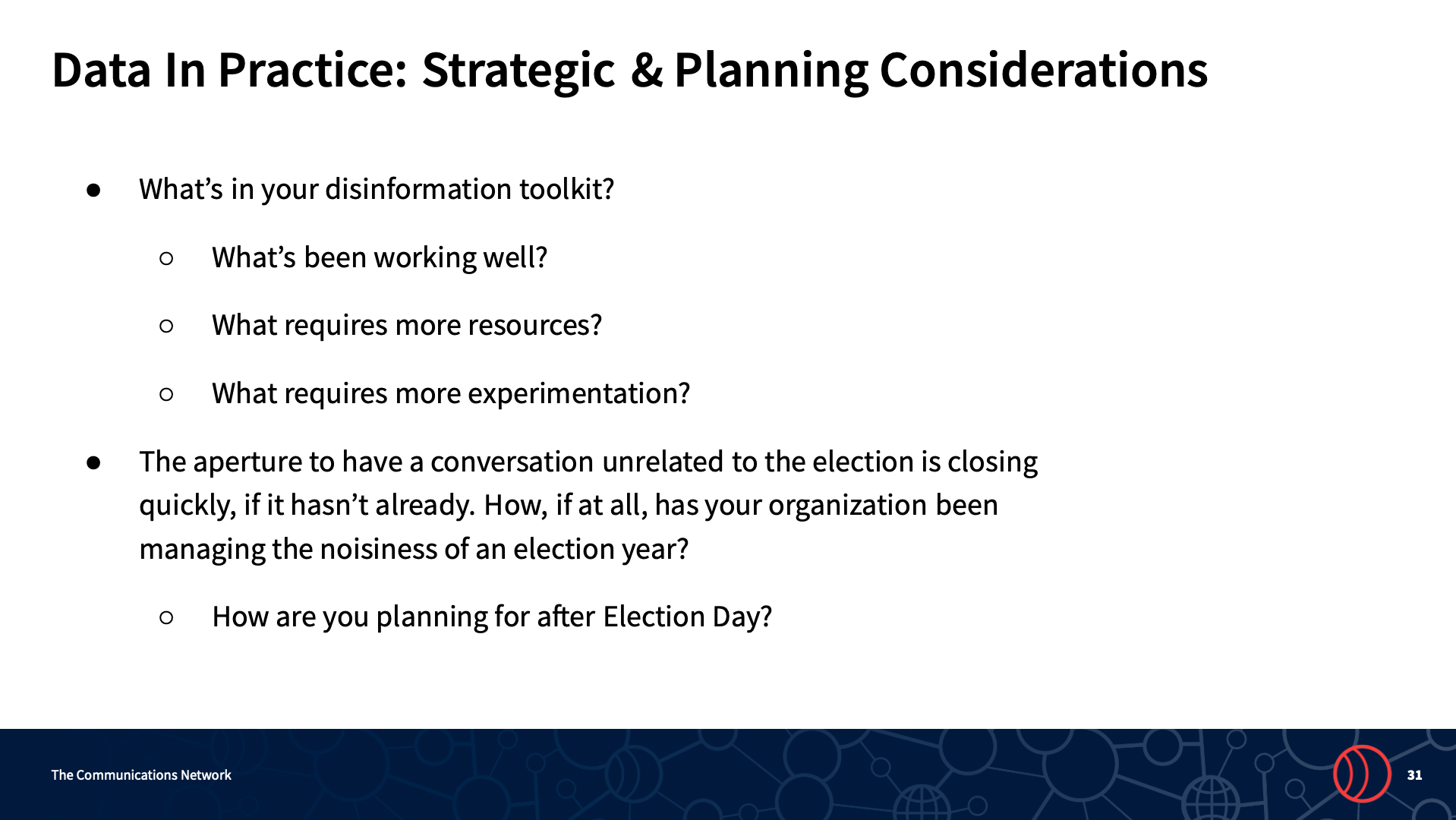

Insights: At a Glance
THE ECOSYSTEM
The information environment is crowded, loud, and is being disrupted by new technologies.
Foundation and nonprofit communicators are worried about morale across their organization and among partners as the presidential cycle heats up. They expect the election outcome will affect how communicators work, too.
On average, seven in 10 express concern about misinformation, disinformation, and false or incorrect causal narratives.
COMMUNICATIONS STRATEGIES AND TOOLS
AI has been adopted by nearly two thirds of the field.
Discourse on social media is impacting how and where communicators focus their time.
By a wide margin, LinkedIn emerges as the primary comms channel in the field/sector right now.
Limiting use of specific social media channels or opting out of others is a common strategy.
Fewer than 10 percent are using X/Twitter.
AI & Social Media
Presidential Election
About Network Research
Communications work is strategic. It’s also fluid. Communicators are always among the most agile individuals within an organization.
Why?
Because disruption, change and ambiguity are hallmarks of the field. There are new tools to support communicators in their work. There are thorny and persistent challenges to creating and sustaining conversations with key audiences. And, this year, there’s a presidential election, making the communications ecosystem noisier than ever before.
Recognizing that many internal and external factors impact communications across the social good sector, The Communications Network is experimenting with a new initiative: several times this year, The Network will be distributing a short pulse poll to its community.
The surveys will explore pressing communications challenges, emerging trends, and longer-term questions facing the field.
There are also a couple questions that will be included on all of the surveys, allowing The Network to specifically track how owned media/channel strategies shift and adoption of AI.






































